

TM 48 • 26 THE BUILDINGS OF GUIYANG • 30 TEXAS HISTORICAL COMMISSION 52 CHITECTURE 22 SKYSCRAPING • 32 • 37 NAMBA PARKS FORT WORTH SISTER CITIES DEC2018 • VOL 26 • ISSUE 4
Your best friend may not what you do; but






Your buddy may not get what you do; but IFMA does, and we give you the resources and tools to do it.
“No one understands the unique challenges and rising demands of facility management better than fellow FMs. Through IFMA and my local IFMA chapter, I connect with a community of colleagues that I can relate to, learn from and consult with for the benefit of my career, my team and my facilities.”
 Diane Coles-Levine, MCR IFMA Professional Member Managing Partner, Workplace Management Solutions
Diane Coles-Levine, MCR IFMA Professional Member Managing Partner, Workplace Management Solutions

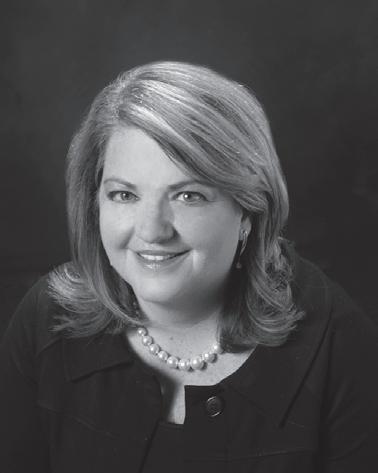

Make My IFMA, Your IFMA























































We do our job so that you can do yours.
connects and elevates recognition of facility professionals worldwide.

Membership benefits that work as hard as you do.
Local & Global Networking
FM Education & Training
Professional Credentialing























Industry-leading FMJ Magazine


FM-specific Conferences & Events











White Papers & How-to Guides


Industry Trend & Forecasting Reports
Knowledge Library Information Resource

Career Assistance & Job Search

Global Representation & Support
JOIN IFMA TODAY

Connect to the people, programs and opportunities that can help you optimize your facilities, improve workplace performance and advance your career as a facility management professional.

www.ifma.org/IFMA-YOU

We’ve had 45 presidents of the United States – 44 di erent men. (Grover Cleveland was the 22nd and the 24th president.) But not all of them have had middle names (or even just initials). In fact, only a little more than 50% have. See how many you know (and look up the rest). We’ve made it a little easier for you by listing all of the names below. Send your entry (by email to editor@crestnetwork.com or fax to 817.924.7116) on or before December 21st for a chance to win one of the prizes shown on pages 38 or 45 or another valuable prize.




presidential middle names
Answers in the network March 2019
Barack _______________ Obama

Herbert _______________ Hoover
Ronald _______________ Reagan

Chester _______________ Arthur
James _______________ Carter
Rutherford _______________ Hayes

Donald _______________ Trump

James _______________ Gar eld
Stephen _______________ Cleveland
Dwight _______________ Eisenhower

James _______________ Polk

Thomas _______________ Wilson
Franklin _______________ Roosevelt


John _______________ Adams
Ulysses _______________ Grant


George _______________ Bush
John _______________ Coolidge

Warren _______________ Harding
George _______________ Bush


John _______________ Kennedy

William _______________ Clinton



Gerald _______________ Ford
Lyndon _______________ Johnson

William _______________ Harrison



Harry _______________ Truman


Richard _______________ Nixon
William _______________ Taf

Milhous John Simpson Woodrow Birchard Jefferson Gamaliel Howard Walker Grover Delano Fitzgerald Abram Alan Rudolph Henry Earl Herbert Walker
Quincy
S. Calvin
Baines Wilson Knox
Hussein Clark David
ANSWERS FROM SEPTEMBER CONTEST 51 BACK UP GROUPS
Joan Jett & (the Blackhearts)
Bruce Springsteen & (the e-Street Band)
Gladys Knight & (the Pips)
Lionel Richie and (the Commodores)
KC and (the Sunshine Band)
Frankie Lymon and (the Teenagers)
Paul Revere and (the Raiders)
Tom Petty and (the Heartbreakers)
Martha Reeves and (the Vandellas)
Bill Haley and (the Comets)
Sly and (the Family Stone)
Dion and (the Belmonts)
Tommy James and (the Shondells)
Kool and (the Gang)
Huey Lewis and (the News)
Elvis Costello and (the Attractions)
Sting and (the Police)
Hootie and (the Blow sh)
Prince and (the Revolution)

Bruce Hornsby and (the Range)
Bob Seger and (the Silver Bullet Band)
Booker T and (the MGs)
Smokey Robinson and (the Miracles)
Little Antony and (the Imperials)
Stevie Ray Vaughn and (Double Trouble)
Bruce Springsteen and (the E Street Band)
Iggy Pop and (the Stooges)
Florence and (the Machine)
Buddy Holly and (the Crickets)
Junior Walker and (the All-Stars)
Wayne Fontana and (the Mindbenders)
Jerry and (the Pacemakers)
Gary Lewis and the Playboys)
Frankie Valli and (the Four Seasons)

Dina Ross and (the Supremes)
Sam the Sham and (the Pharaohs)
Archie Bell and (the Drells)
Bob Marley and (the Wailers)
Cannibal and (the Headhunters)
Dr. Hook and (the Medicine Show)
Eric Burdon and (the Animals)
Frank Zappa and (the Mothers of Invention)
Freddie and (the Dreamers)
Gary Puckett and (the Union Gap)
Congratulations to all of our prize winners!
Gloria Estefan and (the Miami Sound Machine)
Jay and (the Americans)
Ronny and (the Daytonas)
Mike and (the Mechanics)
Patti Labelle and (the Bluebelles)
James Brown and (the Fabulous Flames)
Linda Ronstadt and (the Stone Ponies)
Shandra Tompkins of Corpus Christi won Earin earphones; Justin Dahood of Midland won a Matias keyboard; Krystin Allyson of Denton won a Braven Bluetooth speaker; Rachel McAdams of Kerrville won a Martian watch; Emma Eddleston of Sugarland won a copy of Saving Capitalism by Robert Reich; and Noah Smith of Mans eld won an iDevices Switch.
ANSWER FROM PAGE 49: YOU’RE GOING TO CALL ME WHAT?

1 Dagwood Bumstead is a main character in cartoonist Chic Young's long-running comic strip Blondie. He rst appeared some time before February 1933. He was originally heir to the Bumstead Locomotive fortune but was disowned when he married a apper (originally known as Blondie Boopadoop) whom his family saw as below his class. He has since worked hard at J. C. Dithers & Company (currently as the construction company's o ce manager) to support his family. The Bumsteads' rst baby, Alexander, was originally named Baby Dumpling. The name of his younger sister, Cookie, was chosen by readers in a national contest. The family circle is rounded out by Daisy the dog.

2 Crusader Rabbit was the rst animated series produced speci cally for television. His sidekick was Ragland T. Tiger, or "Rags", and the stories were 4-minute-long satirical cli hangers. The initial serial – Crusader vs. the State of Texas – aired on KNBH (now KNBC) in Los Angeles beginning on August 1, 1950 and was syndicated from 1950 to 1952 for 195 episodes; it was revived in 1959 for 260 color episodes. Jay Ward, who went on to create The Rocky and Bullwinkle Show, was involved as business manager and producer.
3 Li'l Abner Yokum was a satirical American comic strip that appeared in many newspapers in the United States, Canada and Europe, featuring a ctional clan of hillbillies in the impoverished mountain village of Dogpatch, USA. Written and drawn by Al Capp (1909–1979), the strip ran for 43 years, from 1934 through 1977. The comic strip had 60 million readers in over 900 American newspapers and 100 foreign papers in 28 countries. Daisy Mae Yokum (née Scragg) was hopelessly in love with Li’l Abner but the impossibly
dense Abner exhibited little romantic interest in her voluptuous charms.

4 Little Lulu was a comic strip created in 1935 by Marjorie Henderson Buell. The character, Lulu Moppet, debuted in The Saturday Evening Post in 1935 in a single panel, appearing as a ower girl at a wedding and mischievously strewing the aisle with banana peels. It continued to run weekly in The Saturday Evening Post until 30 December 1944. A daily comic strip, entitled Little Lulu, was syndicated from 5 June 1950 through May 1969. In 1995 stories from the comic book were adapted for The Little Lulu Show, an HBO animated series.
5 Formerly known as "Dr. G. Ra e" in 1950s print advertisements for Children's Bargaintown, Geo rey the Gira e evolved in name and appearance over the next decade to become the o cial mascot of the renamed Toys "R" Us. Serving as a spokesanimal for the brand, Geo rey's design went through several phases over the next 50+ years before the nal star-spotted iteration which began in 2007.
6 Forsythe Pendleton "Jughead" Jones III is one of the ctional characters created by Bob Montana and John L. Goldwater in Archie Comics who rst appeared in December 1941. He has a white sheepdog named Hot Dog and a younger sister, Forsythia "Jellybean" Jones. Jug or Juggie is the best friend of Archie Andrews. He is a smart, sharp-tongued, laidback, easy going and eccentric high school student, obsessed with eating food. Most see him as being lazy. He can be identi ed by his long nose, half-closed eyes, "S" sweatshirt, and crown-like button beanie hat, called a whoopee cap.

We’ll also look at sister cities in Texas - a form of legal or social agreement between towns, cities, counties, oblasts, prefectures, provinces, regions, states, and even countries in geographically and politically distinct areas to promote cultural and commercial ties. Pro le of Contributing Editor Tony Barbieri’s Legal View looks at medical o ce buildings’ issues related to the Federal False Claims Act, the Federal Anti-Kickback Law and the Stark Act and how they impact impact landlords in the medical-o ce space. [The federal AntiKickback Statute is a healthcare fraud and abuse statute that prohibits the exchange of remuneration—which the statute de nes broadly as anything of value—for referrals for services that are payable by a federal program, which, in the context of healthcare providers, is Medicare. The Stark Law is a set of United States federal laws that prohibit physician self-referral, speci cally a referral by a physician of a Medicare or Medicaid patient to an entity providing designated health services (“DHS”) if the physician (or an immediate family member) has a nancial relationship with that entity.] Contributing Editor Rose-Mary Rumbley’s Herstory looks at Alice, Texas – a little town with big stories. Contributing Editor Angela O’Byrne’s Amazing Buildings examines an upcoming project in Norway called Under. It will be Europe’s rst underwater restaurant and is designed to become a mussel reef. We’ll pro le Overland Partners, a San Antonio-based architecture rm recognized for its design throughout the world and mission to make physical transformations lead to human ones, and Foster + Partners, an award-winning British architectural design and engineering rm whose Bloomberg HQ won the 2018 Stirling Prize.


We’ll continue our look at Sister Cities, this time focusing on Austin and Houston. We look at the spectacular National Veterans Museum in Columbus, OH, at some astounding statistics about prisons in Texas. And James Kennedy, founder and CEO of SteepSteel er insightful guidance to brokers about the downward trend in pricing and how it’s impacting the real estate side of the cell tower industry. Of course, we will have our a liates’ news and events, UnReal Estate, the Wow Factor, Diversions, You Need to Know, Political Corner, You’re Going to Call Me What, In the Loop, Real Estate of the Future, our quarterly Contest and much MUCH more.
The problem with sex in the movies is, that the popcorn usually spills.
THE NETWORK | DECEMBER 2018 62
index to our advertisers Anderson Paving...................... 60 www.andersonpaving.com Arsenal Business Collections.............................. 43 www.thearsenalcompanies.com Arsenal Mediation Services................................ 51 www.thearsenalcompanies.com Chamberlin Roofing............................................. ...... 61 www.chamberlinltd.com Construction Consulting International............ 60 www.sunited.com Fort Worth Paving Solutions............ 60 facebook@concreteandasphaultpaving.com IFMA................................................................... 2, 64 www.ifma.org Image Building Maintenance.......................... 9, 60 www.imagebuildingmaintenance.com IREM – Dallas …………………… 12,13 www.irem-dallas.org K Post Roof............................................................ 61 www.kpostcompany.com Kessler Collins..................... .................................... 60 www.kesslercollins.com Lynous Turnkey Solutions.......................................... 60 www.lynous.com Master Construction & Engineering......................... 60 www.masterconstruction.com Nevill Document Solutions .................................... .17 www.nevillsolutions.com Reliable Paving.................................................... . 3, 60 www.reliablepaving.com R.L. Murphey Commercial Roof Systems............ ... 61 www.rlmurphey.com Synthetic Grass Pros............................................... .... 15 www.syntheticgrasspros.com UBM Janitorial Services………………………………19 www.ubmhq.com
Huh?
Think of a number from 1 to 10. Multiply that number by 9.



If the number is a 2-digit number, add the digits together.



Now subtract 5.

Determine which letter in the alphabet corresponds to number you ended up with. (example 1=A, 2=B, etc.)


Think of a country that starts with that letter.



Remember the last letter in the name of that country. Think of the name of an animal that starts with that letter.
Are you thinking of kangaroos in Denmark?
• ROOFING • 214-273-9110 www.chamberlinltd.com www.rlmurphey.com New Construction Reroofng Service & Maintenance 24/7 Emergency Repair Service by calling 214.995.8446 ANY CATEGORY YOU CHOOSE Up ’n Down ELEVATOR COMPANY Servicing all of Texas since 1973 • Inspections, Maintenance, Modernization www.youradhere.com • 1-800-ADSWORK DECEMBER 2018 | THE NETWORK 61 Reach Your for Less! Links listings require a 4-issue (non-cancellable) commitment 1” Full Color . . . . . . . $138 per issue 2” Full Color . . . . . . . $193 per issue 3” Full Color . . . . . . . $275 per issue Advertising Opportunities in The New Digital Network! www.crestnetwork.com 682.224.5855 People
JULIE BRAND LYNCH julie@LYNOUS.com
JulieLynchistheprincipalofLYNOUS,atalentmanagement rm that provides recruiting, interim sta ng and training to the real estate industry. Sheisalsoacontributingeditorof the network
• 1 Heritage Land Bank promoted Sara Bridges to Loan O cer at its Palestine branch • 2 Naveen Chillara, PE joined Freese and Nichols’ Water Resources Design Division as a senior project manager and water resources design engineer • 3 Michelle Atkinson joined IA's Houston o ce as Managing Director • 4 Jorge Arroyo, PE joined Freese and Nichols in Austin • 5 Clay Markham, AIA, LEED AP BD+C, Senior Vice President of Hospitality, transferred to the Dallas o ce of CallisonRTKL from Los Angeles • 6 Bradley Suttle joined CBRE as Vice President to lead Investment Properties for Retail in San Antonio • 7 Travis Sapaugh was promoted to Senior Vice President with CBRE in Dallas • 8 Jordan Buis was promoted to Senior Vice President with CBRE in Dallas • 9 Tim Vogds was promoted to Senior Vice President with CBRE in Dallas
• 10 Taylor Roberts was promoted to First Vice President with CBRE in Dallas • 11 Amanda Aaron was promoted to First Vice President with CBRE in Dallas • 12 Mark Evans joined Freese and Nichols in Austin as a Funding Specialist
• 13 Adam Conner, PMP joined Freese and Nichols in Austin in its Water Resources Planning Group

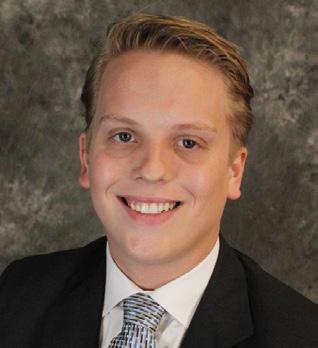



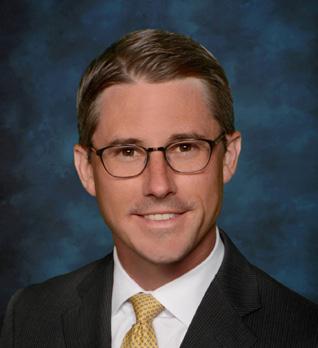


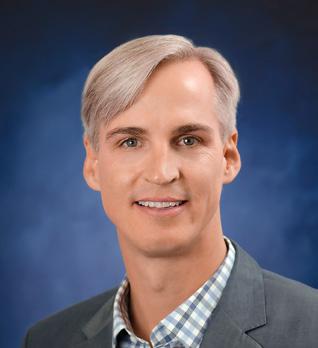
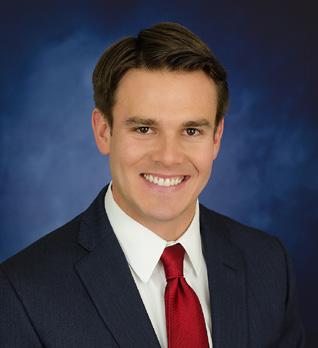

Did you recently take a step in your career? We want to know! editor@crestnetwork.com

• 14 Aimbridge Hospitality promoted Brad Frazier to Senior Vice President of Sales and Marketing
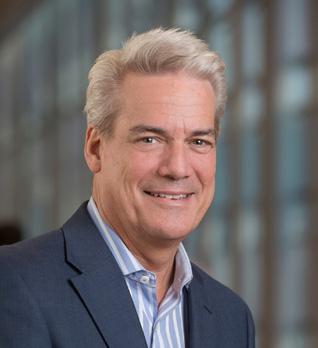
• 15 Aimbridge Hospitality promoted Jamie Grittman to Senior Vice President of Sales, Strategy and Innovation
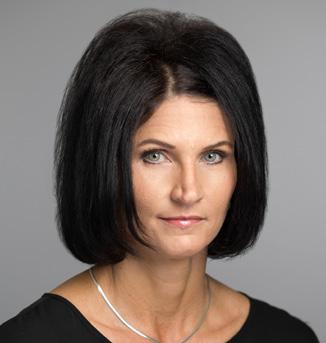

• 16 Jane Hwang joined Image Building Maintenance as Regional Manager

• 17 Gretchen Miller to Senior Vice President in Dallas • 18 Weitzman promoted Matthew Rosenfeld to Senior Vice President in Dallas • 19 Weitzman promoted Cathryn Wilmoth to Vice President of Human Resources in Dallas • 20 Crescent Real Estate promoted of Angelique Wade to general manager of McKinney & Olive
• 21 Mike Kinser, CPA joined Trinity Interests as the Director of Operations


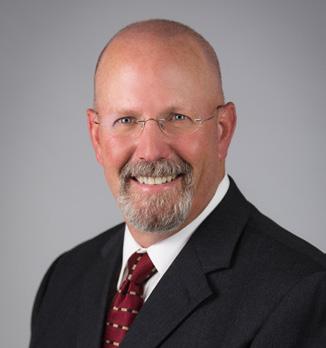

• 22 Michelle Woodard joined Tekin & Associates as a Senior Paralegal • 23 Badrul Islam joined Mill Creek Residential as a Property Accountant. • 24 Cushman & Wake eld promoted Carly Davis to Associate Director

• 25 Belinda Eller joined Cushman & Wake eld as an Associate Director • 26 Stephanie Futch joined Cushman & Wake eld as a Property Administrator • 27 Greg Simnacher joined Cushman & Wake eld as a Property Manager • 28 Morgan Palombizio McCall joined Cushman & Wake eld as an Assistant Property Manager
• 29 Sherry Anderson joined Cushman & Wake eld as an Assistant Property Manager • 30 Cushman & Wake eld promoted Tracy Clark to Operations Manager


• 31 Cushman & Wake eld promoted Jennifer Conyers to Property Administrator







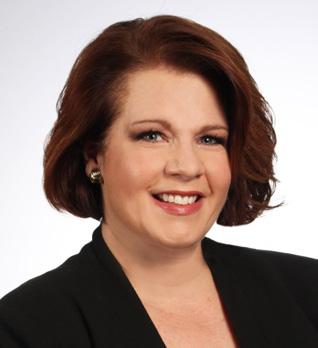


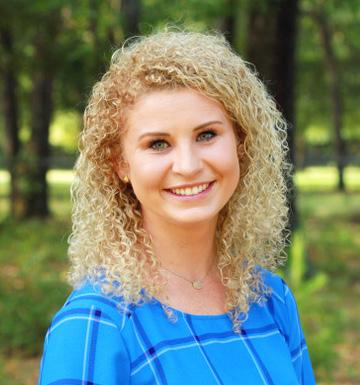


• 32 Matthew Peterson joined Vaquero Ventures as a Development Associate • 33 Melissa Ruhland joined Granite Properties as a Property Manager • 34 Susan Nash joined Swing Stage Corp./A.L. Dennis Company as a Customer Relations Representative • 35 Richard Mireles joined JLL as Vice President, Capital Markets in Austin


THE NETWORK | DECEMBER 2018 56
In democracy your vote counts. In feudalism your count votes. 2
3
Naveen Chillara
4
Michelle Atkinson
5
6
Jorge Arroyo
Clay Markham
7
1
Bradley Suttle
Travis Sapaugh
9
Sara Bridges
10
11
Tim Vogds
Taylor Roberts
12
Amanda Aaron
13
Mark Evans
14
Adam Conner
8
Brad Frazier
16
17
Jordan Buis
Jane Hwang
18
Gretchen Miller
19
Matthew Rosenfeld
20
Cathryn Wilmoth
21
Angelique Wade
15
23
Mike Kinser
Jamie Grittman
24
Badrul Islam
25
Carly Davis
26
Belinda Eller
27
Stephanie Futch
28
Greg Simnacher
22
Morgan Palombizio
30
Michelle Woodward
31
Tracy Clark
32
Jennifer Conyers
33
Matthew Peterson
34
Melissa Ruhland
35
Susan Nash
29
Richard Mireles
Sherry Anderson











DECEMBER 2018 | THE NETWORK 57 December 2 AIA Dallas | Bark & Build 4 ABC Houston | PAC Christmas Party 5 SCR | Breakfast at Ridglea Country Club 5 CREW Forth Worth | December Luncheon at The Fort Worth Club 5 SIOR North Texas | Holiday Luncheon 5 ASA Houston | Holiday Gathering 6 IFMA Austin |Casino Night/Holiday Party 6 TEXO | Holiday Awards & Gala 6 AIA Corpus Christi | Holiday Party 6 AGC San Antonio | Holiday Open House 6 ASA North Texas | Monthly Meeting at Las Colinas Country Club 6 IFMA Houston | Holiday Awards luncheon 6 IFMA DFW | Holiday Gala 6 RECA | LDC Wrap Up Holiday Party 6 ULI North Texas | Holiday Party 7 AIA San Antonio | Architect’s Black Friday 7 BOMA Austin | Holiday & Awards Luncheon 7 CREW Dallas | Holiday Awards Luncheon 7 BOMA San Antonio | December Holiday @ Awards Luncheon 7 Houston Contractors Association | Christmas Party 10 BOMA Dallas | CSC: Toy Sorting Party 11 BOMA Fort Worth | Holiday Party 11 AGC San Antonio | Spurs Night 11 RECA | Annual Awards 11 CCIM Central Texas |CTCAR |CREW Austin | Holiday Party 11 CTCAR | Holiday Party 11 IREM Austin | Holiday Party 11 ABC Houston | PAC Pork Butt Fundraiser 11 NAWIC Waco |Monthly Dinner Meeting 12 CCIM | Houston | Holiday Party 12 ULI North Texas | Holiday Party 13 IREM Houston | Holiday Party at Moxie’s Grill & Bar 13 IREM San Antonio | Holiday Party at The Witte Museum 13 IREM Fort Worth | Holiday Luncheon/Silent Auction 13 BOMA Austin |Holiday Luncheon at Norris Conference Center 18 NAWIC Dallas | Holiday Party at Ferrari’s Restaurant in Addison 20 NAWIC Fort Worth | Dinner at Diamond Oaks Country Club January 10 ULI | San Antonio | Luncheon at the Witte Museum 15 NAWIC Dallas | Toppin Out Celebration 15 BOMA Fort Worth | Monthly Luncheon 15 IREM Austin | Monthly Luncheon 15 NAWIC Dallas | Topping Out 16 BOMA Austin | Monthly Luncheon 16 BOMA San Antonio | Monthly Luncheon 17 IREM Fort Worth | Membership Luncheon 17 BOMA Austin |Monthly Luncheon at Norris Conference Center 17 SCR | Installation of the Board of Governors at Petroleum Club 17 NAWIC Fort Worth | Dinner at Diamond Oaks Country Club 18-21 BOMA International | Winter Business Meeting in Miami 24 BOMA Fort Worth | Bowling Tournament 29 CREW Dallas | Leadership Series February 1 RECA | Knock Out Night 2 BOMA Dallas | Annual Awards Banquet & Ceremony 7 BOMA Dallas | Networking Event/Dart Tournament 12 BOMA Fort Worth | Monthly Luncheon 12 IREM Austin | Monthly Luncheon 16 AIA Dallas | DCFA Form Follows Fitness 20 BOMA Austin | Monthly Luncheon 20 BOMA San Antonio | Monthly Luncheon 21 NAWIC Fort Worth | Dinner at Diamond Oaks Country Club 21 BOMA Austin |TOBY Luncheon at Norris Conference Center 21 ASA North Texas | TopGolf Tournament 21 NTCCIM | Luncheon at Park Cities Club 28 BOMA Austin | Speed Networking
3-9 NAWIC | National Women in Construction Week 5 BOMA Austin |AAFAME |Joint Luncheon at Hyatt Regency 12 BOMA Fort Worth | Monthly Luncheon 18 NAWIC Fort Worth | Dinner at Diamond Oaks Country Club 19 NAWIC Dallas |Quarterly Networking Event 19 IREM Austin | Monthly Luncheon 20 SCR | Breakfast at Ridglea Country Club 21 NTCCIM | Luncheon at Park Cities Club 27 CTCAR | Luncheon at Maggiano’s 30 – April 3 TAPPA | Annual Conference at Wyndham San Antonio Riverwalk Do you recognize these 6 icons? (answers on page 62) you’re going to call me
March
in the
The Nicknames of the 50 States
Alabama — “Yellowhammer State”
is nickname dates all the way back to the 1860s when the Civil War was in full swing. Pieces of yellow cloth resembling the Yellowhammer bird were attached to confederate uniforms and earned soldiers the nickname “yellowhammers.” It caught on and eventually became the uno cial state nickname. ( e state has no o cial nickname.)
Alaska — “The Last Frontier”
Alaska was the 49th state to join the union, hence the nickname. Only 1/3 of the land in the entire state has been de ned by cities and towns, leaving a vast expanse of undisturbed, remote landscape. ( e state has no o cial nickname.)
Arizona — “The Grand Canyon State”
e Grand Canyon is Arizona’s most famous national park and its claim to fame. e term “grand canyon” was coined in the 1870s by John Wesley Powell during his exploration of the Colorado River.
Arkansas — “The Natural State”
An abundance of beautiful natural geographical features like rivers, caves, hills, and valleys all contribute to this nickname which became o cial in 1995. e variety of plants and animals that call this state home only adds to its natural beauty.
California — “The Golden State”
e name (which became o cial in 1968) comes from the Gold Rush of 1848. e state seems to radiate gold, with the Golden Gate Bridge, e Golden Slate Museum, and the elds of golden poppies that bloom in the springtime.
Colorado — “The Centennial State”
Colorado joined the union in 1876, 100 years a er the Declaration of Independence was signed. e Mountain State appears on license plates.
Connecticut — “The Constitution State”
Connecticut’s nickname was declared in 1959 because some historians believe the Fundamental Orders of 1638-39 (written in Connecticut) were the rst written rules of government to be used in the U.S.
Delaware — “The First State”
Delaware was the rst of the original 13 states to ratify the constitution. ( e nickname was o cially adopted in 2002.) at fact alone merits the nickname, but the state is also known by several other nicknames like “ e Diamond State,” “Small Wonder,” and “Blue Hen State.”
Florida — “The Sunshine State”
e subtropical climate of this state makes its sandy beaches an ideal place to enjoy the sunshine, so the nickname naturally followed. e nickname was formally adopted in 1970.
Georgia — “The Peach State”
Peaches grown in Georgia are known to be delicious. e peach was named the state’s o cial fruit in 1995.
Hawaii — “The Aloha State”
In 1959, Hawaii gained its statehood in America and was deemed “ e Aloha State” right away. Aloha is a well-known greeting used in lieu of “hello” or “goodbye.”
Idaho — “The Gem State”
e word “Idaho” means “gem of the mountains” in the language of the Shoshone Native Americans. e mountains of Idaho contain a wealth of precious minerals and gems including jade, topaz, zircon, and star garnets, the state mineral.
Illinois — “The Land of Lincoln”
Abraham Lincoln began his political career in Illinois (although he was actually born in Kentucky) and was living there when he was elected president in 1861. e nickname was adopted in 1955.
Indiana — “The Hoosier State”
ere are a number of theories about where the word ‘hoosier’ came from, but the rst known usage was in a letter, written in 1827. Some historians suggest that the word in a poem by John Finley’s poem e Hoosier’s Nest, is in reference to the integrity and bravery of the people of Indiana, but it is likely to remain a mystery. ( e state has no o cial nickname.)
Iowa — “The Hawkeye State”
Iowa’s nickname is actually in honor of a Native American leader, Chief Black Hawk, who was relocated to Iowa a er settlers took over his people’s land. One of Iowa’s newspaper publishers was friends with Black Hawk and renamed his paper e Hawk-Eye and Iowa Patriot to honor him. “ e Hawkeye State” was made o cial in 1838.
Kansas — “The Sunflower State”
During the late summer months, elds all over Kansas are covered in wild sun owers, e sun ower is admired for its ability to grow in harsh conditions and is also the state ower.
Kentucky — “The Bluegrass State”
e grass in the elds grow with small blue buds which give o a bluish tint across the grasslands of northern Kentucky. Today, the nickname (which dates back to the time of the Civil War) is associated with both the actual grass and bluegrass music.
Louisiana — “The Pelican State”

Nearly 40,000 brown pelicans reside in the state of Louisiana today. ey have been a symbol of the state ever since pioneers settled the land. e species was commissioned to be the state bird in 1966 but the nickname since around 1859.
Maine — “The Pine Tree State”
e White Pines that grow in Maine are some of the tallest trees that grow in North America, and they provide beautiful, lush coverage to the landscape. e nickname dates back around the mid-1850s.
Maryland — “The Old Line State”
Historians say that the nickname came from George Washington himself, in reference to the Maryland Line troops who fought in the Revolutionary War and were renowned for their bravery.
Massachusetts — “The Bay State”
It’s not certain how the nickname “ e Bay State” came about, but historians speculate that it had something to do with the fact that early pioneers settled on Cape Cod Bay. e nickname could also come from the Massachusetts Bay Company, which governed New England until 1684.
Michigan — “The Wolverine State”
e Michigan Historical Center says that the land most likely only had a few wolverines roaming around, if any at all. e name dates back to 1846. During the Toledo War, Ohioans were rumored to have said Michiganders were “as vicious and bloodthirsty as wolverines.”
Minnesota — “The North Star State”
is nickname came from the state motto, “L’Étoile du Nord” or “the Star of the North,” declared by Minnesota’s rst governor (in the early 1850s). Another popular nickname is “Land of 10,000 Lakes.” ere are actually more than 11,000 lakes in Minnesota.
Mississippi — “The Magnolia State”
e magnolia ower thrives in Mississippi and covers the entirety of the state. Naturally, the nickname followed, with such a vast number of magnolia trees and owers, and in uenced the o cial state nickname, the o cial state tree, and the o cial state ower.
Missouri — “The Show-Me State”
In 1899, a Missouri Congressman said, “I come from a state that raises corn and cotton and cockleburs and Democrats, and frothy eloquence neither convinces nor satis es me. I am from Missouri. You have got to show me.” Some also say the “Show Me State” nickname refers to its residents’ conservative, tenacious and skeptical characteristics.
Montana — “The Treasure State”
Popularized in 1895 in reference to the state’s high production of gold, silver and copper.
Nebraska — “Cornhusker State”
Corn has always been Nebraska’s top cash crop. e term ‘Cornhuskers’ was coined in 1900 by Charles S. “Cy” Sherman, a sportswriter for the Nebraska State Journal in Lincoln in reference to the University of Nebraska’s athletic teams. It became the o cial nickname in 1945.
I stayed up all night to see where the sun went, and then it dawned on me.
THE NETWORK | DECEMBER 2018 58
Nevada — “The Silver State”
is phrase started appearing on license plates in the 1980s as a result of the 1858 Comstock Lode discovery and a silver rush to the area. Today, Nevada is the second largest producer of silver and the fourth largest producer of gold in the country.
New Hampshire — “The Granite State”
A large number of granite formations and quarries merit the nickname.
New Jersey — “The Garden State”
e rst reference was in 1876 at the Philadelphia Centennial Exhibition. Abraham Browning, the rst Attorney General of the state, said “our Garden State is like a huge barrel, with both ends open, one of which is plucked by New York and the other by Pennsylvania.”
New Mexico — “Land of Enchantment”
Declared the o cial nickname in 1999, it refers to the state’s abundance of natural beauty (including the white gypsum sand dunes at White Sands National Monument, the Rio Grande Gorge, Capulin Volcano, and numerous towering red rock buttes) and its broad cultural history.
New York — “The Empire State”
In 1785, George Washington wrote a thank you letter to the New York Common Council referring to New York as the “seat of the empire” because of its plentiful resources and wealth. e nickname has been carried on and the phrase can be found on New Yorker license plates.
North Carolina — “Tar Heel State”
e origin of this phrase is muddled and may very well be lost to history, but one of the most common theories is that it comes from the state’s long history of naval stores production. From 1720 to 1870, North Carolina was one of the largest producers of tar, pitch, rosin and turpentine, in the world.
North Dakota — “The Peace Garden State”
Since 1957, this nickname has been o cial; it pays tribute to the International Peace Garden that straddles the Canadian border and features the Historic Interpretive Center, a 9/11 Memorial, and large oral clock that stretches 18 feet in diameter.
Ohio — “The Buckeye State”
e name itself is of native origin. e buckeye tree bears nuts that early settlers and Native Americans thought looked just like the eye of a male deer. is wellknown for its o cial state tree - the buckeye. e term “buckeyes” became popular during the presidential campaign of William Henry Harrison in 1840.
Oklahoma — “The Sooner State”
Before the land that would eventually become the state of Oklahoma was open to claim (in 1889), some settlers broke the law and claimed plots of land before the government gave the okay to do so. ese early pioneers were nicknamed “sooners” and the name stuck. In 1908, the University of Oklahoma even adopted the name for its football team.
Oregon — “The Beaver State”
Beavers have always populated the waterways of Oregon and are an integral part of the state’s history. Early pioneer trappers would hunt them to trade their fur, which was highly valuable in America and Europe until the mid-eighteenth century. e beaver was declared Oregon’s o cial state animal in 1969 and represents the qualities that Oregonians like to be associated with, such as diligence and resourcefulness.
Pennsylvania — “The Keystone State”
e Declaration of Independence, the Constitution, and the Gettysburg Address were all written in Pennsylvania, making the state a major cornerstone in the development of the United States. e literal de nition of the word “keystone” is, “a central stone at the summit of an arch, locking the whole together,” which rightly illustrates the state’s role in the union. Although it’s not certain who coined the phrase “ e Keystone State,” it has been in use since the early 1800s.
Rhode Island — “The Ocean State”
is nickname (used to promote tourism) is not just because Rhode Island borders the Atlantic Ocean. Even as the smallest of the 50 states, Rhode Island boasts nearly 400 miles of ocean shoreline (coves, bays, and islands included), which is particularly striking because the whole state is only 37 miles wide and 48 miles long.

South Carolina — “The Palmetto State”
e palmetto tree is the o cial state tree. While the Revolutionary War was raging in June of 1776, Charleston patriots defended themselves against the British with a fort made of palmetto tree trunks and emerged victorious.
South Dakota — “The Mount Rushmore State”
South Dakota is home to the famous Mount Rushmore, a gigantic rock sculpture carved into the Black Hills, featuring the faces of omas Je erson, George Washington, eodore Roosevelt, and Abraham Lincoln. It took the sculptor, Gutzon Borglum, nearly 15 years to complete!
Tennessee — “The Volunteer State”
e nickname originated during the War of 1812, in which the volunteer soldiers from Tennessee, serving under Gen. Andrew Jackson, displayed marked valor in the Battle of New Orleans. It gained wide acceptance during the Mexican War from 1846-1848 when the governor’s request for volunteers to assist in the war met with an overwhelming response.
Texas — “The Lone Star State”

A single star was part of the Long Expedition (1819), Austin Colony (1821) and several ags of the early Republic of Texas. Some say that the star represented the wish of many Texans to achieve statehood in the United States. Others say it originally represented Texas as the lone state of Mexico which was attempting to uphold its rights under the Mexican Constitution of 1824. e 1839 design has been used to symbolize the Republic and the state ever since.
Utah — “The Beehive State”
e nickname became o cial in 1959 but it dates back to 1848. Utahans relate the beehive symbol to industry and the pioneer virtues of thri and perseverance as well as the tenacity, competence, and strength of the early settlers themselves.
Vermont — “The Green Mountain State”
Vermont was originally settled by the British and the French in the 18th century and the nickname comes from a French phrase, “montagne verte” (“green mountain”). e rst clergyman to visit the area (Rev. Dr. Peters) named the Green Mountains in 1761.
Virginia — “The Old Dominion State”
King Charles II declared this nickname because of the state’s devotion to the crown during the English Civil War, adding Virginia to his dominions of France, Ireland and Scotland.
Washington — “The Evergreen State”
A pioneer, C. T. Conover, was the rst to use the nickname “ e Evergreen State,” but it was made o cial in 1893. Washington has an abundance of evergreen forests across the state and those forests contain about 25 native tree species, according to the Washington Forest Protection Association.
West Virginia — “The Mountain State”
e state has the highest average altitude of the states east of the Mississippi and is well-known for its rugged, mountainous landscape. e Allegheny Mountains cross the entirety of the state and play a large role in the state’s popularity for tourists.
Wisconsin — “The Badger State”
e badger has been closely associated with Wisconsin since territorial days; it was declared the o cial state animal in 1957. Its likeness has been incorporated in the state coat of arms, the seal, the ag and even State Capitol architecture.
Wyoming — “The Equality State”
In the mid 1860s, the male population of the state outnumbered the females six to one and the overall population was too small to qualify for statehood, so lawmakers made it legal for women to vote, serve on juries and hold public o ce, in hopes that the changes would attract more females to the area.
See video:
https://video.search.yahoo.com/yhs/search;_ylt=AwrEwM9LfY1beB0ArRgunIl Q?p=nicknames+of+the+states%5C&hsimp=yhs-102&hspart=mozilla&type=n ewtab&fr=yhs-mozilla-102&fr2=p%3As%2Cv%3Ai%2Cm%3Apivot#id=1&vid =74558fc4a60cb465bb29aa163514ef0f&action=view
DECEMBER 2018 | THE NETWORK 59












THE NETWORK | DECEMBER 2018 60 MARKETPLACE AND DIRECTORY • PAVING • • EXECUTIVE SEARCH, INTERIM PLACEMENTS & TRAINING • • EXTERIOR WALL CONSULTING • • JANITORIAL SERVICES • • LEGAL • CCI standard services include: • New Construction Design Peer Review and QC Inspections • Building Envelope Condition Survey for Due Diligence, Maintenance, Budget, and Water Penetration • Remediation Design, Project Management, and QC Inspections • Forensic Investigation Reports, Deposition, and Trial Testimony • Storm Damage Analyst and Restoration Management • Borenscope Inspection of Wall Cavity • Davit and Tieback OSHA Testing and Certi cation • On-Site ASTM Standard Curtain Wall and Window Leak Testing 1601 Luna Road Carrollton, TX 75006 phone 972-242-0556 fax 972-245-6047 www.sunited.com www.cci.sunited.com Bryan S. Stevens President Andy Wilson Laboratory Manager We have real-world experience and expertise in Real Estate, Business, Litigation, Intellectual Property, Employment, and Sports and Entertainment Anthony J. Barbieri | ajb@kesslercollins.com | 214.379.0733 2100 Ross Avenue, Suite 750 | Dallas, Texas 75201 Ad_KC-LinksDir-Jan2016_01ab.indd 1 1/20/16 10:10 AM www.reliablepaving.com 1903 North Peyco Dr. Arlington, TX 76010 Phone: 817-467-0779 Fax: 817-467-9148 At Reliable Paving we dig in and get the job done. We specialize in commercial projects, churches, schools, hospitals, shopping centers, multifamily, and office buildings. Call 817-467-0779 or 1-800-582-3026 for your free estimate. Ft. Worth Paving Solutions • Licensed & Bonded • Free estimates • Serving all of DFW • No job is too big or too small FACEBOOK@ concreteandasphaltpaving.com Residential and Commercial Asphalt • Seal Coat • Striping • Concrete 817.600.6790 Producing High Performance Teams (214) 387-9595 • www.LYNOUS.com • RECRUITING • INTERIM STAFFING • TRAINING • COACHING
shout outs!


Expressions of praise given in the presence of many peo ple.
WalletHub released an in-depth report on 2018’s Most Pet-Friendly Cities. Kudos to Austin that came in 4th, behind Scottsdale, AZ, Orlando, FL and San Diego, CA. See the whole report at https://wallethub.com/edu/most-petfriendly-cities/5562/

To determine the most attractive real-estate markets in the U.S., WalletHub compared 300 cities across 22 key metrics. The data set ranges from median home-price appreciation to home sales turnover rate to job growth. Texas cities claimed 5 of the top 10 spots including the top 3! Frisco was # 1; McKinney was #2, Allen was #3; Richardson was # 7; and Denton was #10. Read more at: https://wallethub.com/ edu/best-real-estate-markets/14889/


Treat each day as your last; one day you will be right.
Based upon its economy (the local unemployment rate, historical job growth, projected job growth and the level of employment opportunities available, and other factors, the cost of living (based on tax burden, insurance costs, commuting costs, medical spending, utility and home expenses) its diversity (racial makeup, racial integration, and economic diversity within the population, education (based on math and reading test scores and local and county level high school graduation rates) and income (based on historical median household income, projected household income, a comparison between local and state median household income and change between current and historical household income, Money Magazine chose the City of Frisco as #1 In its annual review The Ten Best Places to Live in America Right Now. Wow! Congratulations! Read more: http://time. com/money/5387468/best-places-to-live-2018-methodology/
To determine where the most rapid local economic growth occurred over a period of seven years, WalletHub compared 515 U.S. cities across 15 key metrics. The data set ranges from population growth to college-educated population growth to unemployment rate decrease. In addition, they produced a separate ranking by city size.
Hats o to Lancaster, PA which has earned gold certi cation under the new LEED for Cities program, (https://new.usgbc.org/leed-forcities) recognizing leadership in sustainability. It is among the rst communities in the United States and the world to earn the rating, which also recognized Washington, D.C.; Phoenix; Arlington County, Va.; Songdo, South Korea; Savona, Italy; and Surat, India. LEED is administered by the U.S. Green Building Council (USGBC) and is the most widely used green building rating system in the world. The certi cation system grew to include cities in 2017.

5 Dallas High School recently won a 2018 Preservation Dallas Achievement Award, which honors Dallas’ outstanding residential and commercial historic preservation projects and the individuals who are committed to making Dallas a better place to live by protecting its architectural heritage. The 102,000-square foot, fourstory building was built in 1907 and sat empty for nearly two decades before being purchased by Matthews Southwest and redeveloped into 78,000-square feet of historically converted o ce space, along with 10,000-square feet of restaurant, retail and outdoor patio space. Kudos to Aimee Sanborn, AIA, LEED AP BD+C, Principal and Team Leader at Merriman Anderson/Architects (the design architect, historic architect and architect of record for the building shell and interior restoration, including the LEED Gold certi cation process).

in the news

For more information, go to 2018’s Fastest Growing Cities in America (https://wallethub. com/edu/fastest-growing-cities/7010/ ). Also view accompanying videos.

DECEMBER 2018 | THE NETWORK 55
: : :
: : :
: : :
1 Fort Myers, FL 2 Midland, TX 3 Pearland, TX 4 Bend, OR 5 McKinney, TX 6 College Station, TX 7 Lehigh Acres, FL 8 Mount Pleasant, SC 9 Enterprise, NV 10 Irvine, CA
Texas is a sprawling state known for its independent character and geographical diversity, unique among the y states, among other things, due to the fact that many separate nations once ruled the land before it joined the U.S.in 1845. As we all know, it even spent time as an independent republic for nearly a decade.
According to the National Council for Home Safety and Security, the safest city in the Lone Star State is Colleyville, a Tarrant County suburb of Fort Worth named a er a Union army vet who became a highly regarded physician in the area. Colleyville’s 0.23 violent crimes per 1,000 is a whopping 26 times lower than the statewide average. A sprawling state known for its independent character and geographical diversity, Texas is, in many ways, unique among the y states due to its peculiar history. e phrase “six ags over Texas” references the fact that many separate nations once ruled the land, including Spain, France and Mexico, before it joined the U.S. It even spent time as an independent republic for nearly a decade.
T-Shirts


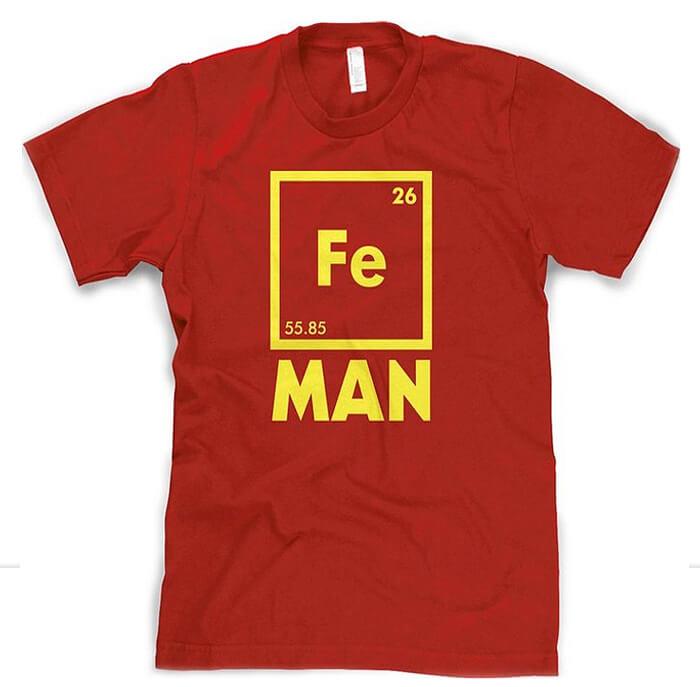

The safest city in the Lone Star State is Colleyville, a Tarrant County suburb of Fort Worth named a er a Union army vet who became a highly regarded physician in the area. Colleyville’s 0.23 violent crimes per 1,000 is a whopping 26 times lower than the statewide average (which is 5.1 per 1,000)

At #2 is Keller, another suburb located in the sprawling Dallas-Fort Worth metroplex. Keller has been repeatedly recognized for its safety, and its crime rates compare very favorably with statewide rates.

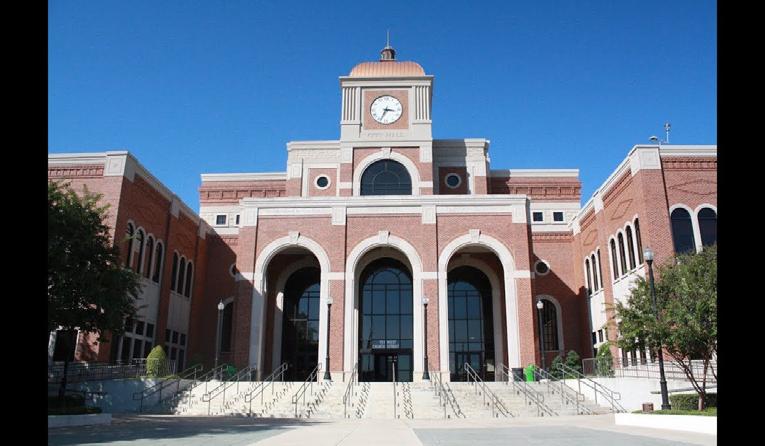

Third on the list is Highland Village, a small suburb of Dallas along the southwestern portion of the manmade Lewisville Lake. Highland Village logged a mere 8 violent crimes in the latest statistical year. Filling out the top ve are two more suburbs of Dallas: Trophy Club (#4) and Murphy (#5)


For more information and the rest of the list, go to https://www.alarms.org/safest-cities-in-texas-2018/



THE NETWORK | DECEMBER 2018 54 I drive way too fast to worry about cholesterol.
Colleyville City Hall and Library
Murphy Fire Department
Highland Village City Hall
Keller Town Hall
Trophy Club Municipal Complex
Great art is among the most sublime, meaningful, and redeeming creations of all civilization. Few endeavors can equal the power of great artwork to capture aesthetic beauty, to move and inspire, to change perceptions, and to communicate the nature of human experience. Great art is also complex, mysterious, and challenging. Filled with symbolism, cultural and historical references, and often visionary imagery, great artworks oblige us to reckon with their many meanings.

Architects and designers (many of our readers) have a lot of in uence on the way we perceive the world. A structure often plays a signi cant part in how we experience a place. (Think of a restaurant, a museum, an arena, a stadium… even an o ce building – virtually anywhere!) The interior design impacts our sensory perception, our comfort, and our physical connection and there is also artistry in the exterior design. (That’s why we call it artchitecture.)





DECEMBER 2018 | THE NETWORK 53
REIMAGINING REALITY
Philippe Charles Jacquet is not simply a painter of landscapes; he is a creator. Jacquet has mastered the ability to combine what is real and what is imagined. As a result, his compositions, heavily inspired by Brittany coasts and estuaries, have an element of the sublime and register deeply with the subconscious. Although he paints sparse landscapes there is something fundamentally pleasing in the surreal, idealized quality of his work.
Jacquet was trained as an architect at the Ecole Nationale Supérieure des Arts Décoratifs. A er pursuing his career in architecture, he decided to dedicate himself solely to painting and has been doing so for six years. One can detect his background in architecture in his heavily symmetrical, geometric landscapes. However, he successfully o sets the very calculated appearance of architectural compositions with rich colors and an intriguing variety of surfaces ranging from glasslike water to rusted, aking hulls of barges.
Jacquet is entirely self-taught and his painting technique undoubtedly sets him apart from other artists. Working in gloss paint, an industrial medium, he begins by painting his plywood surface with a uniform base of an o -white color. is

medium allows him to achieve remarkably smooth surfaces. Each area of the composition is approached di erently; sometimes textures are created using several transparent layers while others are achieved through the use of a razor blade to scratch away at the surface.
Jacquet takes extra care when approaching the houses that o en appear in his paintings. He builds, rather than paints these structures, o en composing them on paper and later transferring them onto the backdrop. ey e ectively serve as reminders of a human presence in these expansive, dream-like landscapes.

Jacquet currently lives and works in Pantin, a suburb north of Paris, where he ran an exhibition hall. He has exhibited in solo and group shows throughout France. Notably, he won rst prize at the Plastic Arts Exhibition at Melun.
A solo exhibition of new paintings will open on Friday, December 7th from 6-8pm at M Fine Arts Galerie in Boston. e artist will be in attendance. (www. m nearts.com)

THE NETWORK | DECEMBER 2018 52
Eureka! We’ve Struck Non-Exempt Assets!
If the non-exempt asset search is successful, creditors can set their sights on seizing those assets. First and foremost, creditors need to record an abstract of judgment in the real-property records of every county where the judgment debtor owns real property. Since the cost to le the abstract is nominal, many creditors will take a “shotgun” approach of ling an abstract of judgment in the obvious counties where they suspect the debtor might own property. Also, one can le an abstract of judgment to attach to future property. For example, if the debtor’s parents live in Austin, you can le an abstract of judgment in Travis county in case the debtor inherits their parent’s house someday. The abstract of judgment places a lien on any non-exempt real property that the judgment debtor owns in each county where the abstract of judgment is recorded. Caution must be taken to avoid ling an abstract of judgment against the debtor’s homestead. Since commercial creditors cannot lien a homestead, the creditor can be liable for “clouding” or “slandering” the debtor’s title. If the lien interferes with a debtor’s sale or re nance of their homestead, then the creditor may be liable to the debtor for damages. e abstract of judgment is valid for ten years, and it can be extended for additional ten-year periods if it is renewed before the expiration date. e abstract of judgment puts the world on notice that the debtor’s property is subject to the lien. e abstract of judgment will show up during a title or lien search and will require the debtor to pay o the claim before selling the property. Most title companies require the lien to be released before they issue a title policy for the purchaser and lender.

Typically the abstract of judgment is a “wait and see” approach to collections. However, there are some more proactive approaches. For example, the Texas Civil Practices and Remedies Code Section 31.002 allows creditors to seek a turnover order. A turnover order is a court order requiring the debtor to turn over the non-exempt property to the court to satisfy the judgment. If the debtor fails to turn over the property, they can be held in contempt, which may lead to monetary sanctions and jail time.
Section 31.002 also allows the appointment of a receiver, which is especially common with business debtors. e receiver has the authority to take possession of the non-exempt property, sell it, and pay the proceeds to the judgment creditor to satisfy the judgment. Receivers are court-appointed “watchdogs” that are granted extensive powers over the judgment debtor. Receivers can be expensive, and typically a receivership is akin to a forced liquidation of the debtor’s business.
Additionally, a er thirty days have passed since obtaining the judgment, a creditor can obtain a “writ of execution” from the court. e writ permits a Texas constable to seize the judgment debtor’s non-exempt property and sell it at auction. e proceeds of the sale are used to satisfy the judgment. is is not a free service, however, and if there are no (or not enough) non-exempt assets, then you could end up paying the constable more for the fees then you collect from the asset sale. erefore, the writ of execution is usually only conducted if the creditor is aware of speci c assets. However, sometimes the presence of a constable searching through a debtor’s stu motivates them to pay.
Even though Texas does not permit wage garnishment for commercial creditors, a judgment creditor can obtain writ of garnishment to seize the debtor’s property in possession of third-party banks or other entities. Before you can exercise this option, you must locate the debtor’s bank account (and hope there is still money in it). If funds are found, a writ of garnishment can be a simple process, and banks are typically cooperative. In Texas, the post-judgment collection process can be challenging. is is especially true when dealing with consumer debt collections, which are not addressed in this article. Every person or company that acts as a creditor or lender (in some form or fashion) should understand the collection process, as well as your rights and limitations. If you know the collection process, you will be in a better position to underwrite the risk before you agree to it.

DISPUTE RESOLUTION
The Arsenal Companies Mediation Service provides neutrality, con dentiality, time and nancial savings in comparison to the judicial litigation process. All sessions are conducted by an attorney with an extensive background in/knowledge of the law who specializes in negotiations and alternative dispute resolution.


Areas of Dispute Resolution:
• Contractual disputes
• Commercial disputes
• Consumer complaints
• Employment disputes
• Administrative Law
• Professional negligence or malpractice
• Landlord-tenant disputes
• Real estate disputes of all types
The goal of resolving con ict in a personal or business relationship should not be victory or defeat. It should be reaching a sustainable and durable understanding and letting go of our need to be right.
JUSTICE FAIRNESS LAW

682.224.5855
www.thearsenalcompanies.com/
DECEMBER 2018 | THE NETWORK 51
mediation-services ARSENAL
Despite the cost of living, have you noticed how popular it remains?
The Supremes
As big-box anchors closed their doors in the second quarter, retail absorption has so ened, and vacancy has inched up slightly. at being said, closures are only half the story. is JLL report explores how vacant space is being lled by other retailers.
Bolstered by tax cuts, government spending increases and a burgeoning labor market, the economic backdrop that drives the U.S. property markets is entering a boom phase, according to a new report by global commercial real estate services rm Cushman & Wake eld.



e rm’s U.S. Macro Forecast outlines key data, economic drivers, and analysis relating to o ce, retail, and industrial properties as well as the state of commercial real estate capital markets. e report notes that real GDP growth – which averaged roughly 2 percent per year over the most recent nineyear economic expansion – has cranked up to 4.2 percent in the second quarter of 2018, marking one of the strongest growth rates in the current cycle. In addition, record levels of dry powder are being aimed at North American commercial properties: as of August 2018, closed-end funds were targeting $186 billion at those assets. However, the rising cost of capital suggests the investor playbook will become more nuanced, the report predicts.
Emerging Trends in Real Estate® is an annual series of trends and forecast publications that re ect the views of leading real estate executives in three global regions—the Americas, Europe, and the Asia Paci c region. Undertaken jointly by PwC and the Urban Land Institute, Emerging Trends in Real Estate® provides an outlook on real estate investment and development trends, real estate nance and capital markets, property sectors, metropolitan areas, and other real estate issues. Each report: 1) Tells you what to expect and where the best opportunities are;

2) Elaborates on trends in the capital markets, including sources and ows of equity and debt capital; 3) Indicates which property sectors o er the best opportunities and which ones to avoid; 4)Explains how the economy and concerns about credit issues are a ecting real estate;






5) Discusses which metropolitan areas o er the most and least potential; 6) Describes the impact of social and political trends on real estate; and 7) Explains how locational preferences are changing. link

Commercial Real Estate Women (CREW) Network is the world’s leading producer of research on women in commercial real estate. It develops white papers annually and publishes a benchmark study every ve years to provide valuable industry insights and data. It is the premier business networking organization dedicated to transforming the commercial real estate industry by advancing women globally and provides support to more than 11,000 members worldwide through business development, leadership development, industry research, and career outreach. As of 2016, women working full-time in the U.S. were paid 20% less than men, according to the American Association of University Women (AAUW). At the rate of change between 1960 and 2016, women were expected to reach pay equity with men in 2059—but progress has slowed in recent years. If the current level of growth continues, AAUW warns that women may not reach pay equity with men until 2119.

Limiting global warming to 1.5ºC would require rapid, far-reaching and unprecedented changes in all aspects of society, according to the Intergovernmental Panel on Climate Change (IPCC). With clear bene ts to people and natural ecosystems, limiting global warming to 1.5ºC compared to 2ºC could go hand in hand with ensuring a more sustainable and equitable society. e Special Report will be a key scienti c input into the Katowice Climate Change Conference in Poland in December, when governments review the Paris Agreement to tackle climate change.

“With more than 6,000 scienti c references cited and the dedicated contribution of thousands of expert and government reviewers worldwide, this important report testi es to the breadth and policy relevance of the IPCC,” said Hoesung Lee, Chair of the IPCC. Ninety-one authors and review editors from 40 countries prepared the IPCC report in response to an invitation from the United Nations Framework Convention on Climate Change (UNFCCC) when it adopted the Paris Agreement in 2015. See the entire report here: http://www.ipcc. ch/report/sr15/

A new report from the Urban Land Institute’s (ULI) Greenprint Center for Building Performance shows that the commercial real estate industry is making signi cant progress in reducing energy consumption, carbon emissions, water usage and waste disposal. e Greenprint Center, which is part of ULI’s Center for Sustainability and Economic Performance, comprises an alliance of the world’s leading real estate owners, investors and nancial institutions who are committed to improving environmental performance across the global property industry. In light of the recent Intergovernmental Panel on Climate Change (IPCC) report documenting worsening impacts of climate change (also available on this page), methods to optimize energy usage and reduce environmental impacts are becoming more urgent. Volume 9 of the Greenprint Performance Report™, which tracks, benchmarks, and analyzes the performance of nearly 8,000 properties globally owned by Greenprint’s members, demonstrates a 3.3-percent reduction in energy consumption, a 3.4-percent reduction in carbon emissions, and a 2.9-percent reduction in water use between 2016 and 2017.
early bird may get the worm, but the second mouse gets the cheese.
THE NETWORK | DECEMBER 2018 46
JLL Research Report United States Q2 2018 Retail Outlook Out with the old: closures present opportunities for new retail and new uses CUSHMAN
Entering the Boom Phase Emerging Trends in Real Estate® United States and Canada 2019 VOLUME 9 Greenprint Performance Report™ 9
The
& WAKEFIELD RESEARCH U.S. Macro Forecast September 2018
Texas Mortgage Documents Give Unlawful Power to Lenders
By Mechele Dickerson
This article originally appeared on the Op-Ed page of the Fort Worth Star-Telegram. It is reprinted here with permission of the author.
Imagine this: you’ve missed two mortgage payments, you come home from work and realize someone changed the locks on your front door and installed a lockbox on the doorknob. ink this could never happen to you? ink again. It happens all across the country, and it could happen in Texas.
A common provision in mortgage loan documents, generally known as a “property preservation” clause, gives lenders the right to lock homeowners out of their own homes if the homeowner misses mortgage payments and is in default, or if the lender concludes that the borrower has abandoned a house.
e Supreme Court of the state of Washington recently examined one of these clauses in a recent case. e court concluded that these clauses are unenforceable because, contrary to state law, they let lenders take possession of a borrower’s home before a foreclosure sale.
Perhaps Texas lawmakers ought to take notice.
Like most homeowners, the plainti in the Washington state case borrowed to buy her home. e mortgage loan was secured by a deed of trust with a property preservation clause. e clause gave the lender the right to rekey locks and to winterize or generally preserve the value of the borrower’s home if the lender felt the home was abandoned. e homeowner missed two mortgage payments and went into default. Two months later, and without prior notice or warning, the mortgage servicer, named Nationstar, sent someone to the borrower’s home to remove the existing lock and install a lockbox.
Nationstar’s representative le a notice for the homeowner that stated that her home was “unsecure or vacant” and that the locks were changed to prevent “unauthorized persons” from entering the home. Jordan was only able to get back inside her home to retrieve her belongings a er she called a phone number listed on the notice and received a code to get the key from the lockbox.
e Washington Supreme Court rejected the claim that locking an owner out of her house did not constitute “possession.” Instead, the court held that rekeying locks constitutes control over, and possession of a property and that lenders did not have the right to possess the home until a er a foreclosure sale.
Given the similarities between Washington state laws and Texas property laws, Texas courts should also refuse to enforce these clauses.
Senior Musings
1. My goal for 2018 was to lose 10 pounds. I only have 14 to go.
2. I ate salad for dinner. Mostly croutons and tomatoes. Really, just one big round crouton covered with tomato sauce. And cheese. FINE. It was a pizza. I ate a pizza, okay?
3. How to prepare Tofu? A) Throw it in the trash. B) Grill some meat, chicken or sh.
4. I just did a week’s worth of cardio after walking into a spider web.
5. I don’t mean to brag, but I nished my 14-day diet food supply in 3 hours and 20 minutes.
6. A recent study found that women who carry a little extra weight live longer than men who mention it.
7. Kids today don’t know how easy they have it. When I was young, I had to walk 9 feet through shag carpet to change the TV channel.
Texas, like Washington, follows the “lien theory” of mortgages. Under this theory, lenders have a nancial interest in property that secures a mortgage loan but have no ownership interest until the home is sold at foreclosure. As is true in Washington, Texas case law also indicates that lenders do not own a borrower’s home and do not have the right to take possession of that home before default and until the home is sold at foreclosure.

e Texas Property Code details the rights homeowners and lenders have when a home is scheduled to be sold at foreclosure and those rights do not include the ability to lock homeowners out of their homes before a foreclosure sale.
Obviously, borrowers should repay their loans. And lenders need to be able to protect their nancial interests to prevent damage to collateral that secures their loans. e problem with property preservation clauses, however, is that they let lenders contractually give themselves rights that are not allowed by state law, i.e., evict people from their homes before a court overseeing the foreclosure process sorts out who is entitled to possess the home.
Simply put, unless and until homeowners lose their houses in a foreclosure sale, lenders should not be able to include provisions in private contracts that are inconsistent with or circumvent Texas law simply because those state laws do not give them the power they want.
Texas legislators have created a foreclosure process that is designed to protect the interests of both lenders and homeowners. If Texas lawmakers believe that lenders should have the right to lock homeowners out of their homes once they miss a few mortgage payments, then they should rewrite Texas law to clearly warn homeowners of that risk.
MECHELE DICKERSON MDickerson@law.utexas.edu
Mechele Dickerson is a professor in the School of Law at The University of Texas at Austin.
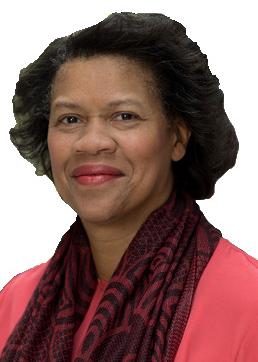
8. Senility has been a smooth transition for me.

9. Remember back when we were kids and every time it was below zero outside, they closed school? Yeah, me neither.
10. I may not be that funny or athletic or goodlooking or smart or talented. I forgot where I was going with this.
11. I love being almost 75. I learn something new every day and forget 5 others.
12. A thief broke into my house last night. He started searching for money, so I woke up and searched with him.
13. I think I’ll just put an “out of Order” sticker on my forehead and call it a day.
14. Just remember – once you’re over the hill, you begin to pick up speed.
DECEMBER 2018 | THE NETWORK 47 IMPORTANT VOICES
ROSE - MARY RUMBLEY rosetalksdallas@aol.com


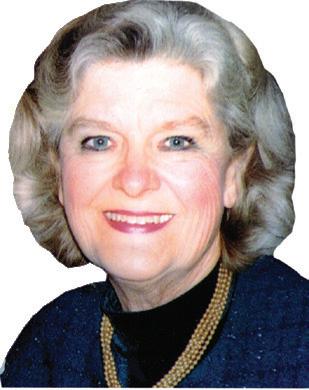


Rose-Mary Rumbley has written three books about her native city – Dallas. She has also written “WHAT! NO CHILI!” and a book about the 300th anniversary of the invention of the piano. She has appeared on the stage at the Dallas Summer Musicals and at Casa Mañana and was head of the drama department at Dallas Baptist University for 12 years. Today she is on the speaking circuit and teaches drama classes at Providence Christian School. Her loving views of Texas history appear in every issue of the network
The Hero of Bataan
REMEMBER PEARL HARBOR! “December 7, 1941, a date that will live in infamy!” declared President Franklin Delano Roosevelt. But there were other rallying cries. REMEMBER BATAAN! REMEMBER CORREGIDOR! ese cheers were shouted by Americans who were keeping up their spirits through the dark days of World War II.

Bataan and Corregidor remind me of the hero of the battles fought in the Philippines, General Johnathan Mayhew Wainwright IV. He was born into a military family in Washington State in 1883; it was a natural for him to go to West Point. He graduated just in time to serve in the U.S. Army in France during World War I, proving to be a hero and a leader. So, a er serving at Fort Riley, Fort Leavenworth, and Fort Clark, he rose to the rank of Brigadier General.

is is when, in 1940, he was sent to command the Filipino Forces. On December 8, 1941, one day a er the bombing of Pearl Harbor by the Japanese, Wainwright was commanding the troops in the Philippines. He remained with his men, even though he was advised to leave. U.S. troops were sent to the Philippines, certainly adding strength to the forces there.
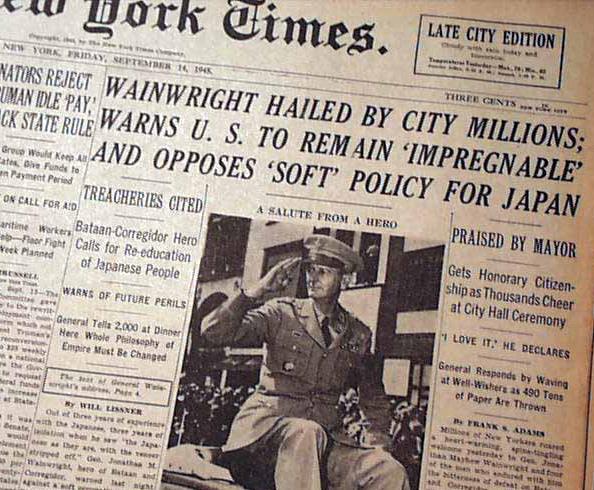




Fierce ghting between these combined forces and the Japanese army continued until April,1942, when Bataan fell, thus beginning the Death March of Bataan. is was a 65-mile forced march to a prison camp through unbearable heat and humidity on this South Paci c island. e Japanese beat the men, denied them food and water, and executed those that fell behind.
ousands died on this horri c march, and many, many more died in the prison camp. At the end of the war, with the dropping of the atomic bombs, the men who were still living in the Philippines were rescued. Wainwright made it! He was skin and bones, but he was able to be aboard the USS Missouri in September of 1945 when and where the Japanese surrendered.
en he was able to return to the Philippines to accept the surrender of the Japanese commander there. Wainwright was lauded as a hero, but he never considered himself a hero because he had surrendered to the enemy. Nevertheless, he was awarded a fourth star and awarded the Congressional Medal of Honor. ere is a memorial march held every year in the month of March at White Sands Missile Range in New Mexico, because many of the members of the death march were from the New Mexico National Guard.
General Wainwright, weakened by the torture, never physically got over the ordeal, so he was given an apartment at Brooke Army Hospital at Fort Sam
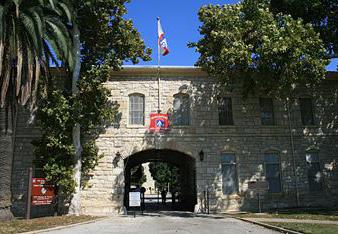
Houston in San Antonio where he lived until his death. When my husband graduated from UNT in 1952, he gave up his position as One O’clock Lab Band Drummer to become the lead drummer in the Fourth Army Band at Fort Sam Houston. We married the day a er he graduated, so I, too, was at Ft. Sam. It was there that our daughter, Jill, was born. I always told her, “Remember, Jill, you were born at the east end of Brooke Army, and General Wainwright died at the west end.” at was in September of 1953.
General Wainwright was the rst of the 4-star generals of WWII to die in the US. General Patton died in Europe where he is buried. erefore, a High Military funeral service was held for General Wainwright at Fort Sam. In fact, it took weeks for the o cials to plan it. Jill was old enough to be in a buggy, so I rolled her to the funeral service. It was unforgettable.
ere they stood--the great generals of WWII - General (President) Dwight Eisenhower, General Omar Bradley, General George Marshall, General Douglas MacArthur, General Mark Clark, General Matthew Ridgway. e navy was there--William (Bull) Halsey and Chester Nimitz. What a sight!!! Unforgettable!!!!
Two weeks later, the last horse of the US Cavalry died at Fort Sam. Do you realize what I have just written???

It was the end of the US Cavalryno more John Wayne coming with thundering hooves, blaring bugles, riding in to save the day. It was over! e last horse, Old Pat, died at Fort Sam. ey had the same funeral for the horse! I know! I was there! Grand military honors! Old Pat rests under a huge monument at Ft. Sam Houston!
He had a photographic memory which was never developed.
THE NETWORK | DECEMBER 2018 48
General Johnathan Mayhew Wainwright IV
Bataan Death March
General Wainwright with General Douglas MacArthur (1945)
Wainwright receives the Medal of Honor from President Truman
Fort Sam Houston
Old Pat
This Place Matters The Birthplace of American Government

On April 14, 1789, General George Washington received word that he had been unanimously elected president, and soon began his journey north. As he traveled for eight days from Mount Vernon, Virginia, to New York, huge crowds of Americans greeted and cheered him along the way. President Washington arrived in New York on April 23rd, where he was greeted by Governor George Clinton and a large crowd; he was inaugurated on April 30th.
is print from 1789 shows George Washington’s inauguration on the second- oor balcony of the recently remodeled Federal Hall. (Library of Congress)
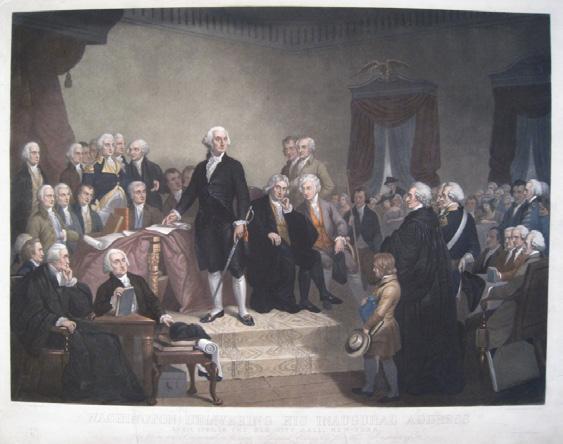
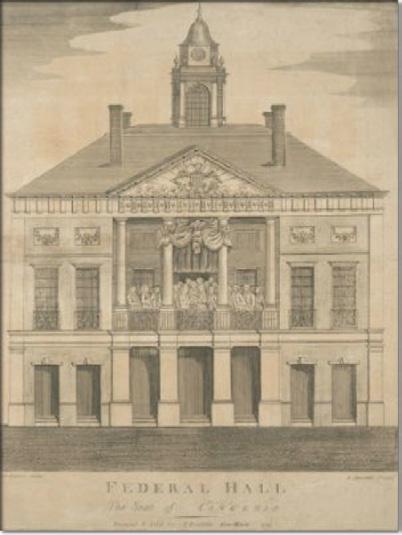
is site was also home to the rst Congress, Supreme Court, and Executive Branch o ces. e current structure, a Customs House, later served as part of the US Sub-Treasury. Now, it is as a museum and memorial to our rst President and the beginnings of the United States of America.

e original Federal Hall was torn down in 1812 a er the government moved the capital to Washington, D.C. An imposing US Customs House built in the Greek revival style was completed on the former site of Federal Hall in 1842. Today, that building (pictured at the top of this page) is Federal Hall National Memorial, where the story of the rst inauguration and early history of the federal government are honored.
Leaders of the recently formed government decided to use the old City Hall building (originally constructed in the early 1700s) as the site for the new capitol. e building stood at the junction of Wall, Broad, and Nassau Streets, in the heart of the New York Citys nancial district. Pierre Charles L’Enfant remodeled the building in preparation for its new purpose and it was subsequently renamed Federal Hall. Shortly a er completing that project, L’Enfant began work on his most famous accomplishment, designing the new capital city of Washington, D.C. (see the network December 2013)

People began to arrive at Washington’s home on Cherry Street in the early light of April 30, 1789. A large crowd, including military units and other dignitaries, followed Washington’s carriage on the short trek to Federal Hall, creating a large procession. Although much more formal, the traditional procession to the Capitol still continues today.
Although the Constitution does not require it, most presidents have sworn the oath of o ce with their right or le hands placed upon a Bible. Several of the Founding Fathers, including Washington, were Masons. e Bible used for the inaugural oath, printed in 1767, was the Altar Bible of St. John’s Masonic Lodge, No. 1. Presidents George H.W. Bush, Carter, Eisenhower, and Harding also used the same Bible when they were inaugurated. When the Lodge is not using it, the Washington Bible is on display at Federal Hall National Memorial.
George Washington Inaugural Bible
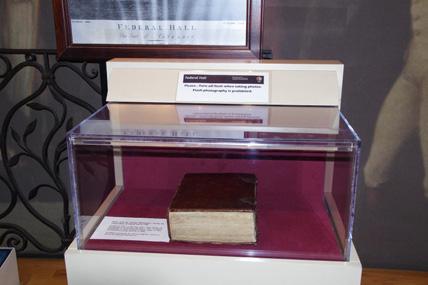
The Bible George Washington used during his inauguration as the first president of the United States on April 30, 1789 was loaned to him by a local Masonic Lodge, St. John’s Lodge No. 1, Ancient York Masons.
Printed in London in 1765, it is now known as the George Washington Inaugural Bible. Members of the St. John’s Lodge allow it to be displayed in a special case in the Inaugural Gallery on the first floor of Federal Hall National Memorial when it is not in use by the Lodge or on tour.
The Bible has also been used in the inaugurations of Presidents Warren G. Harding, Dwight D. Eisenhower, Jimmy Carter, and George H.W. Bush (whose 1989 inauguration was in the bicentennial year of George Washington’s). During the inauguration of Barack Obama as the 44th president on January 20, 2009, members of the St. John’s Lodge and the Washington Bible took part in a special ceremony in front of the statue of George Washington on the steps of Federal Hall to honor the momentous occasion.
Washington recited the oath of o ce on the open-air balcony of Federal Hall in front of hundreds of proud and excited Americans. e oath, as found in the Constitution, has not changed since it was rst recited: “I do solemnly swear (or a rm) that I will faithfully execute the O ce of President of the United States, and will to the best of my Ability, preserve, protect and defend the Constitution of the United States.” ere is some question whether Washington added “So Help Me God” to the inaugural oath prescribed in the Constitution. e few written eyewitness accounts do not mention it. However, the phrase “So Help Me God” was included when swearing oaths required in the courts, the military, and other public o ces and was an accepted part of such solemn commitments at the time.
President Washington addressing a joint session of Congress following his inauguration on April 30, 1789. (Library of Congress)
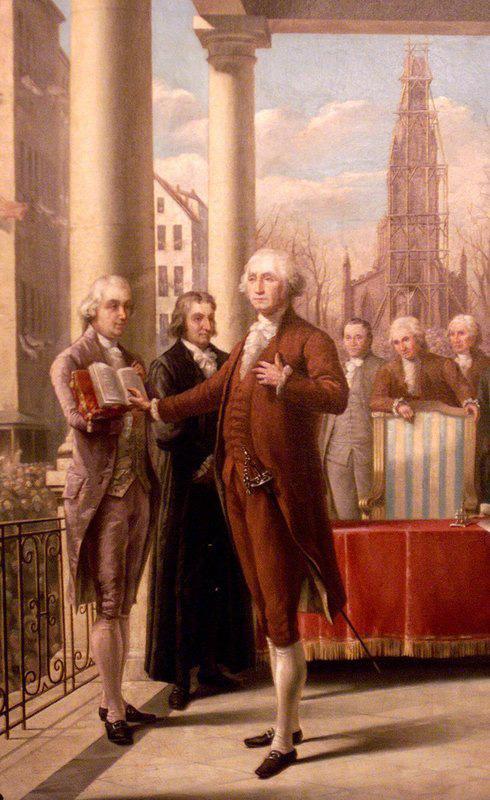
e rst president then turned and entered the building, o cially beginning his duties as the executive of the government. He privately addressed a joint session of Congress, asking for support and further promising to respect the Constitution. Today, the president addresses the nation publicly, and the inaugural speech has become an opportunity to announce new ideas and look toward the future.
A er addressing Congress, President Washington and other dignitaries walked to St. Paul’s Chapel where they attended a church service. St. Paul’s, a chapel of the Parish of Trinity Church, is the oldest surviving church building in Manhattan. While future presidents occasionally attended church on Inauguration Day, Franklin D. Roosevelt is widely credited with starting the modern tradition of attending a church service prior to taking the oath of o ce. In 1933, he and the First Lady, Eleanor Roosevelt, attended morning services at St. John’s Episcopal Church, also known as the “church of the presidents.”
More information:
More about Washington’s inauguration: https://www.archives.gov/legislative/features/gwinauguration/
Text of Washington’s inaugural address to Congress: https://www.archives.gov/exhibits/american_ originals/inaugtxt.html
e Story of the Washington Bible: http://www.stjohns1.org/portal/gwib
President George Washington and his cabinet. Members of Washington’s cabinet included Secretary of War Henry Knox, Secretary of the Treasury Alexander Hamilton, Secretary of State Thomas Jefferson, and Attorney General Edmund Randolph. Not pictured because he was not technically a part of the Cabinet was Vice President John Adams. Historians generally agree that George Washington put together the most brilliant group of cabinet officers in our nation’s history. Unlike subsequent presidents that often polled their cabinet officers in making decisions, however, George Washington made all presidential decisions. He would often seek memos from his cabinet officers to seek their differing opinions, but he never put decisions to a vote. Instead, his cabinet was modeled after his counsel of generals underneath himself where he sought their views, but there could only be one commander. From today’s perspective, Washington might be accused of micro-managing. But given the small size of the federal government when he was President and the lack of the type of White House support staff that modern presidents have to assist them, George Washington had no choice but to become involved in almost all the details of running the new government. This was one of the reasons why George Washington was the most qualified to become the nation’s first president – since he had experience in running a large plantation (that was larger than the entire federal government when Washington was President) and had experience in commanding the Continental Army during the American Revolution. Also, George Washington was the one person that the country could unite behind in putting aside their regional differences.
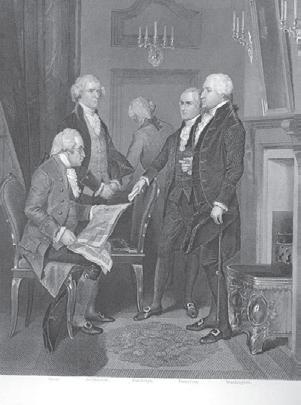
DECEMBER 2018 | THE NETWORK 49
a er the lawyer sends numerous – and o en unanswered – demand letters, emails and phone calls, a lawsuit ensues. If the debtor doesn’t respond to the lawsuit, or if they respond but do not have a defense to the creditor’s claim, the creditor obtains a judgment against the debtor for the amount owed, plus legal fees, interest, and court costs.
family heirlooms; provisions for consumption; farming or ranching vehicles, tools, equipment, books, boats and motor vehicles used in a trade or profession; wearing apparel; jewelry not to exceed 25% of the applicable limit; two rearms; athletic and sporting equipment, including bicycles; a two-wheeled, three-wheeled, or fourwheeled motor vehicle for each member of a family or single adult; certain animals and forage on hand for consumption; household pets; and unpaid commissions for personal services not to exceed 25% of the aggregate limits.
e above list of non-exempt property is abundant, but if you can locate nonexempt property, such as cash, real estate (other than homestead), and other non-exempt valuables, you can seize them. Finding the assets can be a daunting, expensive, frustrating and fruitless task. Some debtors go to great lengths to hide assets. If a debtor hides assets by giving them to family members, friends, third-party trusts or entities after the debt became due, then you may still seize the assets if the debtor transferred them without proper consideration in an attempt to avoid the judgment.
What Is A Judgment?
A judgment is an order (a decision) from a court stating that one party owes another party money. A er obtaining a judgment, a lot of people have the mistaken belief that the debtor will nally pay up. But the judgment is just a piece of paper requiring the debtor to pay up – the judgment merely re ects the court’s agreement that the debt is valid and the debtor is liable for it. e court cannot force the debtor to pay the judgment, and in the United States, “debtors’ prisons” were banned under federal law in 1833. If your debtor is poor, dead, missing, in jail, bankrupt, or de ly hiding their assets, your judgment may be worthless. Also, if the debtor les for bankruptcy, your judgment is probably worthless, or worth just pennies on the dollar. Further, since federal bankruptcy laws require creditors to use the bankruptcy process to collect debts, if the judgment creditor doesn’t follow the rules, the judgment creditor can be sanctioned by the bankruptcy court and forced to pay nes.
But First, Find the Non-Exempt Assets!
To collect on the judgment, you have to nd the debtor’s non-exempt assets. In some states, creditors can garnish an employed debtor’s wages. However, except in limited circumstances (such as student loans, taxes, and child support), a commercial creditor cannot garnish a Texas debtor’s wages, so your only avenue is to seize their non-exempt assets.


Before you start seizing assets, you have to nd the debtor’s non-exempt assets. Unfortunately, Texas’ very “debtor-friendly” laws a ord debtors a lot of protection. e main Texas exemption is the homestead exemption, which prohibits creditors (except your mortgage company and certain vendors that do work on a homestead) from grabbing a debtor’s homestead or forcing a sale. Texas recognizes an “urban” and a “rural” homestead. An urban homestead cannot exceed ten contiguous acres of land, and a rural homestead cannot exceed 200 acres of land (or 100 acres for a single person). e homestead exemption protects the land and the structures –and there is no limit to the value. To qualify as a homestead, you must live on the land.
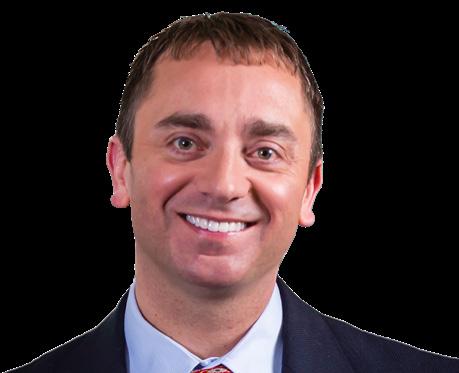

In addition to the generous homestead protection, Texas law exempts a lot of

Most creditors turn to the courts to help nd assets. Even though the court will not guaranty payment on the judgment, they will stand by the creditor and aide in the collection e orts. e best vehicle for this is through post-judgment discovery. is process involves the judgment creditor sending a request for information and documents to the debtor inquiring about the debtor’s non-exempt assets and nancial ability to pay the debt. If the debtor does not respond, provides incomplete responses, or is evasive, the creditor can go back to the court and seek sanctions in the form of monetary penalties or even jail time against the debtor. But squeezing information from the debtor can be frustrating, time-consuming, expensive, and sometimes fruitless.
ese days, creditors also turn to the Internet to nd assets. Even public, governmental websites, like the Texas Secretary of State, Texas Comptroller, appraisal districts, and county clerk’s o ces, are o en vital sources for searching assets. Private online companies, such as TLO, Accurint and Public Data, are also helpful tools for uncovering assets. Another common approach to nd nonexempt assets is to hire a private investigator. But you should always be sure to hire an experienced, licensed, and reputable private investigator. However, despite best e orts, you may never nd any non-exempt assets that are worth seizing.
THE NETWORK | DECEMBER 2018 50
ANTHONY BARBIERI ajb@kesslercollins.com
Anthony J. Barbieri is a shareholder of Kessler Collins, PC in Dallas, Texas. He is a Fellow of the Litigation Counsel of America and a member of the State Bar of Texas, Dallas Bar Association and the American Bar Association. He is also a Contributing Editor of the network
OSLO AIRPORT CITY - A NEW MODEL FOR A SUSTAINABLE AIRPORT CITY




Norway’s Haptic Architects and Nordic – O ce of Architecture are building a new sustainable city from scratch next to Oslo’s busiest international airport. e 988acre development will be powered entirely by renewable energy (equipped with the capacity to sell surplus energy to surrounding buildings, communities, and cities), served by electric (driverless) vehicles, auto-lighting and smart technology for services such as waste and security. It is being developed by the Norwegian development vehicle Oslo Airport City (OAC) and will take 30 years to build.
Already today, the government-owned Oslo Airport is the most digitalized airport in Europe and is expected to be the rst airport to operate its rst electric eet in 2025. Catering to Norway’s passion for sports and outdoor

activities, OAC will be a destination for leisure activities centered around a public park in addition to the traditional cargo and business hub. A car free city center is planned, and its citizens will never be more than ve minutes away from public transport. It will also include hotels, a convention center, o ce and retail space, leisure and cultural facilities, housing and a generous amount of green spaces for the airport’s growing workforce, which is expected to increase from 22,000 to 40,000 people by 2050.
Construction of the rst stage is expected to start in 2019/20 with the rst buildings completing in 2022.

THE NETWORK | DECEMBER 2018 42
“The 20th century was about cities building airports. The 21st century will be about airports building cities…. Look for yesterday’s busiest train terminals, and you will today’s great urban centers. Look for today’s busiest airports, and you will find the great urban centers of tomorrow.”
John D. Kasarda is a Professor of Strategy and


SINCE 2002
a nontraditional approach to business collections Time



to collect
ACCOUNTS RECEIVABLE –TRACKING THEM IS GOOD. COLLECTING THEM IS BETTER .

Business-to-business debts require special, focused expertise and finesse… and the selection of your commercial collection service is an important decision. It revolves around Service, Trust and Recovery. Rates are important, and recovery is the objective (the bottom line) … but there’s more to it.
The company you choose will be handling your money, talking to your customers, and representing you in the marketplace. You want your money as soon as possible – but you don’t want to lose clients.
At ABC, you’re never out-of-pocket for our services. We collect (at prearranged terms) and when – and only when – we succeed (i.e., once we collect money owed to you), do we get paid. There is no fee UNLESS and UNTIL we collect.
Our payment is contingent upon your recovery – so our success is integrally tied to yours.
As a privately owned company, we make decisions based on what is best for our clients. Our focus is exclusively on improving your bottom line, and we have the knowledge and experience to deliver exceptional results.
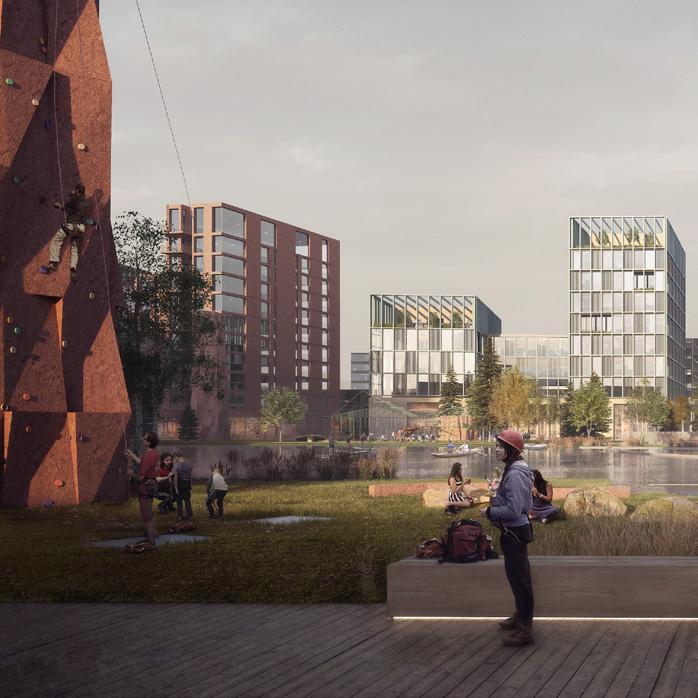
DECEMBER 2018 | THE NETWORK 43 Isn’t it scary that doctors call what they do “practice”?
All renderings are copyrighted and provided courtesy of Forbes Massie Haptic Architects and Nordic – O ce of Architecture. Haptic
thearsenalcompanies.com 682.224.5855 A RSENAL B USINESS C OLLECTIONS
If you were not at Dallas Market Hall on August 9th & 10th, then you missed out on an amazing opportunity to learn from and connect with 2,200+ members of the built environment representing 1,065 companies from all practice areas and market segments.
 LAURA M CDONALD STEWART laura@plinthandchintz.com
LAURA M CDONALD STEWART laura@plinthandchintz.com

Laura McDonald Stewart, RID, FASID, IIDA, LEED AP is Founder and Editor of PLiNTHandCHiNTZ.com,The Online Interior Design Magazine, and manages and promotes METROCON Expo & Conference.
and e Beck Group.
Conference o erings included 40 CEUs, two seminars, a design charrette, two student programs, ve tours, and a Keynote Address delivered by sustainability champion Steve Glenn. An über entrepreneur, Glenn is the Founder & Managing Director of LivingHomes and the CEO of Plant Prefab, companies that work together to design and develop modern, prefabricated homes that combine world-class architecture with an unparalleled commitment to healthy and sustainable construction. Glenn discussed the opportunities and challenges of prefabrication and the strategies he uses to create LEED Platinum level homes for all strata of society.
e planning Committee made up of 21 dedicated volunteers wholeheartedly thanks Landmark Sponsor Dallas Market Center, Media Sponsor Modern Luxury Interiors Texas, and the 53 other METROCON18 Sponsors, as well as all of this year’s Exhibitors, for their incredible support.
Some Exhibitors stood out among the rest: Congratulations to the recipients of the 2018 Pegasus Exhibitor Awards!
• Best of the Best Award – WAC Lighting / Modern Forms
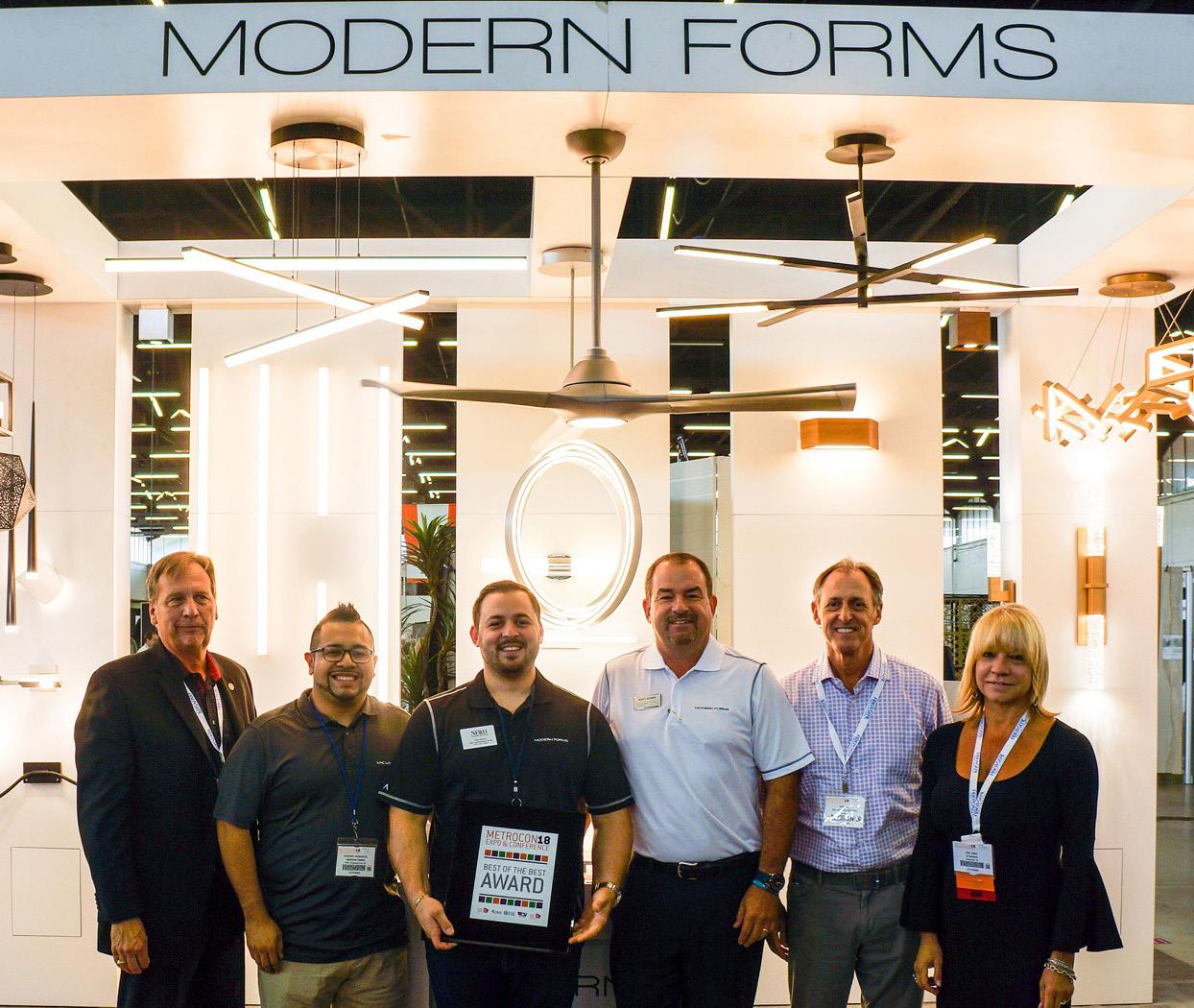
• Lean & Green Award – Urban Woods Company
• Allstar Award – TreeHouse / Dunn Edwards
• Sizzle Award – Empressive GeoDesigns
• Instagram-Worthy Award – LDF Silk
• Mission Award – ASID Texas / ASID Texas Gulf Coast Chapters
98% of Exhibitors served and 87% of Attendees sought out resources for the
market
e event, which is the largest not-for-pro t, self-produced, volunteer-driven, design speci cation-focused regional expo and conference in the USA, celebrated 16 years of industry collaboration. For the second year in a row, ve associations joined forces to o er an expansive event for their members and beyond: (in alphabetical order) ASID Texas Chapter, ASID Texas Gulf Coast Chapter, CSI Dallas Chapter, NEWH Dallas Chapter, and USGBC Texas Chapter.
METROCON18 attracted interior designers, architects, facility managers, students, and a myriad of other essential design industry members from Texas, Oklahoma, and 22 other states across the U.S. Presenters included built environment experts from respected rms like Corgan, Gensler, HKS, HOK, IA Interior Architects, Merriman Anderson Architects, Perkins+Will, PDR, REES,

Mark your calendar now: METROCON19 Expo & Conference will take place in Dallas on August 8 & 9, 2019. Visit www.metroconexpo.org to nd links to view photos and statistics from this year’s show and to sign up to receive noti cations to stay informed about attending, presenting, sponsoring, and exhibiting at next year’s event!
When your only tool is a hammer, all problems start looking like nails.

THE NETWORK | DECEMBER 2018 44
WAC Lighting / Modern Forms won the 2018 “Best of the Best” Pegasus Award for Exhibitors
Keynote Speaker Steve Glenn, a sustainability champion and über entrepreneur, develops modern, prefabricated, LEED Platinum homes
commercial
We would like to extend our thanks to the the Nominating Committee who identi ed this slate of AIA members to serve on the Board of Directors AIA San Antonio. The chapter will vote on this slate at the Chapter Meeting on Monday, October 22, 2018. Voting is limited to professional members only.
2019 President • Jay Louden, AIA
Jay Louden is a partner at Work5hop, a San Antonio design rm focusing on designcentric architecture, interiors, and planning projects. His specializations include master planning and craft-oriented projects.

2020 President-Elect • Federico Cavazos, AIA
Federico Cavazos is a licensed architect with 11+ years of experience in high end mixed use, educational and institutional design. He is a Project Architect at LPA Inc. in San Antonio where he has helped lead the design and development of the rm’s award-winning local educational and commercial work with a specialization in performing arts spaces.
gadgetry
Secretary • Adrianna Swindle, AIA, LEED AP BD+C
Adrianna Swindle is an Architect and Associate at Lake|Flato Architects. She is passionate about large scale commercial and civic projects that impact communities and the workplace.
Treasurer • Beverly Baldwin, AIA
As a Senior Associate at Alamo Architects, Beverly Baldwin specializes in multi-family design with involvement in over ten thousand housing units designed since 2004. Her diverse experience in housing developments include single family, urban in ll townhouses, a ordable garden apartments, market rate mixed use projects, as well as historic renovation.
EP Director • Lindsey Oppelt, Assoc. AIA
Lindsay Oppelt earned a Bachelor of Architecture from Cal Poly, San Luis Obispo and joined Alamo Architects in 2011. Since that time, she has worked diligently to create inspired learning spaces for K-12 clients, and important institutional facilities that are essential to their communities.



Director (2019-2020 Term) • Brady Dietert, AIA, LEED AP BD+C

Brady Dietert’s passion for architecture is rooted in stewardship and sustainable design.
After graduating M. Arch from Texas A&M University in 2012, Brady spent two years working with Corgan in Dallas; since joining Overland Partners in 2014, he has grown in his career and experience to become a project architect and project manager on multiple project types.
TxA Director (2019-2020 Term) • Adam Reed, AIA, LEED AP


Adam Reed is a Principal with Ford, Powell & Carson Architects & Planners, Inc. His Maser of Architecture degree comes from the College of Architecture at Texas Tech University, where he graduated with honors and received his certi cate in Community and Urban Development.

See Inside Back Cover and enter our contest for a chance to win one of the items shown here.

ChargeHub Powerstation 360
Surge Protector Power Strip
• Charges up to 10 devices at once
• Features 4 USB Ports and 6 AC Outlets
• Each USB Port utilizes patented SmartSpeed® Technology at 2.4A per port, providing a fast charge for virtually any USB device
• Promotes up to 4000 Joules of surge protection that ensures devices are safe from power uctuations, spikes and surges

• Includes screws, hanging template, and instructions for easy wall mounting


Wi-Fi

Smart Plug

• Perfect for any home, o ce, dorm room, workshop and more!
• MSRP $59.99
• Available at https:// limitlessinnovations.com/ product/powerstation-360/
DECEMBER 2018 | THE NETWORK 45
that’s hot and cool at the same time
Advertising Faux Pas
GM had a asco is trying to market the Nova in Central and South America. In Spanish, “No va” means “It doesn’t go.”
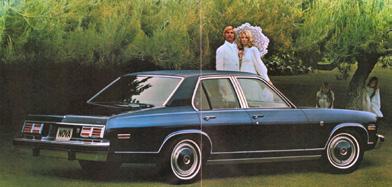
CREW Dallas Awards Banquet


e 2018 CREW Dallas annual awards banquet honoring the Outstanding Achievement & Rising Star awards was a great success. Congrats to Kathy Phillips Mulgrew of Spencer Consulting for winning the 2018 Outstanding Achievement Award! Congrats also to Megan Ohm DeLeon of Adolfson & Peterson Construction, who received the Rising Star Award. anks to Locke Lord as our presenting sponsor and to Republic Title and Stream for serving as award sponsors.

DALLAS


e Dallas chapter of the National Association of Women in Construction installed its 2018-2019 Board of directors on September 19th. e new board took on October 1, 2018.



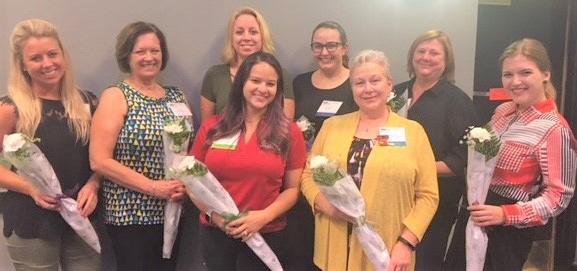


HOUSTON
The Dairy Association’s huge success with the campaign “Got Milk?” prompted them to expand advertising to Mexico. It was soon brought to their attention that the Spanish translation read “Are you lactating?”
Clairol introduced the “Mist Stick” (a curling iron) into Germany only to nd out that “mist” is slang for manure. Not too many people had use for the “Manure Stick.”

When Gerber started selling baby food in Africa, they used the same packaging as in the US, with the smiling baby on the label. Later they learned that in Africa, companies routinely put pictures on the labels of what’s inside, since many people can’t read.
An American T-shirt maker in Miami printed shirts for the Spanish market which promoted the Pope’s visit. Instead of “I Saw the Pope” (el Papa), the shirts read “I saw the Potato” (la papa). Pepsi’s “Come Alive with the Pepsi Generation” translated into Chinese reads “Pepsi Brings Your Ancestors Back From the Grave.”
The Coca-Cola name in China was rst read as “Kekoukela” meaning “Bite the wax tadpole” or “female horse stu ed with wax” depending on the dialect. Coke then researched 40,000 characters to nd a phonetic equivalent “kokoukole” translating to “happiness in the mouth.”
Frank Perdues’ chicken slogan “It takes a strong man to make a tender chicken” was translated into Spanish as “It takes an aroused man to make a chicken a ectionate.”
When Parker Pen marketed a ball-point pen in Mexico, its ads were supposed to have read, “It won’t leak in your pocket and embarrass you.”

The company thought that the word “embarazar” (to impregnate) meant to embarrass, so the ad read: “It won’t leak in your pocket and make you pregnant.”
Coors put its slogan, “Turn It Loose” into Spanish, where it was read as “Su er From Diarrhea.

Colgate introduced a toothpaste in France named “Cue”, which, at the time, was a name of a notorious porn magazine.

THE NETWORK | DECEMBER 2018 36
Deja moo –the feeling that you’ve heard this BS before.
Kathy Mulgrew Megan DeLeon
(L-R): Jennifer VanBreda (Johnson Controls), Ann McCullough (McCullough & Associates), Candace Jones (Gerdau Reinforcing Steel), Debbie Parker (King of Texas Roo ng), Kim Gibbons (McCarthy Building Company), Britni Hammond (Iowa Bridge & Culvert), Lindsay Lauderdale (Bras eld & Gorrie General Contractors), Deenie Kurtz (Briggs Equipment) {Not Pictured: Laurel Wesson (United Rentals)}
Janet Shipley, CPM (CBRE) and Stephanie Swanson, CPM (Transwestern) pose with luncheon speaker Je Lindner
Namba Parks ( e Green Mall) is an o ce and shopping complex in Osaka, Japan. It consists of a 30-story o ce building called Parks Tower and a 120-tenant shopping mall with roo op garden. (It was developed by American architect Jon Jerde.) From the rst oor to the 9th oor, there are fashion, accessories, interior, cosmetics and other various shops, along with a plethora of restaurants and cafes and a movie theater. ere are gardens on the terraces from the rst oor to the 9th oor with a variety of owers and trees and there are also seasonal birds and insects, creating a unique rest area for the city.


In addition to providing a highly visible green component in a city where nature is sparse, the sloping park connects to the street, making it easy for passers-by to enter its groves of trees, clusters of rocks, cli s, lawn, streams, waterfalls, ponds and outdoor terraces as it ows past several city blocks. To insulate and prevent the heat island phenomenon and also conserve ecosystems, just under half of it is green space. It has won awards both foreign and domestic, and in the 2012 version of Travel + Leisure magazine it was chosen as the most beautiful urban park in the world.



DECEMBER 2018 | THE NETWORK 37 The trouble with doing something right the first time is that nobody appreciates how di ffi cult it was.
The Four Types of Objections That Derail Salespeople (and How to Deal With Them)
No may be a tiny word, but for salespeople it’s the most dreaded word in the English language. Nothing causes your heart to sink quite like an objection from a prospective customer. is is true not just because it presages a negative impact on your income, but also because it’s incredibly painful to hear. It’s no coincidence that “objection” rhymes with “rejection”—and the latter is one of the deepest, darkest, most primal human fears.
ere’s no way to avoid objections. ey’re going to happen. What you can do is learn how to rise above the emotional disruption they cause and, hopefully, salvage the sale.
ere are four types of objections you encounter in the sales process, and they occur at various points in the journey. ey can stop a sale before it ever gets started, derail your e orts in the middle of the conversation, or shut down the deal at the end a er weeks, even months, of hard work.
e good news is that when you arm yourself with an arsenal of turnaround frameworks, you can face these roadblocks and get past them so you can move onto the next stage.
Here are the four types of objections salespeople must eld, along with a few tactics to help you get in the door, shorten the sales cycle, increase pipeline velocity, avoid stalled deals, and, of course, close the sale.


TYPE 1: Prospecting Objections. Of all objections, these are the most severe. ey’re o en harsh and cold, and at times, at-out rejection. People are crazy busy and see little value in spending time with salespeople. rough a combination of re ex responses, brusho s, and objections (RBOs), they do their best to get rid of you. For this reason, millions of salespeople treat prospecting like the plague and avoid interrupting prospects at any cost. However, if you want success in your sales career, then you’ve got to interrupt prospects.
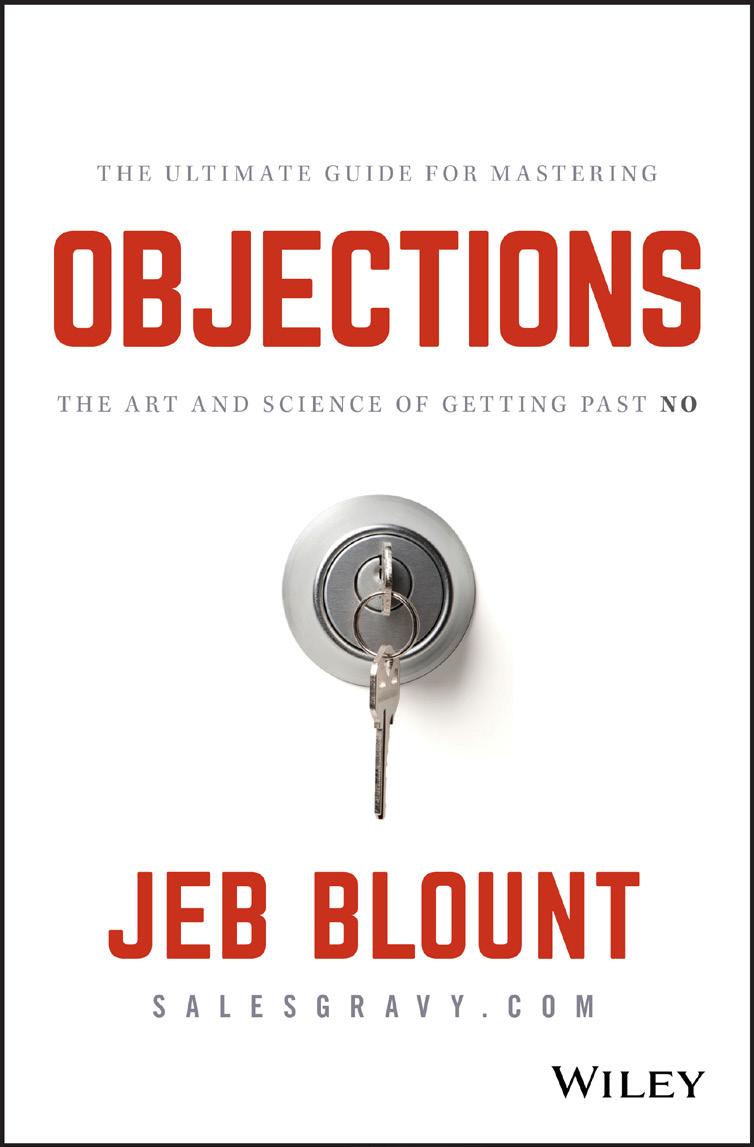
Know that you are going to get prospecting objections, and they will trigger your disruptive emotions. But it is possible to rise above your emotions and become e ective at turning around prospecting objections. For RBOs during prospecting, deploy a simple but powerful three-step framework:
1. Ledge. A ledge is a memorized, automatic response to perceived or real rejection that does not require you to think. Using a ledge gives your logical brain the moment it needs to catch up, rise above disruptive emotions, and gain control.
2. Disrupt. Your prospect has been conditioned from hundreds of prospecting calls and expects you to act like every other salesperson. When they tell you no, they have an expectation for what you will most likely do next. To turn around your prospect’s RBO, deliver a statement or question that disrupts this pattern and pulls the prospect toward you. For example, when they say they’re busy, instead of arguing with them that you will take only a little bit of their time, disrupt their pattern by agreeing with them: at’s exactly why I called; I gured you would be, and I want to nd a time that’s more convenient for you. Or, when they say, “I’m not interested,” respond with: at makes sense. Most people aren’t the rst time I call, and that’s exactly why we should meet.
3. Ask. Here’s where most prospecting RBO turnarounds fall apart. Many salespeople are hesitant to ask again. But you must control your emotions and ask again for what you want, without hesitation. When you ask, about half of the time they’ll throw out another RBO—one that tends to be closer to the truth. Be prepared to turn it around and ask again. (Just don’t ght. It isn’t worth it. Once you get two RBOs, graciously move on and come back to them another day.)
TYPE 2: Red Herrings. A red herring is an irrelevant topic or issue that gets introduced into the conversation by a stakeholder that distracts you from your focus or diverts your attention from the objective of your sales conversation. A stakeholder, typically early in the conversation, will throw out a red herring—sometimes to challenge you, sometimes because they don’t know what else to say, sometimes because it’s their habitual behavior pattern, and sometimes because they have a valid concern or question.
A red herring might be something like: “We are already in discussions with your competitor,” or, “Just so you know, we’re not buying anything from you today.” Do not take the bait! You must avoid getting drawn in by red herring objections at all costs. When you chase red herrings, you blow up sales calls, skip steps in the sales process, hand control over to stakeholders, and become their puppet. Red herrings, managed poorly, are emotional hijackers that turn sales calls into train wrecks.
Moving past red herrings requires massive emotional control, so you need a simple and habitual system that keeps you in control—PAIS: Pause, Acknowledge, Ignore, Save.
• Push the pause button and collect your emotions.
• Acknowledge and let the stakeholder know that you heard them. You might say: at makes sense or I get that or is sounds important.
• Ignore the red herring unless it comes up again, or…

• Save it and address at a later, more appropriate time.
My default is to ignore the red herring unless it comes up again, because I’ve learned, over a lifetime in the sales profession, that they almost never do. I acknowledge the concern, and my favorite way to do this is to simply take notes. Writing down what they say lets them know that I think it is important without getting pulled in. en I ask an unrelated open-ended question that gets my stakeholder talking.
TYPE 3: Micro-Commitment Objections. roughout the sales process, you’ll ask stakeholders for next steps and micro-commitments. Micro-commitments are a series of low-risk commitments that lead down the path to a nal buying commitment. Asking for them and consistently getting to the next step keeps the momentum rolling. You must never, ever leave a conversation with a stakeholder without a rm next step.
THE NETWORK | DECEMBER 2018 38
Selling is a process, and prospects will say no, in different ways and with different words, at every stag e of the journey. Here are the four types of objections you’ll encounter and some powerful techniques for turning them around.
A lot of money is taintedTaint yours and taint mine.
Jeb Blount is the author of Objections: The Ultimate Guide for Mastering the Art and Science of Getting Past No
Here’s the problem: e people you are dealing with don’t always see the value in spending more time with you, so they hit you with brush-o s to make you go away. e good news is micro-commitment objections are rarely harsh and, unless you totally bombed, are rarely outright rejection. For this reason, the key to getting past these objections is showing poise and con dence and helping your prospect see the value of scheduling the next step.
Once you explain the value in a way that they understand, the prospect will agree to the next step. Value, however, is in the eye of the beholder. ey want to know What’s in it for me?—and you must answer that question. Step into your prospect’s shoes and write down why it should matter to them. What is the value trade for investing more time with you? en cra compelling value statements that articulate this in your stakeholder’s language and terms.
Keep it simple. Remember that these are micro-commitments—small steps and low-risk requests. It’s easy to get stakeholders to say yes. ese value statements don’t need to be profound or complex. ey should not be pitchy. Avoid jargon that makes you sound like a marketing brochure. You don’t need to be perfect— just good enough to get to the next step.
TYPE 4: Buying Commitment Objections. When you ask people to make buying decisions—sign contracts, hand over credit cards, issue POs, switch vendors, and accept your proposal—you will get objections. Getting past buying commitment objections is o en the moment of truth that determines whether or not you will close the deal. e outcome pivots on your ability to gain control over your emotions, guide the conversation, and in uence your stakeholder’s emotions.
Unlike prospecting objections and micro-commitment objections, the number of possible buying commitment objections isn’t nite and predictable. ey are situational. You’ll deal with price and budget objections, timing objections, status quo objections, need to talk it over with my boss or committee objections, spouse objections, buying authority objections, competitor objections, need to think it over objections, need and t objections, and terms and conditions objections, among others.
Dealing with buying commitment objections requires nuance, patience, in uence, and situational awareness. e process of getting past no becomes more collaborative and will seamlessly shi from objection to negotiation. e following ve-step framework will help you gain emotional control and in uence your buyer to say yes:
1. Relate. Acknowledge and relate to the objection. Don’t treat them like a number, discount their concern, challenge their point of view, judge them, or start an argument.
2. Isolate and clarify. Ask questions to isolate the “real” objection, issue, or concern. Clarify your understanding before addressing. e key here is to ask open-ended questions that get your buyer talking and expressing their real concerns.
3. Minimize. Remind the stakeholder of their problems, pain, threats, opportunities, and the yesses you’ve collected.

4. Ask. Ask again and assume the yes.

5. Fall back to an alternative. If you still get a no, o er an alternative commitment with a lower perceived risk. Have your fallback positions planned prior to your closing call.
Practice the worst-case scenarios. Put every potential objection and response on the table and work through the ve-step process until you handle them all with ease. I’ve found practice helps build obstacle immunity, prepares you to manage disruptive emotions, and makes it far easier to think on your feet, in the moment. When you plan and practice in advance, you’ll nd the actual objections you get at closing are far tamer than what you initially expected.
None of these tips (and there are many more in my new book Objections) are rigid scripts. at’s because dealing with objections is more an art than a science. I prefer to teach turnaround frameworks, not generic scripts, because frameworks make you agile. ey give you a set of rails to run on that ex to changing context. ey help you manage your disruptive emotions and pull your prospect toward you so that it becomes easier for them to say yes—which is, of course, the salesperson’s favorite word.
About the Book:
Objections: The Ultimate Guide for Mastering the Art and Science of Getting Past No (Wiley, June 2018, ISBN: 978-1-119-47738-9, $27.00) is available at bookstores nationwide, from major online booksellers, and direct from the publisher by calling 800-225-5945. In Canada, call 800-567-4797. For more information, please visit the book’s page on www.wiley. com. A copy of this book is available as a prize in this quarter’s contest. Go to page 63 and enter today!

Calling all lexophiles…
Venison for dinner again? Oh deer!
How does Moses make tea? Hebrews it.

England has no kidney bank, but it does have a Liverpool. I tried to catch some fog, but I mist. They told me I had type-A blood, but it was a Typo.
I changed my iPod’s name to Titanic. It’s syncing now. Jokes about German sausage are the wurst.
I know a guy who’s addicted to brake uid, but he says he can stop any time.
I stayed up all night to see where the sun went, and then it dawned on me. This girl said she recognized me from the vegetarian club, but I’d never met herbivore.
When chemists die, they barium.
I’m reading a book about anti-gravity. I just can’t put it down. I did a theatrical performance about puns. It was a play on words. Why were the Indians here rst? They had reservations.
I didn’t like my beard at rst. Then it grew on me.
Did you hear about the cross-eyed teacher who lost her job because she couldn’t control her pupils?
When you get a bladder infection, urine trouble. Broken pencils are pointless.
What do you call a dinosaur with an extensive vocabulary? A thesaurus. I dropped out of communism class because of lousy Marx.
I got a job at a bakery because I kneaded dough.
Velcro - What a rip o !
Do not worry about old age; it does not last.
Summer’s Winter Reading List
Fiction
• Holmes Does it Again by Scott Linyard
• Grave Mistakes by Paul Bearer
• The Great Flood by Noah Zark
• ‘Fading Away’ by Peter Innout
Non-Fiction
• Vegas Divorces by Marion Hayste

• A Boxing Cornerman’s Story by Dawson DeTowel
• Lazy Employees by Hans Doolittle
• It’s Magic! by Sven Galli
Self Help/How to


• Making Explosives by Stan Wellback
• Look Younger by Fay Slift
• Why it Won’t Work by Mel Function
• Good Housekeeping by Lottie Dust
For Children
• O to Market by Tobias A. Pigg
• Life Before Cars by Orson Buggy

• Children’s Songbook by Skip Tumalu
• Fun at the Circus by Tamon D. Lyons
DECEMBER 2018 | THE NETWORK 39
Summer
Vital papers will demonstrate their vitality by moving from where you left them to where you can’t find them.
Men Are Just Happier People!


‘ What do you expect from such simple creatures? Your last name stays put. The garage is all yours. Wedding plans take care of themselves. Chocolate is just another snack. You can never be pregnant. You can wear a white T-shirt to a water park. You can wear NO shirt to a water park.
Car mechanics tell you the truth. The world is your urinal. You never have to drive to another gas station restroom because this one is just too icky. You don’t have to stop and think of which way to turn a nut on a bolt. Wrinkles add character. Wedding dress - $5,000. Tux rental - $100. People never stare at your chest when you’re talking to them. New shoes don’t cut, blister, or mangle your feet. One mood all the time. Phone conversations are over in 30 seconds at. You know stu about tanks.
A ve-day vacation requires only one suitcase. You can open all your own jars. You get extra credit for the slightest act of thoughtfulness. If someone forgets to invite you, he or she can still be your friend. Your underwear is $8.95 for a three-pack. Two pairs of shoes are more than enough. You almost never have strap problems in public. You are unable to see wrinkles in your clothes. Everything on your face stays its original color The same hairstyle lasts for years, maybe decades. You only have to shave your face and neck.
You can play with toys all your life. One wallet and one pair of shoes - one color for all seasons. You can wear shorts no matter how your legs look. You can ‘do’ your nails with a pocket knife. You have freedom of choice concerning growing a mustache. You can do Christmas shopping for 25 relatives on December 24in 25 minutes.
No wonder men are happier!
Nicknames
If Laura, Kate and Sarah go out for lunch, they will call each other Laura, Kate and Sarah. If Mike, Dave and John go out, they will a ectionately refer to each other as Fat Boy, Bubba and Wildman.

Eating Out
When the bill arrives, Mike, Dave and John will each throw in $20, even though it’s only for $32.50. None of them will have anything smaller and none will actually admit they want change back.
When the girls get their bill, outcome the pocket calculators.
The Royal Ontario Museum (ROM) is a museum of art, world culture and natural history in Toronto, Ontario, Canada. It is one of the largest museums in North America, and the largest in Canada, attracting more than a million visitors every year. It was formally established in 1912, but the centerpiece of its 2002-2007 renovation and expansion was a structure created by architect Daniel Libeskind , whose design was selected from among 50 nalists in an international competition. (See the network of December, 2017 for a feature on Libeskind.)


Money
A man will pay $2 for a $1 item he needs. A woman will pay $1 for a $2 item that she doesn’t need but it’s on sale.
Bathrooms
A man has six items in his bathroom: toothbrush and toothpaste, shaving cream, razor, a bar of soap, and a towel.
The average number of items in the typical woman’s bathroom is 337 A man would not be able to identify more than 20 of these items.
Arguments
A woman has the last word in any argument. Anything a man says after that is the beginning of a new argument.
The Future
A woman worries about the future until she gets a husband. A man never worries about the future until he gets a wife.
Marriage
A woman marries a man expecting he will change, but he doesn’t. A man marries a woman expecting that she won’t change, but she does.
Dressing Up
A woman will dress up to go shopping, water the plants, empty the trash, answer the phone, read a book, and get the mail.
A man will dress up for weddings and funerals.

Natural
Men wake up as good-looking as they went to bed. Women somehow deteriorate during the night.
O spring
Ah, children. A woman knows all about her children. She knows about dentist appointments and romances, best friends, favorite foods, secret fears and hopes and dreams.
A man is vaguely aware of some short people living in the house.
Thought for the Day
A married man should forget his mistakes. There’s no use in two people remembering the same thing!
THE NETWORK | DECEMBER 2018 40
Also in 1990, Fort Worth became the rst U.S. city to link in Hungary and this partnership continues to produce interesting and rewarding exchanges, such as Texas Christian University’s Budapest campus. Widely regarded as one of the most beautiful cities in Europe, its World Heritage Sites include the banks of the Danube, the Buda Castle Quarter, Andrássy Avenue and the Millennium Underground Railway, the rst on the European continent. Budapest



Fort Worth’s closest Sister City - Toluca, Mexico - is the state capital of the State of Mexico. It is the center of a rapidly growing urban area, now the h-largest in Mexico and it has become an important economic city because of its robust industries and infrastructure, producing beverages, food, textiles, cars and electronic products. It was signed in 1998. Toluca
In 2011, Guiyang, China (the capital of the Guizhou province and its political, cultural and economic center) became Cowtown’s eighth Sister City. Abundant in natural and cultural resources, there are 57 minority nationalities in Guiyang. The strikingly beautiful modern architecture of Guiyang has often been featured on these pages and can be seen on page 26 as well Guiyang



e relationship between Mbabane, eSwatini (formerly Swaziland) and Fort Worth (signed in 2004) demonstrates the humanitarian power of the City’s Sister Cities organization, as illustrated by the community health center built through the Bill & Melinda Gates Foundation and the Africa Urban Poverty Alleviation Program. is capital city has an estimated population of 95,000.
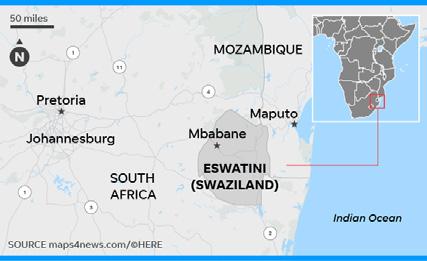

Mbabane


Just Did It

Coming in 2019: Nimes, France (click on the Fact Sheets and Maps)



See more at https:// www.facebook.com/ fortworthsistercities/


DECEMBER 2018 | THE NETWORK 35 If at first you don’t succeed, skydiving is not for you.
Fort Worth Sister Cities


Twin towns or sister cities are a form of legal or social agreement between towns, cities, and other political subdivisions to promote cultural and commercial ties. Conceived a er the Second World War in 1947, the idea was intended to foster friendship and understanding between di erent cultures and between former foes as an act of peace and reconciliation, as well as to encourage trade and tourism. By the 2000s, town twinning became increasingly used to form strategic international business links between member cities.
Town twinning begins for a variety of reasons. Generally, partner towns have similar demographics and size. ey may arise from business connections, travel, similar industries, or shared history. A twin towns program was instituted in the United States in 1956 when President Dwight Eisenhower proposed a citizen diplomacy initiative. Sister Cities International (SCI) was originally a program of the National League of Cities, but it became a separate corporation in 1967 due to the growth and popularity of the program. e goal of the Sister Cities program is to involve people and organized groups at all levels of society, establishing productive, people-to-people relationships through global community partnerships and volunteer action.


Today, the SCI represents over 2,000 US cities, counties and states and their partners in over 140 countries worldwide. As international cooperation gains importance, city-to-city programs continue to play a signi cant role in overall global development and cultural understanding.

is issue and the next several issues of the network, will feature the sister city relationships between Texas cities and their foreign counterparts.


The City of Forth Worth has 8 Sister Cities relationships. Click on the city name to see and learn much more about each fascinating place (videos, pictures, text), how and why the relationship began, the Sister Cities program itself and how you can get involved.
Also in 1987, Fort Worth entered a relationship with Trier, Germany – the oldest true city in Germany (founded in or before 16 B.C.). ere are diverse and bountiful exchanges for hundreds of people, including annual student exchanges and an active intern program between the two cities as well as musical, art and other cultural exchanges and hunting expeditions. Trier

Fort Worth’s relationship with relationship with Bandung, Indonesia began in 1990. On the island of Bali, it is Indonesia’s third-largest city and was the rst Sister City program between Indonesia and the United States). In the post9/11 environment, the Fort Worth/Bandung relationship intends to help set the standard by which U.S.-Islamic partnerships will be measured, thanks to the strong foundation between the two cities based on (Fort Worth) corporate connections with Bell Helicopter, Lockheed Martin and Pier 1 Imports. Bandung


Fort Worth’s rst sister city (1985), Reggio Emilia, Italy was originally a Roman fortress situated in the Apennine foothills of Northern Italy. It is an historic city, home to spectacular cathedrals and palace dating back to the 12th century, located near Florence. e program developed rst-ever exchanges, including Tricolore Youth Sports Games, a youth-based version of the Olympics in which Fort Worth is the sole United States participant and international wheelchair basketball tournaments.
Reggio Emilia


Fort Worth’s relationship with Nagaoka, Japan (which was signed in 1987) is its most active program, with over 200 youth and adults exchanging each year for programs in sports, culture and education. Among the relationship bene ts and opportunities are an annual twoweek educational exchange and a spectacular reworks gi for Fort Worth’s celebration as an AllAmerica City. Nagaoka

conscience
—
My
is clean
I have never used it.
Harashin scholars in Forth Worth’s Sundance Square
buildings o er rooftop community gardens, shops, and elderly housing. The result is an inter-generational community housed in a single complex.
One particularly enthusiastic proponent of the vertical village is German architect and urbanist Ole Scheeren, whose successes in Asia may help translate the concept for North American audiences. Scheeren’s 1,040unit Interlace complex in Singapore was named Building of the Year at the 2015 World Architecture Festival and has garnered international attention.

Composed of 31 separate six-story structures, the Interlace rises to 24 stories at its highest point. While it has been compared to a mass of Jenga blocks, the placement of its structures is more method than madness, incorporating studies of the area’s sun, wind, and climate to aid with energy e ciency. Wind corridors and pools of water work together to create cooling breezes, and the Interlace’s courtyards are intentionally shaded from the sun.

While obviously massive, the complex feels permeable and inviting rather than daunting. Living spaces coexist with terraces that house swimming pools, tennis courts, roof gardens, and verdant courtyards. Taken together, the complex feels more like a sprawling resort than it does an apartment complex, with its emphasis on purpose-built shared spaces.
Soon, Scheeren’s work will cross the Paci c and aspire even higher in Vancouver, British Columbia. Plans for Barclay Village reveal a pair of towers made up of stacked and jutting glass volumes, occasionally broken up by lush green terraces. Again, Scheeren’s goal is to break up homogenous height with innovative variation. Here, residential layouts will include multi- oor units, creating house-like environments within the towers.

As urbanization shows no signs of slowing, it only makes sense to continue to scrutinize our own expectations of what building upward o ers. Rather than simply stacking residences and o ces on top of each other, we have

DECEMBER 2018 | THE NETWORK 33
MATT MUNCIE matt.muncie@heartsmart.com
Matt Muncie is the Major Accounts Manager for HeartSmart.com

Automated External Defibrillators
In the time it takes you to nish this article, three people in the United States will have died from Sudden Cardiac Arrest (SCA). SCA, in fact, claims 350,000 lives a year (American Heart Association, 2017)! at’s more than breast cancer, prostate cancer, leukemia (American Cancer Society, 2018), stroke, AIDS and auto accidents (Center for Disease Control, 2018), combined. But 75% of people who die from Sudden Cardiac Arrest can be resuscitated by an Automated External De brillator (AED) if used within three minutes (Weisfeldt ML, 2010), so it is likely that at least two of them could have been saved. What would happen if someone had a cardiac event at your property?
Ensuring the safety of tenants and visitors alike is no easy task, but fortunately for us, SCA is treatable and o en requires little-to-no training. AEDs are portable devices that are able to detect and treat SCA using the same therapy and treatment found in a hospital or ambulance but are automated and speci cally designed to be used by people with minimal training.
is is intended to provide the basics you need to know about implementing an AED program at your property, including how to choose the correct AED, how many may be needed and where to place them, as well as some of the important principles of the Good Samaritan law.
Step One: Choosing an AED
First, you will need to select an AED model, which can be a daunting task if you aren’t sure what you need. ere are many models available in the US, but the features can vary widely. Every model is rigorously regulated by the FDA and is able to detect and treat SCA. ey all save lives, and it is fair to say that there aren’t any bad choices. If any of us found ourselves clinically dead from SCA, I doubt we would care what brand or model was used to bring us back to life – so long as an AED was used.
Some AEDs t better in certain environments. To determine what’s right for you, start by considering the environment in which it will be placed. Do you envision placing AEDs outdoors? If so, make sure to ask for an AED that can be stored at high or low temperatures. Will your AED(s) be accessible to individuals who don’t speak English? If so, consider an AED with video instructions, fully automatic shock delivery or the ability to support other languages. You probably didn’t know that all AEDs are rated for their resistance to dust and water – some are highly resistant, and some are not recommended for use in moist or dusty environments. If you want to place them in a pool area or in an area with a lot of dust, look for an AED that has higher ratings.
Next, determine your budget. New AEDs start at $1245 and go up from there. O en you can nd special deals that include free wall cabinets, free shipping and other free accessories for the same price. Some sites may o er additional discounts for purchasing more than one AED – don’t be afraid to ask! A er determining your budget, you should share it with the companies you are shopping with and make sure that you are only receiving quotes for models that t your budget. Lastly, when determining your budget, keep in mind AED pads and batteries expire and have to be replaced, so make sure you understand how o en you will need to replace pads and/or batteries, and what those costs are.

Step Two: Determining how many AEDs you need, and where to place them
Access and coverage are the primary objectives here. To maximize e ectiveness, an AED should be used within three minutes (American Heart Association) of SCA if possible. at means that from any given area, you have a maximum of 90 seconds to get the AED, and 90 more seconds to be back at the scene using it. is is a helpful guideline as we can easily measure how much ground we can reasonably cover in that time! All you need is a oorplan and a stopwatch.
Start by reviewing the oorplan and identifying locations that are central and accessible (avoid locked doors, special access or remote areas). Once you’ve identi ed your locations, take a stopwatch and go to that location. From your location, walk briskly or jog north for 90-seconds, and mark that location on the oor plan. Return to the original location. Repeat the exercise in one more direction – east, west or south. Also mark that location on your oorplan.
Now that you have your two locations plotted, simply take a compass and draw
a circle through your two locations. e resulting circle will encompass the real estate that can reasonably be covered by each AED in the 3-minute target response time. If the highly populated and high-risk areas of your property are inside of your circles, you’ve chosen a good spot! If they aren’t inside or if there is too much of the space outside of the circles, move your AED locations. e map will end up looking similar to this:
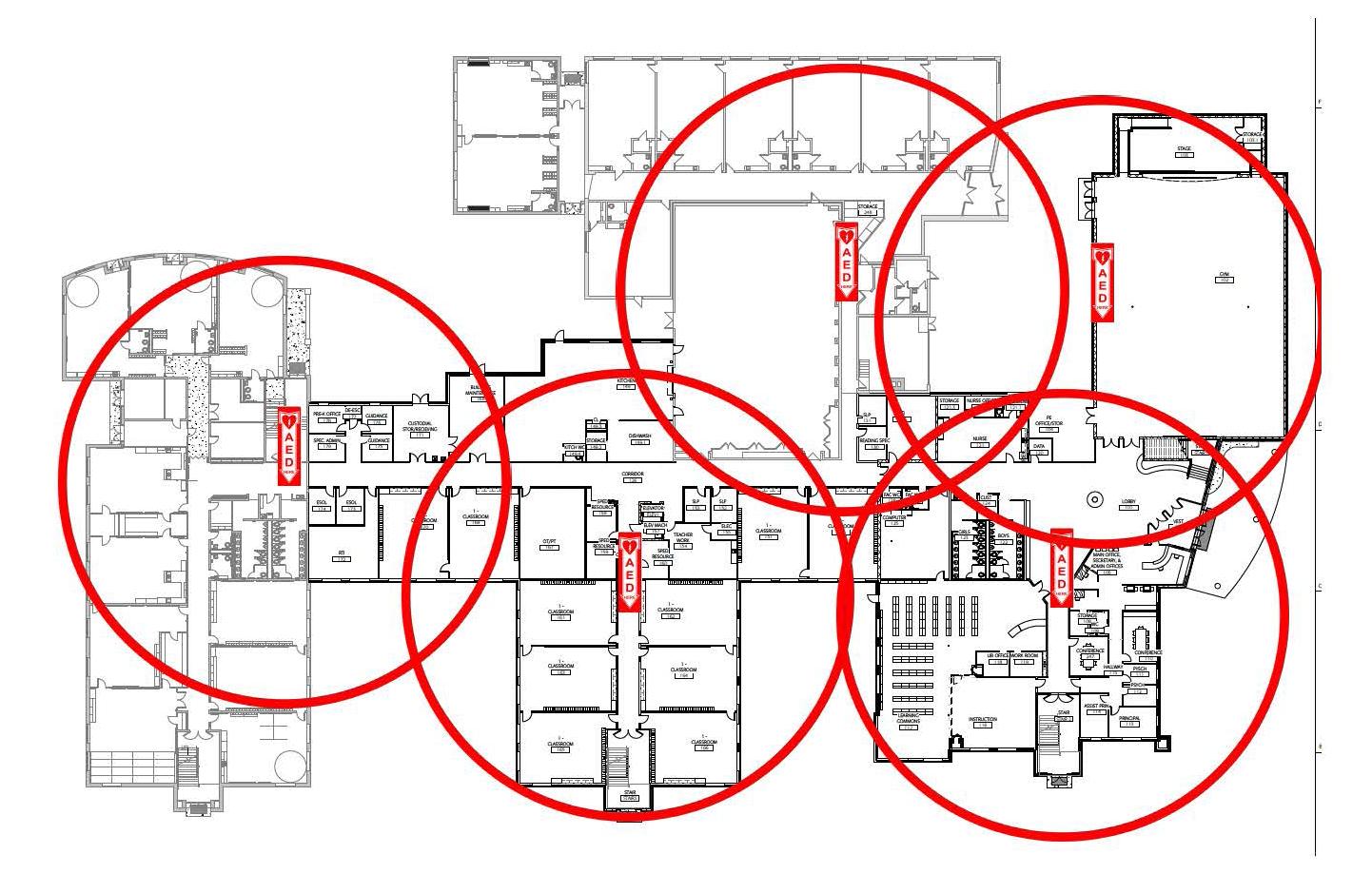
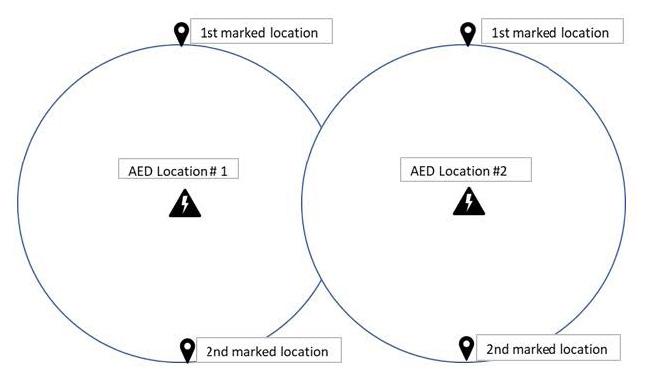
If your property has multiple oors or buildings, this exercise should be repeated on each oor and in each building. You may not be able to cover every corner, but by using this method you will ensure each AED covers as much property as possible. Once complete it should look similar to this:
Legal Considerations and Good Samaritan Laws:
All 50 states and D.C. include using an AED and CPR in their Good Samaritan laws. Good Samaritan coverage varies by state, but the common principles are the same nationwide. If you assist someone with good intent, do not accept money or other payment for helping, keep their information private and try not to treat beyond your scope of training, you will be protected by the Good Samaritan Act. For more information, read your state’s speci c Good Samaritan law.
Conclusion
As with any purchase, be sure to nd a vendor who can answer your questions and who is attentive and sensitive to your speci c needs. Once you have decided what features you want in an AED, how many you will need and a budget, stick to your plan. And most importantly, remember that AEDs are simple-to-use and save lives. To learn more, go to www.heartsmart.com
DECEMBER 2018 | THE NETWORK 41 If nothing was learned, nothing was taught.
ANGELA O’BYRNE aobyrne@e-perez.com

Angela O’Byrne, FAIA, is President of Perez, APC, a 70+ yearold architecture, planning, interior design, and construction rm. She is also a Contributing Editor of the network

Building Community Up The Rise of the Vertical Village


In our September ’17 issue, we wrote about The Interlace. Here is more in-depth view of this amazing building.

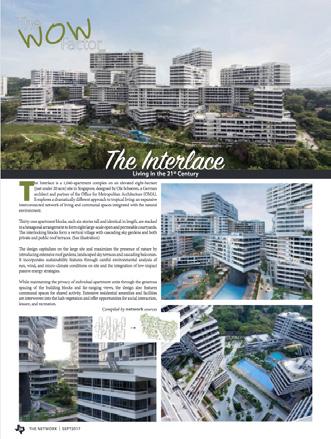
Over the past y years, one global demographic trend has remained remarkably steady: increased urbanization. At the turn of the 20th century, only 15% of the planet’s people lived in cities. Today, that share is around 55%. And by 2050, we’ll see the total urban population rise to 68%, with much of the growth taking place in Asia and Africa.
While one might imagine that this kind of large-scale coming together might promote increased harmony, it’s entirely possible that we see the opposite. As we continue to leave traditional towns and villages behind, we’ve also lost many of their shared spaces and their sense of collective social cohesion. And while our buildings are o en “mixed-use,” the delineation between private and public space continues to be made more and more explicit.
Increasingly, planners and designers are acknowledging that high-density living doesn’t always guarantee meaningful interaction. Perhaps the clearest illustration of this contradiction is the modern high-rise, where residents live in a kind of private, vertical alienation. In these sky-high environments, we live on top of each other but hardly ever interact, save for polite nods in the elevator.
However, a number of recent projects are challenging our assumptions about how residents interact with tall buildings. e skyscraper, long held as a symbol of status and architectural might, is being broken up in new ways. Architects thinking beyond the lobby to create numerous common areas, green spaces, and community amenities to create towering villages. By breaking up the vertical “grid” of tall buildings, designers are able to create spaces that are more community-minded and egalitarian.
In Southeast Asia, urban planners have adapted the idea of the traditional “kampong,” or compound, for a hyper-modern (and landscarce) world. Instead of exclusive roof decks and penthouses, the
THE NETWORK | DECEMBER 2018 32
Many real estate investors are looking to restore or rehabilitate historic properties, and one of the most e ective tools available is the THC-managed Texas Historic Preservation Tax Credit Program e program credits quali ed projects with 25 percent of eligible rehabilitation costs. Tailored to work with the Federal Historic Tax Credit Program, the state tax credit incentivizes buyers to invest in historic properties that will, in turn, bene t small towns, main streets, county seats, and major metropolitan areas by increasing property values, creating high-paying jobs, and attracting visitors. e historic preservation projects made possible through this e ort—like the Driskill Hotel in Austin, the Waco Hippodrome in McLennan County, and the 1855 Herf-Rozelle Farm in Boerne— have already seen a combined rehabilitation spending of more than $2 billion in private sector construction and poured $390 million back into the economy.
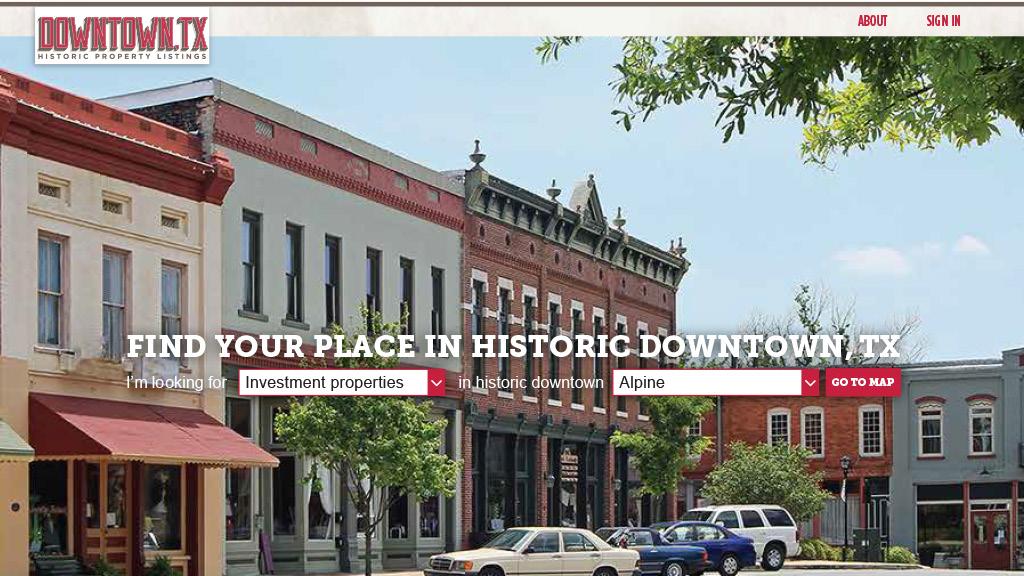
e economic impact of historic preservation in Texas cannot be overstated. at’s why the THC continues to create initiatives that fuel heritage tourism and celebrate the programs that have been molding Texas into an economic and travel beacon for decades. For more information on any THC programs, visit www.thc.texas.gov

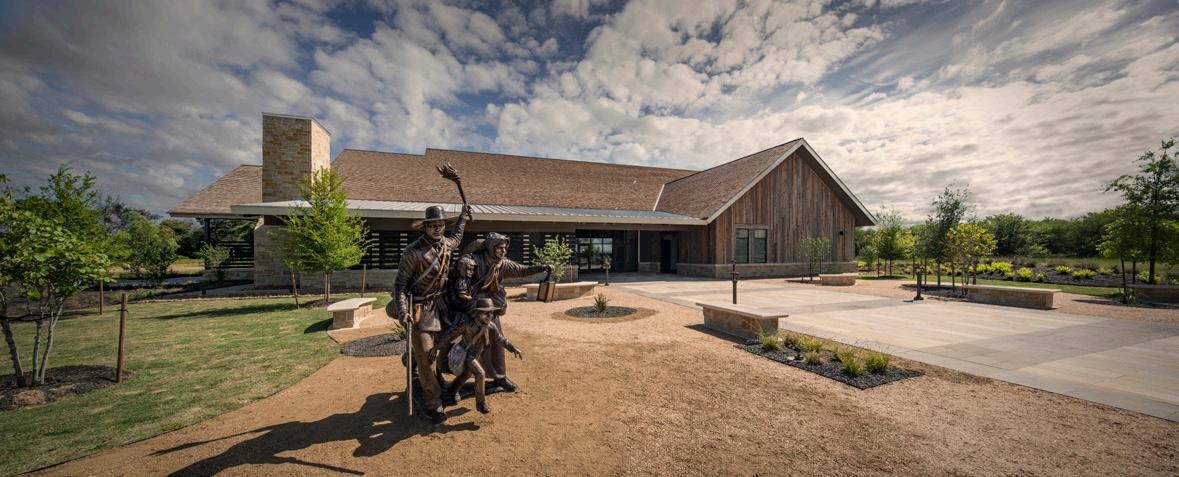

High on a rocky promontory on the breathtaking coast of the Tyrrhenian Sea—also known as the “Coast of the Gods”—is Santa Maria dell’Isola, a 4th century monastery that’s accessible only by climbing up a winding ight of steps carved directly into the cli side.
People have lived in Tropea for at least 2,000 years, since Sextus Pompey defeated the emperor Octavius. According to legend, it was founded by Hercules himself.



Santa Maria dell’Isola was built so long ago that even the topography of the land around it has changed. When it was rst erected, it was on its own little island. But over the centuries, silt built up and lled in the water between that island and the mainland. e building itself has lived several lives, as well: A simple church in medieval times, it was made over during the Renaissance. In 1905, an earthquake destroyed its facade, and it was rebuilt again.
A holy destination for pilgrims, the church is home to a 12th century Byzantine portrait of the Virgin Mary that, according to locals, protects the area. In 1638, the Virgin from the portrait appeared to the Bishop in Calabria, and warned him of an impending earthquake. On March 27 of that year, he rounded up the residents of Tropea and marched them out of the town. An earthquake struck that very day, but the people stayed safe.

DECEMBER 2018 | THE NETWORK 31 Reality is for people who can’t cope with drugs.
Click here for an interactive map of all of the 22 Texas Historic Sites: https://www.google.com/maps/d/viewer?mid=1hpCrRoi1K9wNBuY8Gwqx73o
u81g&hl=en&ll=30.945992967420835%2C-100.17569450000002&z=7
The Buildings of Guiyang

Guiyang is the capital of Guizhou province of what is called Southwest China. It has an elevation of about 3,600 , an area of 3,102 sq. mi., and, as of the 2010 census, a population of 4,324,561, out of whom 3,037,159 lived in the 7 urban districts. In 2016, Guiyang was named as the Best-Performing City in China by the Milken Institute because of the city's "growth in jobs, wages, (and) gross domestic product (GDP). Here we show you just some of the amazing buildings in this rapidly growing city because…how else would you know?


1 e 397-foot tall Liebian Building features a spectacular waterfall, providing a dramatic spectacle from the plaza below. At 350-feet, the waterfall is among the tallest arti cial waterfalls in the world—and easily the largest arti cial waterfall located in an urban area.


3 e World Trade Center is a vibrant mixeduse hillside city and riverfront park development that showcases the best of its surrounding natural environment. e dense, pedestrian-friendly complex comprises 21 structures: a composition of high-rise and low-rise buildings that extends from the site's eastern hillside to the river on the western side. At over 1,200 feet tall, a landmark tower is the centerpiece.

5 e International Financial Center, which is due to be completed in 2020. https://www.youtube.com/ watch?v=s0VrWLHaZy4



Nowhere in China is the disparity between economic reality and architectural ambition more stark than in Guiyang, capital of rural Guizhou, the poorest province in the country, which has the h most skyscraper plans of any Chinese city. e twin 335-meter towers of the Huaguoyuan development, by Arup, are now almost complete, standing as the centerpiece of a new mixed-use o ce, retail and entertainment complex, while SOM is busy conjuring the even higher Cultural Plaza Tower, a 521-metre glass spear that will soar above a new riverfront world of shopping malls and theaters.
4 e Hebin eater is both a signature building and a unique cultural resource for the city. Taking the form of stacked river stones, the building form is abstracted into ellipsoid shapes with large elliptical glass openings revealing the public circulation within the building and allowing for views out from the lobby to the city and the river beyond.
THE NETWORK | DECEMBER 2018 26
2 e Ecological International Convention and Exhibition Center – 201 Tower has o cially been awarded the certi cation of “the tallest steel truss suspension structure building in the world” by the World Record Association.
6 Fake Hills (featured in the March ’16 issue of the network) is a residential development designed by MAD architects.
Flame Towers is a trio of skyscrapers in Baku, the largest city and port in Azerbaijan, including the tallest in the country, with a height of 597 . ( ere are some taller towers in the city, but they don’t have rooms inside all the way up, so are not considered skyscrapers.) e buildings consist of apartments, a hotel and o ce blocks. It was built at a cost of $350 million. HOK was the architect for the project which was completed in 2012.




e facades of the the Towers function as large display screens with more than 10,000 high-power LED luminaires that display the movement of a re visible from the farthest points of the city.





DECEMBER 2018 | THE NETWORK 27 The
average woman would rather have beauty than brains because the average man can see better than he can think.
7 Huaxi Tower is a 330 tall o ce building that was a joint venture between MAD Architects, TWA, and several other international architects.
8 e Twin Towers enrich the city skyline with a simple modern presence that emphasizes symmetry and balance. e façade re ects simplicity and uniformity, enriched with an assortment of explicit details. e towers were constructed simultaneously and rose from a deep excavation of the entire site.
9 A Residential Community in the suburbs.
10 e Sheraton Hotel
The IREM® REME Awards for real estate management excellence champion the great companies and individuals in the industry and highlight the excellent work they are doing to propel real estate management forward. is year’s awards were presented on September 29th, at IREM® Global Summit Inaugural Gala and REME Awards in Hollywood, FL.


CPM® OF THE YEAR
Branden Barker, CPM®, CCIM, CSM
Barker Property Management

Baton Rouge, LA
Barker is an exemplary CPM® (Certi ed Property Manager), who goes above and beyond expectation. From caring for tenants, sta and the community during a region-covering ood, to allowing for peaceful protests during a time when the city was divided, Barker consistently provides superior service to all he works with.
ARM® OF THE YEAR
Benjamin Oates, Jr., ARM®
Marco Polo Apartments
Honolulu, HI
Oates exempli es the ARM® (Accredited Residential Manager) designation in the knowledge and leadership he provides to his management team and tenants. In addition, in the face of the worst high-rise structure re ever in Honolulu, Oates worked tirelessly to evacuate residents, ensure access for rst responders, provide shelter for all, and take care of his people.
AMO® OF THE YEAR

MEB Management Services, AMO®
Phoenix, AZ
Executive CPM®: Libby Ekre, CPM®
MEB Management Services core purpose is to enrich the lives of their clients, residents and team members by creating value – which means they understand the value created by being an AMO® (Accredited Management Organization) rm. ey hold their company, and their employees, to a higher standard with continued professional development, community service, and following of IREM® Best Practices.
CORPORATE INNOVATION
Cortland, AMO®
Atlanta, GA
Winning Initiative: Created a 64-foot, custom-branded mobile facilities training unit (MTU) to allow for hands-on training experience for their service team members.
Political Corner

(L-R) Marlena Leary (ResProp Management), Jonathan Tucker (Cortland), Benjamin Oates, Jr (Marco Polo Apartments), Libby Ekre (MEB Management Services), Branden Barker (Barker Property Management)
CORPORATE & SOCIAL RESPONSIBILITY
ResProp Management
Tampa, FL
Winning Initiative: Assisted in the creation of Cristo Rey Tampa HS, and continued support of the school includes fundraising, managing renovations, teaching, mentoring, and job training.

EMPLOYEE & LEADERSHIP DEVELOPMENT
Phillips Edison & Company
Cincinnati, OH
Winning Initiative: Developed PECOI, a comprehensive program designed to raise the pro le and visibility of the internship program, including the creation of a new brand identity for the program.
SUSTAINABILITY PROGRAMS
Phillips Edison & Company
Cincinnati, OH
Winning Initiative: Partnered with Blue Sky Utility to enhance the energy e ciency of their California properties by installing new roof membranes and solar panels, giving the properties a new, maintenance-free roof and tenants the ability to purchase energy at a discounted rate. Additional information on all of our winners can be found here.
If you marry for money, you will eventually earn it.
THE NETWORK | DECEMBER 2018 28
TEXAS HAS TECH TALENT
Texas’ Tech Talent Labor Pool Now Outnumbers Silicon Valley
CBRE Research highlights the rise of Texas markets in the U.S. tech world

CBRE Research shows that the total number of tech employees (tech specific jobs and support roles within a tech company) in Texas’ top 4 markets now outnumber the San Francisco Bay Area.

Percentage growth of tech talent labor force in each of the 4 markets
AUSTIN:
Total tech occupations: 20.3%
Total non-tech occupations: 32.5%
DALLAS/FORT WORTH:
Total tech occupations: 15.3%
Total non-tech occupations: 22%
HOUSTON:
Total tech occupations: 10.4%
Total non-tech occupations: -2.5%
SAN ANTONIO:
Total tech occupations: 17.8%
Total non-tech occupations: 24.6%
Total Tech Employees
AUSTIN: 225,800
DALLAS/FORT WORTH: 637,250
HOUSTON: 407,260
SAN ANTONIO: 161,680
Universities Stepping Up Their Tech Game
AUSTIN: 44.2%
DALLAS/ FORT WORTH: 81.8%
HOUSTON: 67.6%
Who is filling these jobs? All four Texas markets have seen huge growth in the number of tech degrees granted over the last five years. Tech Degree Percent growth from
SAN ANTONIO: 41.7%
Overall Tech Talent Market Rankings in North America
AUSTIN: #6 | DALLAS/FORT WORTH: #12 | HOUSTON: #32 | SAN ANTONIO: #46
CONTACTS
Robert C. Kramp Director, Research & Analysis robert.kramp@cbre.com
E. Michelle Miller Research Operations Manager michelle.miller@cbre.com
To learn more about CBRE Research, or to access additional research reports, please visit the Global Research Gateway at www.cbre.com/research.
DECEMBER 2018 | THE NETWORK 29
1,431,990 742,470
BAY AREA TEXAS
2011-2016
LEAH BROWN leah.brown@thc.texas.gov

The Texas Historical Commission and its 22 Historic Sites


The Texas Historical Commission (THC) is the state agency for historic preservation in Texas. Created by the Texas Legislature in 1953, the original charge of the agency—known as the Texas State Historical Survey Committee at the time—was to identify important historic sites across the state. When the agency’s name changed in 1973 so did the scope of its responsibilities. Today, the THC is responsible for the preservation of the state’s historic and prehistoric resources for the use, enjoyment, and economic bene t of present and future generations.
A premiere example of these State Historic Sites is the National Museum of the Paci c War. Over the past 50 years, the site has grown from a small naval museum housed in one building to a large six-acre campus of museums, displays, memorials, reenactments, and much more. Nestled in the Hill Country’s Fredericksburg, this site tells the story of the Paci c eater in World War II and is consistently ranked as one of the top tourist and vacation destinations in Texas. Last spring, the THC reopened one of its most signi cant sites outside of Houston, San Felipe de Austin State Historic Site. With a 10,000 square-foot, state-of-theart new museum, San Felipe de Austin takes its place as one of the state’s most promising historic travel destinations. Beautiful murals, lm, and multimedia connect the history of the 19th century with the best educational practices and technology of the 21st century, allowing everyone to directly experience the life of Stephen F. Austin’s rst colony and the tragedy of the Runaway Scrape, where residents burned the town to the ground to keep it from falling into the hands of Santa Anna’s army.
e majority of the THC’s programs are designed to empower property owners, investors, governments, and communities in their e orts to preserve local historic resources. Quite o en, this happens in the context of historic downtowns and Main Streets. e Texas Main Street Program, part of the National Main Street Program, provides technical expertise and support for those Texas communities wishing to revitalize historic downtowns and commercial neighborhood districts. Since its creation in 1981, the Texas Main Street Program has helped preserve the authentic character of 89 vibrant communities—bringing $5.2 billion in economic reinvestment, nearly 40,000 jobs, and more than 9,500 small businesses into Main Street districts.
Part of what drives the THC to preserve and showcase the real places that tell the real stories of Texas is the proven economic bene t these places provide for the state of Texas through heritage tourism. Heritage tourism is a $7.3 billion industry in Texas, which makes up 10.5% of all travel in the state. Studies have shown that heritage tourists spend more than the average tourist. at’s one reason why so many communities—from metropolitan cities like Dallas and Houston to small Texas towns like Mineola and Karnes City—are investing in preserving local historic treasures, using a variety of THC programs designed to assist communities with a shared mission.

One of the most visible initiatives of the THC is its State Historic Sites. Historic properties attract signi cant heritage tourists and reinvestment, and these 22 THC-operated sites across the state are no exception. e THC began managing historic properties more than 40 years ago, when the agency was designated to operate the Sam Rayburn House in Bonham as a museum. Years later, during the 80th Legislative session, 18 historic sites were transferred to the THC’s management. Today, the THC successfully manages and operates 22 State Historic Sites—improving visitor experiences, preserving historic integrity of the sites and their collections, exemplifying the Texas mystique, and drawing out-of-state tourists. ese sites range from 1,200-year-old burial grounds to historic forts and battlegrounds.
Another agship of the THC is the Texas Historic Courthouse Preservation Program, which will celebrate its 20th anniversary in 2019. is nationally recognized, award-winning program partners with counties to restore their most treasured landmarks—county courthouses. In the past 20 years, the program has fully restored 72 courthouses. ese buildings serve as living backdrops for the stories that make up communities while attracting small businesses that create jobs, enhance property values, and serve as magnets for heritage tourists—bringing out-of-state visitors to small towns across Texas. Today’s tourists don’t want the cookie cutter experience when they hit the road; they want to discover local gems that make a city tick, and the courthouse square is the rst place they look.
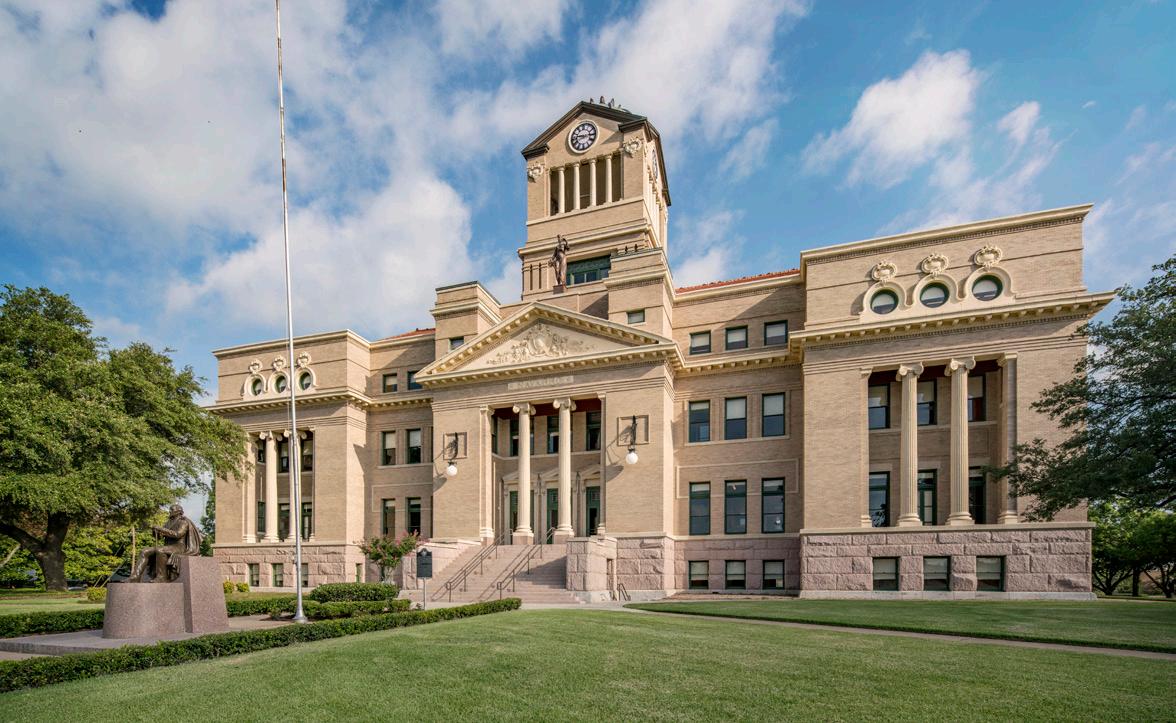
Another tool for cities is one of the THC’s newest programs, a patented real estate so ware called DowntownTX.org e rst of its kind, DowntownTX.org is an online building inventory for Texas downtowns featuring historic property listings. e so ware serves as a matchmaking platform, connecting buyers or investors interested in historic real estate with property owners and sellers. e unique, twouser platform runs on Google maps and revolutionizes the way historic investment opportunities are showcased. For example, properties can be ltered by National Register designation as a way to help interested historic real estate developers discover properties eligible for historic tax credits.
When ideas fail, words come in very handy.

THE NETWORK | DECEMBER 2018 30
Leah Brown is the Media Relations Coordinator for the Texas Historical Commission
From the first microchip to gaming hub

In 1959, Texas Instruments introduced the first microchip. Today Texas is the second-most dominant video gaming state in the country — even ahead of powerhouse Seattle, Washington. Not only are we dominant in the companies that create these games, we also have a strong pipeline for the future. Within Texas there are 44 higher education programs turning out so ware engineers in gaming and related fields. While gaming may not seem like a critical function, this is a space where innovation is happening constantly. Virtual reality, started and popularized in gaming, now is appearing everywhere.
When looking at all Texas metro areas, Texas has a total
For more information about JLL’s Insights and Statistics contact: Dallas / Ft. Worth - Walter Bialas • +1 214 438 6228 • walter.bialas@am.jll.com | Austin - Ali Bawany • +1 512 225 2719 • ali.bawany@am.jll.com Houston - Eli Gilbert • +1 713 425 5903 • eli.gilbert@am.jll.com | San Antonio - Kyle Mueller • +1 210 839 2033 • kyle.mueller@am.jll.com www.jll.com/dallas © 2018 Jones Lang LaSalle Brokerage, Inc. All rights reserved. All information contained herein is from sources deemed reliable; however, no representation or warranty is made to the accuracy thereof. DALLAS/FORT WORTH HOUSTON AUSTIN SAN ANTONIO JOB GROWTH Gaming Companies Gaming Companies Gaming Companies Gaming Companies Gaming Programs Gaming Programs Gaming Programs Gaming Programs *Job growth source: BLS, EMSI 87 30 140 7 9 6 8 5 GAMING COMPANIES
44 276 GAMING PROGRAMS AND OVER
of...
Submitted by
Adaptive Reuse: the technical term that’s now synonymous with vibrancy

Even in a city like Fort Worth in the heart of the burgeoning Fort Worth-Dallas region, “preservation” is not only compatible but can be desirable with the redevelopment of commercial real estate.



A stunning example of how property values have continued to rise—and businesses to grow—is Magnolia Avenue on the city’s “Near Southside.” Just this fall, the American Planning Association named Magnolia one of America’s 15 Great Places. e APA recognizes neighborhoods and public spaces each year that represent the gold standard for a true sense of place, cultural and historical interest, community involvement, and a vision for the future.
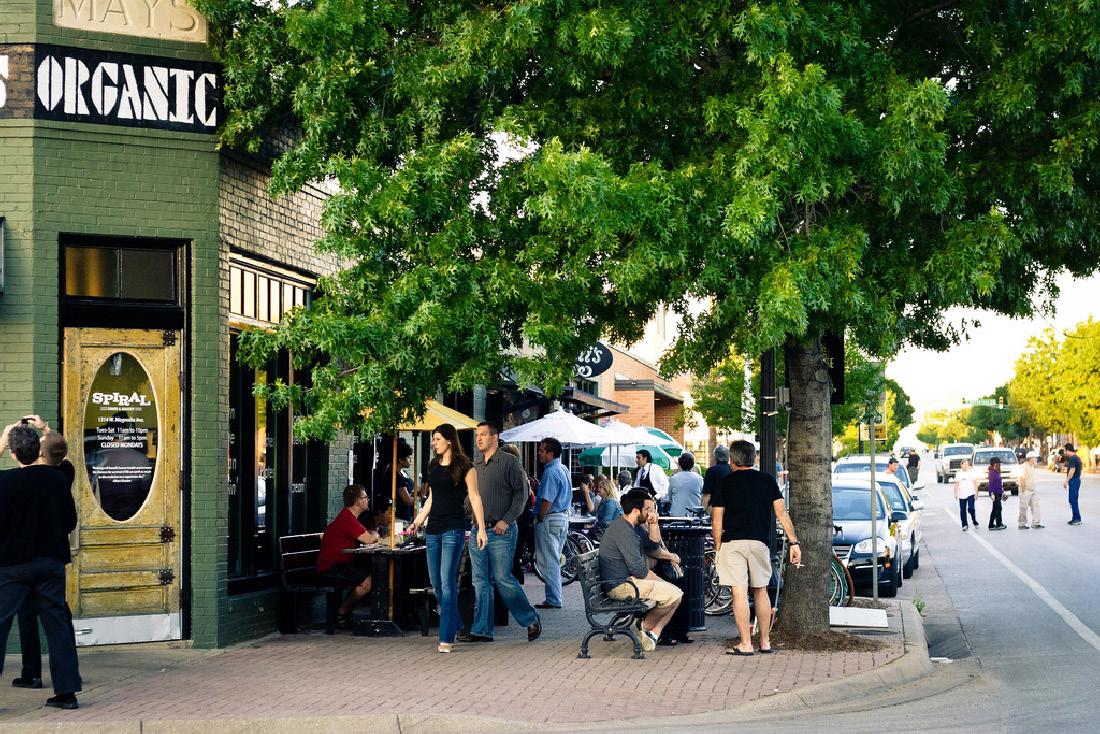
Interestingly, this national recognition comes 45 years a er the local newspaper declared this area
“decayed….skid row.” Today Magnolia Avenue is THE place for locally-owned, non-franchised restaurants and bars, small private entertainment venues, eclectic shopping, small o ces and diagnostic health centers. Contemporary high-rise apartments are located amidst all the action and are just blocks away from Fort Worth’s Hospital District. While “adaptive reuse” might sound like boring
architectural jargon to many, it is actually a term that is frequently used to describe how property owners/businesses are embracing the old and making it new—with the e ciencies and “workability” that make these concepts viable deals.
Following the announcement, Near Southside
Inc. said, “ rough a variety of e orts, Magnolia Avenue has contributed to the overall health of the community with increased walkability to services, retail and restaurants. e rapid pace of investment and development is a clear indication that the strategies of placemaking, walkability and urban design, and local business support is paying o .”
e City of Fort Worth has stood rmly with property owners to assure the transition from a run-down area to what it is today. e redevelopment is truly a public/private partnership is numerous ways. irty years of steady investment and improvements have e ectively ensured access and safety for all residents and visitors at any time of day or night.
The Simone Handbag Museum in Seoul, South Korea is a 10-story museum dedicated to handbags. 300 bags are on display at the museum (in a building resembling a handbag), dating from 1550 to the present day.


Called ‘Bagstage’, the building is in Seoul's Gangnam District (Yes THAT Gangnam!); it incorporates a shop selling bag materials, workshops where new Korean designers can work rent-free, a section where cra smen will produce bags and two shops. e collection was established by Kenny Park, founder and CEO of Simone Handbags, and was assembled and curated by Judith Clark, Professor of Fashion and Museology at the London College of Fashion. e collection was assembled at a cost of over $1.3 million.
The two most common elements in the universe are hydrogen and stupidity.

THE NETWORK | DECEMBER 2018 24
4 Designed by SL Rasch and Dar Al-Handasah Architects, the third-tallest building in the world is the Abraj Al-Bait Clock Tower, which overlooks the world’s largest mosque and Islam’s most sacred site in the Saudi Arabian city of Mecca e nearly 1,972-foot building has 120 oors, which house residences and hotel rooms for Muslim pilgrims visiting for the annual Hajj. It also boasts the world’s largest clock face.



5 Details are sparse about the Shimao Shenzhen-Hong Kong International Centre, but the skyscraper has recently broken ground. Renderings of the 2,191.5-foot tower, which would overtake the Shanghai Tower (#3 above) as the tallest building in China. Shown in visuals with a rippling facade, the building will form part of a complex including apartments, o ces, a startup incubator, ve-star hotels, shopping centers, international schools, and a convention, exhibition and performance center. Its earliest estimated completion date is in 2024.

6 e Wuhan Greenland Center in Wuhan, China was originally expected to be completed in 2016 and reach 1,988 feet, but the (only half-built) skyscraper beside the con uence of the Yangtze and Han River has faced delays and is now set for completion in 2019. Designed by Adrian Smith + Gordon Gill Architecture, the silvery bullet-shaped building was designed to be mixed use and include 3.2 million square feet) of oor area.

DECEMBER 2018 | THE NETWORK 23
Doing Time Always remember to pillage BEFORE you burn.
MODERN LANTERN
Cordless Lighting Solutions
of rechargeable lamps and shrunk them down to the ideal size for dining atmosphere. You always see those classic movies with mini lamps on every table, providing the perfect ambiance for a nice dinner. But actually making that happen isn’t so easy in the planning stages for restaurants. You’d literally have to have a plug directly under each table and that would have to be designed in the early planning stages. So revamped restaurants or existing restaurants without that outlet directly under each table are stuck with static overhead lighting and tea lights or candles which are o en a re hazard and a mess - and they don’t provide guests with enough light output to read the damn menu. (Laughs) e older we get the more we realize this is a real problem. So what we aim to do is solve that with our cordless mini lamps. ey’re high performance battery operated and provide dimmable warm light from 18 to 40 hours on a single charge.
In Fort Worth, Stephen and Carrie Fitzwater created, designed, sourced, and patented a line of rechargeable lamps and started their company Modern Lantern in 2012. Initially these batteryoperated lamps were the perfect problem solvers for residential home owners that had open oor plan living areas with no oor outlets. eir full sized, cordless yet decorative lamps provided home owners with a great solution on how to illuminate their living spaces without the need for cords and plugs. Today they have over 30 di erent styles of table lamps o ered in a variety of nishes and glazes - and their ceramics being made here in the USA. Recently Modern Lantern created a high-end, cordless / rechargeable mini lamp line tailored for the restaurant and hospitality industry. Essentially, they took their patented technology and putting it into small lamps ideal for luxury dining environments.


ese small, powerful lamps come with two highperformance li-ion rechargeable battery packs. e batteries can be easily removed and recharged and emit dimmable warm light that can be placed anywhere.
To date, Modern Lantern’s cordless lamps have been speci ed globally for installations from clients such as the Wynn Design and Development, Gensler, Carroll Adams, Ivan Carlson, and e U.S. State Department.
Q: It sounds like your company is on to a good idea here. What inspired this launch and how is the business doing?
Fitzwater: ings are going well! e idea is Carrie’s. As an interior designer, she kept running across the problem of being unable to plug in a lamp to nish o her design in a lot of open oor plan homes. She asked me to come up with a solution. I think the timing of energy e cient LEDs and high performance/low pro le li-ion battery packs is the reason for our existence. It’s a good blend of need, design, and performance. We knew if we could really start with the residential market, selling direct to the end users, that we could then layer on a commercial grade line for the hospitality market. So, 6 years in, we’ve launched this new line up of cordless mini lamps and they are really starting to catch on!
Q: Tell me about this new line of mini lamps. What does your company hope to achieve with this launch?


Fitzwater: We’ve basically taken our residential line

DECEMBER 2018 | THE NETWORK 21
:
: :
An interview with Stephen Fitzwater, Co-owner, Co-founder, and Principal Designer : :
:
Skyscraping
In July, the movie Skyscraper was released, centering around a supertall (3,497feet, 240-story) ctional tower called e Pearl in Hong Kong (pictured at right). e production design team shaped the building like a dragon and gave it features that include doublehelix wind turbines, and a 30-story atrium where most of the movie’s action takes place. (Not a spoiler alert: Dwayne ( e Rock) Johnson’s character accesses the colossal building in a dramatic fashion to put out the re and save his family trapped inside. To say it is a vertigo-inducing setting for the action is not an understatement.
Here are a few more buildings that are over 1,969 feet tall that are either completed, under construction or conceptual.

1 At 2,716.5 feet (and 160 stories) tall, the Burj Khalifa is currently the world’s tallest building. Designed by architect Adrian Smith (while working at US rm Skidmore Owings & Merrill) tall in Dubai, the Emirati city that has become synonymous with skyscraper development, it was completed in 2010, and accommodates residences, o ces, a hotel and an observation deck on the 124th oor. It is the world’s tallest building according to the three criteria of the Council on Tall Buildings and Urban Habitat: ‘Height to Architectural Top’, ‘Height To Highest Occupied Floor’, and ‘Height To Tip’. (Show with pictures 1 and 1A)
2 The Jeddah Tower (previously known as the Kingdom Tower) is soon expected to take the Burj Khalifa’s title. Also designed by Smith, its form resembles a spike that will soar to at least 3,281 feet. It will contain a Four Seasons hotel, serviced apartments, o ce space, luxury condominiums and the world’s highest observatory. Construction began in 2013, but the project ran into delays and completion is now expected in 2019 or 2020.




3 Currently, the world’s second-tallest building, the twisting Shanghai Tower, which rises 2,073.5 feet in the Chinese city’s nancial district, was completed in 2015. Its 121 storys are divided into nine vertical zones that include shops at the base, o ces in the center, and hotels, cultural facilities and observation decks at the top. Gensler designed the tower’s shape using wind-tunnel tests, to reduce the wind loads during typhoons by 24%. e skyscraper o cially completed in 2016, and was awarded the top honour of the inaugural American Architecture Prize the same year.


THE NETWORK | DECEMBER 2018 22
St. Govan lived his life as a hermit in a cli side cave in Wales, and those willing to make the steep hike can still visit his mystical hermitage by the sea.





e history of St. Govan is murky at best. It’s believed he was an Irish abbot living in the 6th century, though other more fanciful stories describe him as a thief. Some even believe that “Govan” is a mutation of “Gawain,” a legendary knight from the court of King Arthur who was said to have receded into hermitic life in his nal years. Whoever he was, Govan was in route to Wales when he was attacked by Irish pirates o the coast. Govan ran to the cli side, where the rock allegedly morphed into a secret cave for him to hide in. A er his pursuers le , Govan decided to remain in the cave as thanks to God and to the cli side that saved him. He set up a monastic hermitage in the cove, living o the nature surrounding, and remained there for the rest of his life.
In the century following, the cove became an important site of worship known as St. Govan’s Head. e spring which the saint took his water from was said to cure ailments of the limbs and eyes. Sometime in the 13th or 14th century a small stone chapel was erected on the site. It still stands there today, measuring roughly 20 feet by 12 feet, containing nothing but a bench and a small altar, which Govan (or perhaps Gawain?) is said to be buried beneath. Nearby is a well which took from the miraculous spring, now dry, which people still cast wishes upon.
Galvanized-steel panels form faceted balconies and window surrounds on the exterior of this former grain-storage silo in Copenhagen, which Danish studio COBE has transformed into an 17-story apartment building with 38 unique residential units, ranging in size from 1,100 to 4,300 square feet. ey range from single-story apartments to penthouses arranged over two oors, with ceiling heights of up to 23 feet. Full-height windows with frames concealed outside the existing walls provide views towards the city and the coastline.




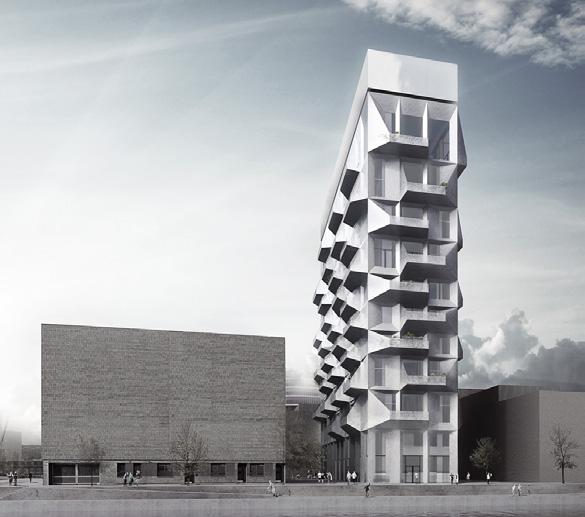
e building's existing concrete structure is exposed and is le bare in several of the apartments, enhancing the rugged industrial feel of the spaces.
On the roof is a mirrored glazed box restaurant with surfaces that re ect the sky during the day and allow light to permeate like a lantern at night.

THE NETWORK | DECEMBER 2018 16
A lot of money is tainted: ‘Taint yours, and ‘taint mine.


DECEMBER 2018 | THE NETWORK 17
Everybody repeat after me: “We are all individuals.”
good


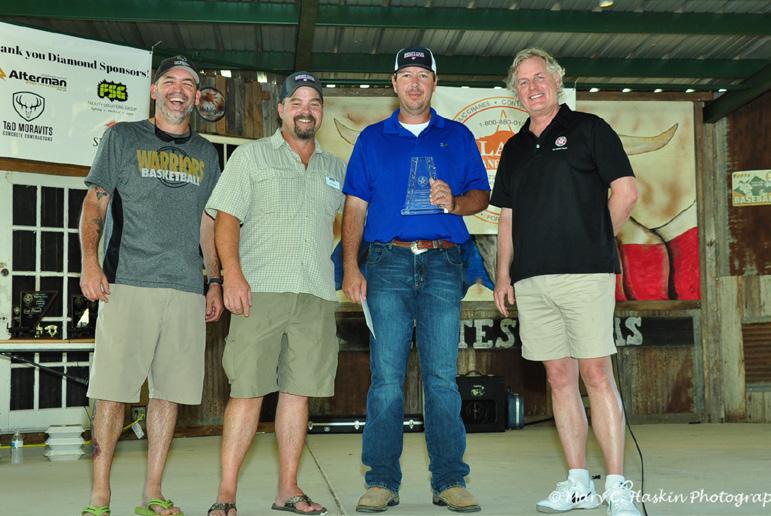
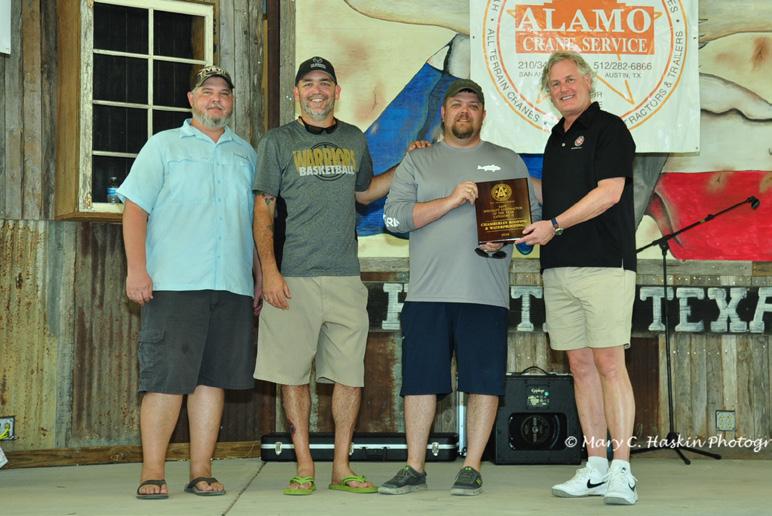
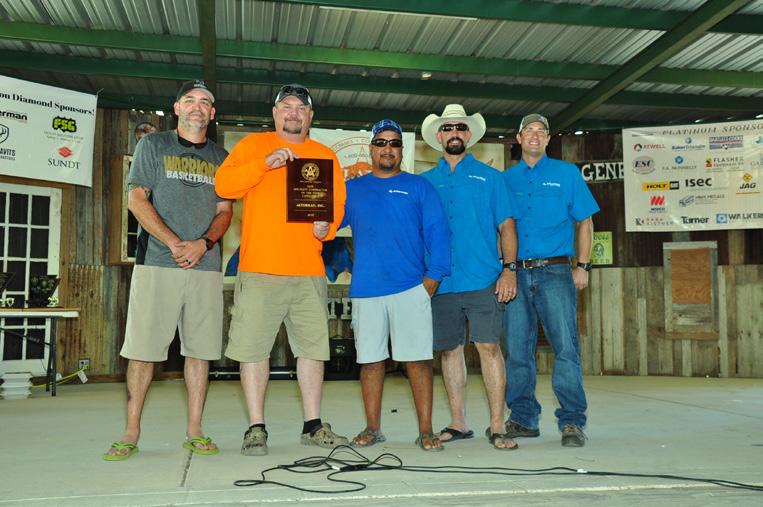

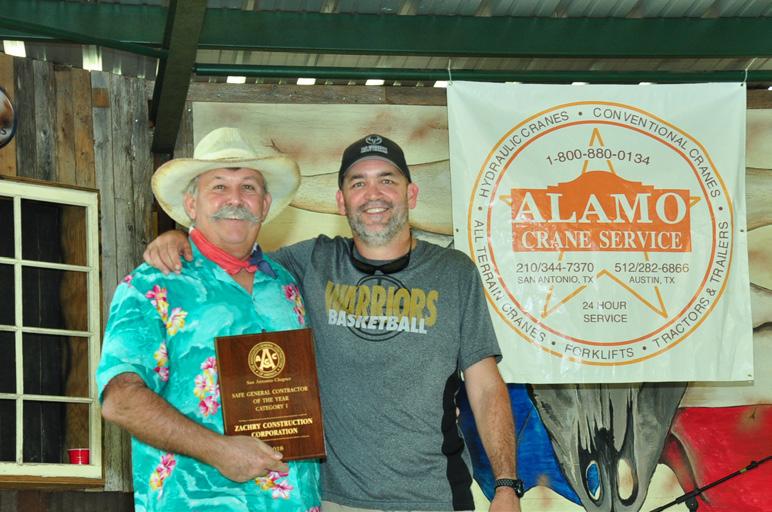





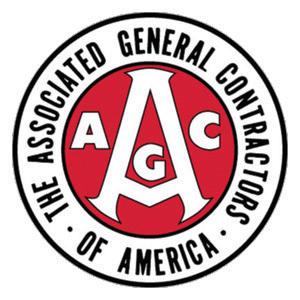

THE NETWORK | DECEMBER 2018 18 2018
is
for the
Category I – Chicken C 1st Place – Chamberlin Roofing & Waterproofing 2nd Place –Western States Fire Protection 3rd Place – Atwell, LLC Category II – Ribs R 1st Place – Yantis Company 2nd Place – Western States Fire Protection 3rd Place – Atwell, LLC Category III – Brisket B 1st Place – Maverick of Texas Construction, Inc. 2nd Place –Western States Fire Protection 3rd Place – Turner Construction Company Category IV – People’s Choice P 1st Place – Alterman, Inc. Showmanship S 1st Place – T&D Moravits & Co. 2nd Place – Galaxy Builders, Ltd. 3rd Place – Architectural Division 8 Safe General Contractor of the Year – Category I SGI Zachry Construction Corporation SGII Safe General Contractor of the Year – Category II Joeris General Contractors, Ltd. Safe Specialty Contractor of the Year – Category I SSI Alterman, Inc. Safe Specialty Contractor of the Year – Category II SSII Chamberlin Roofing & Waterproofing Larry Westbrook Safe Superintendent Award L Steven Holcomb, Bartlett Cocke General Contractors San Antonio Rebels
Safety Fair & Barbecue Cook-off Winners Confession
soul, but bad for your career.
Whoops!

A woman suspects that her husband is cheating on her. One day, she dials her own home and a strange woman answers.




Wife: “Who is this?”
Maid: “This is the maid.”
Wife: “We don’t have a maid.”

Maid: “I was hired this morning by the man of the house.”
Wife: “Well, this is his wife. Is he there?”
Maid: “He’s upstairs in the bedroom with someone I gured was his wife.”
Wife: “Listen, would you like to make $50,000?”





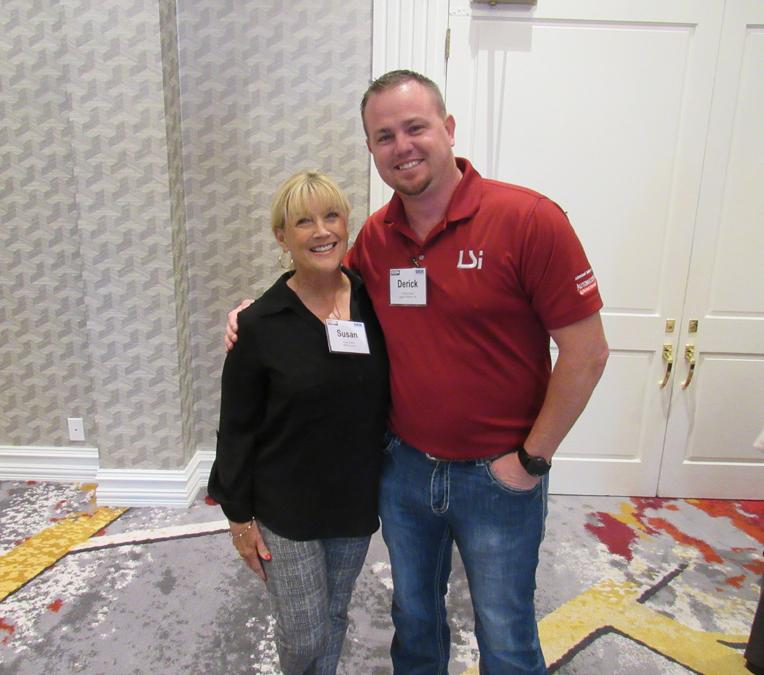

Maid: “What do I have to do?”
Wife: “I want you to get my gun from the desk and shoot the jerk and the witch he’s with. The maid puts the phone down. The wife hears footsteps and then gunshots, the more footsteps.

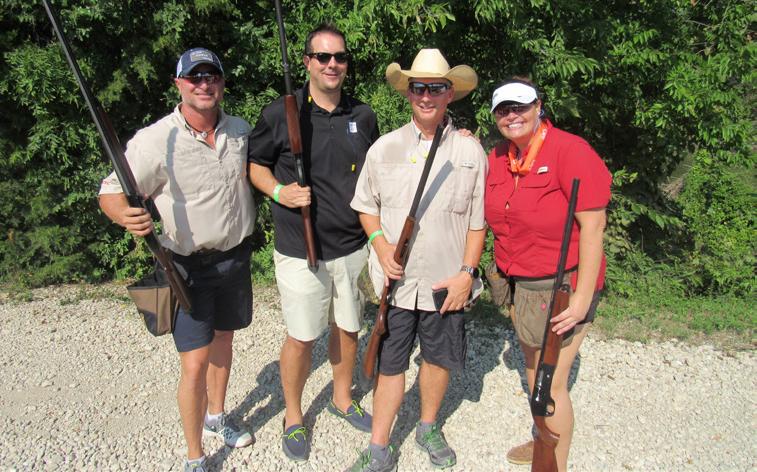
Maid: “What do I do with the bodies?”
Wife: “Throw them in the swimming pool.”
Maid: “But there’s no swimming pool here.”
A long pause and then Wife” “Is this 832-4821?”
DECEMBER 2018 | THE NETWORK 19 99 percent of lawyers give the rest a bad name. At
a monthly luncheon
Susan Ballard and Derick
(L-R) Paula Beebe, Pamela Haley and Jamie Vaughn
At the Annual Sporting Clays Tournament
North
(L-R) Steve Broom, Blake Mauritzen, Billy Rowland, Jenny Phillips at Annual Sporting Clays Tournament
Texas
A joint luncheon with IREM Fort Worth had chapter president Allison Millington, RPA, (Peloton Commercial Real Estate) introduce Chris Winfield, the “Motivational Productivity” speaker.
24th
Bill Burton, Debi Carter, CCIM and Howard Fuerst at September Luncheon
Annual Sporting Clays
The Rise of Flexible Workspaces and Space-As-A-Service
The commercial real estate landscape is always evolving, and one of the biggest factors driving that transformation today is the growth of shared workspaces. is presents challenges to traditional building owners, operators and brokers. But shared workspaces also present opportunities, if property providers are nimble enough to take advantage of them.

At the FlexO ce 2018 conference (Sept. 12-14 in Austin), hosted by NAIOP, the Commercial Real Estate Development Association, and the Global Workspace Association (GWA), experts took a look at the future of shared workspaces. e conference opened with a keynote by Antony Slumbers, a professor at the University of Bristol in England who works at the intersection between real estate and technology.


“ e nature of work is changing,” Slumbers said. “Many jobs that exist today – perhaps as much as half – will soon be automated.” He said people in the future must focus instead on “new” work, things that can’t be done by computers. “An o ce that is designed around ‘old’ work will be obsolete,” he warned. ose o ces will be replaced. “ e real estate industry is no longer just about real estate,” Slumbers added. He said that means CRE providers will have to learn new ways to sell their products. Instead of o ering to simply rent space to tenants, real estate providers should focus on
helping their customers achieve a productive workplace.
Slumbers also said the future will be exible. at means shorter leases, and landlords will need to be more involved to make certain they are providing cutting-edge technology.
At a discussion on the ROI of exible workspaces, operators shared the advantages and disadvantages of owning shared spaces. Advantages included
high cost, learning curve, and time-intensiveness of the work.
e changeover from traditional o ce space to coworking spaces isn’t going to happen overnight, however, and building owners are going to need to collect a lot more data to convince lenders that the coworking model works. Still, “diversifying your stacking plan in an o ce building is less risky than not doing so,” said Austin Flajser, president of Carr Companies.
Bottom line: “ e expectations of the customer are changing, and that’s forcing the real estate industry to do a 180,” said Gabrielle McMillan, CEO of Equiem. “To win repeat customers, operators need to think about rst impressions, and then what makes the building a great place.” And what tenants want is changing as the next generations rise. Millennials and Generation Z both have di erent desires than older generations do.
the higher returns (the Net Operating Income of a coworking space can be three times what it would be in a traditional building, said Benjamin Dyett, partner at e DecoGroup), more exit options if a tenant in the building fails, and control over the tenants in the space. Disadvantages included the


Dallas Built Design Awards



The AIA Dallas Built Design Awards celebrate outstanding achievement in architectural design by AIA Dallas chapter members and AIA Northeast Texas section members. e purpose of the awards program is to honor the architects, clients, and consultants who work together to achieve design excellence, both in the metropolitan area and around the globe, and to elevate the value of architectural practice in the local community. e 2018 awards were presented on October 4th.
Honor Awards for Large Projects




Real estate is moving from a product to a service, Slumbers pointed out in his opening remarks. Providing the best service, he concluded, is “how you win in the future.”
Visit www. exo ceconference.com to view the conference session recordings, presentations and blog recaps.
Honor Awards for Small Projects
It may be that your sole purpose in life is to serve as a warning for others.

THE NETWORK | DECEMBER 2018 20
Cunningham Architects • Temple Emanu-El
Photo Courtesy of James F. Wilson
GFF • Factory Six03
Photo Courtesy of Andrew Adkison, AIA
SmithGroup • Champion’s Hall Photo Courtesy of Liam Frederick
Bodron + Fruit • Preston Hollow Residence
Photo Courtesy of © Scott Frances/OTTO
Cunningham Architects • Burial Crypt for Cistercian Monastery Photo Courtesy of James F. Wilson
HKS, Inc. • Novartis Café Photo Courtesy of HKS
Max Levy Architect •House Addiction Photo Courtesy of Charles Davis Smith FAIA
The 2019 Executive Council
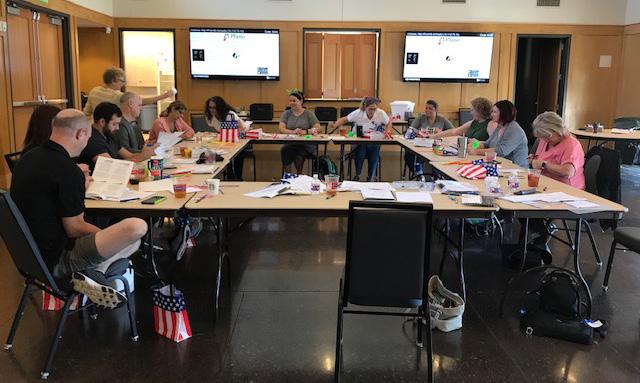

President: Debra Spears, CPM®, Gaedeke Group
President Elect:
Ziomara Young, CPM® W3 Luxury Living


Immediate Past President: Scott Stovall, CPM®, RPA, Cushman Wake eld

Secretary Treasurer: Amanda Eller, CPM, Holt Lunsford
VP Education/Scholarships: Brittney Harbour, ARM®, Valiant Residential
VP Programs: Gabriela Garcia, CPM® Candidate, CBRE
VP Membership Credentialing Actions: Chanon Fisher, ARM®, CPM® Candidate, LumaCorp

Recruitment and Retention
VP Student &College Outreach: Christie Clenney, CPM®, MBRE Healthcare
VP Golf: Carol Borchardt, CPM®, M-M Properties


VP ARM Membership: Devin Carden, CPM®, ARM®, LumaCorp
VP Special Projects: Holli Biggersta , CPM® Candidate, MBRE Healthcare (Income Expense/Community Outreach)
VP Sponsorships: Susan Kleins, CPM® Candidate, UAH Property Management
Advisor: Jessica Warrior, CPM®, Past President, Granite Properties

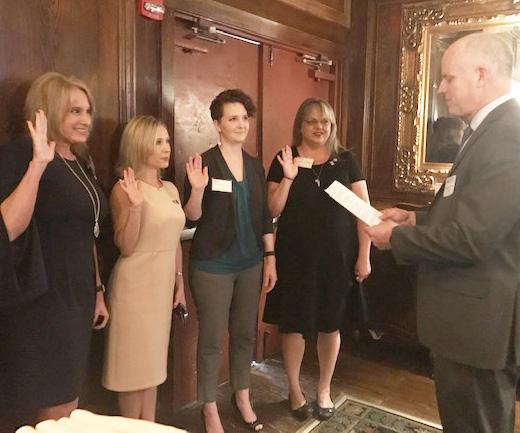
Advisor: Lewis Hoppen, CPM®, Weitzman Group

Non-Voting Position:
Academic Advisor: Dr. Steve Brown, PhD, MBA, CFP, CPA, Cedar Valley College
Student Advisor: Parker Caputo, University of Texas at Dallas


DECEMBER 2018 | THE NETWORK 15 MULTI-PURPOSE PET FACILITIES ROOF TOP DECKS COMMON AREAS All Work Performed By Experienced Employees • Exclusive to Synthetic Grass Installation • Fully Insured SyntheticGrassPros.com 972.420.7800 Life isn’t about waiting for the storm to pass ... it’s about learning to dance in the rain!
President Scott Stovall, CPM swears in the chapter’s newest credentialed members (L-R): Lura McMichael, CPM, Melissa Froese, CPM, Brooke Fontenot, ARM and Jennifer Guthrie, ARM
Past Presidents attending the September 11 Luncheon (L-R) Rick Shaw, CPM, Susan Nash, CPM, Rich Elam, CPM, Jessica Warrior, CPM and Jack Gardner, CPM
Chapter President-Elect Debra Spears, CPM, RPA leads a strategic planning meeting at Oak Point Nature and Retreat
September Luncheon
At the September monthly luncheon, Chapter President Pattie McClean introduced guest motivational speaker, Mona Vogele
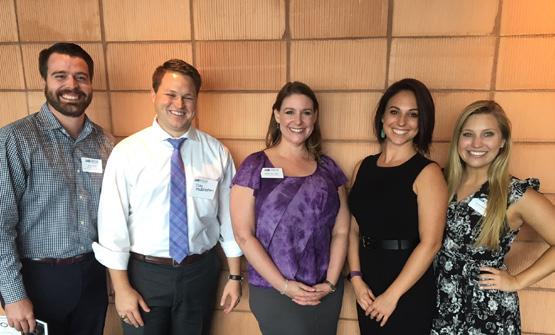
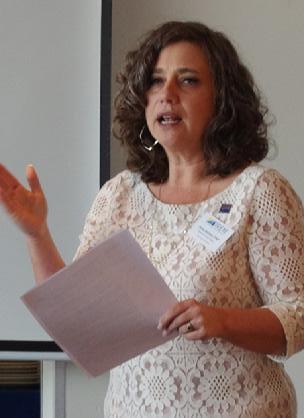
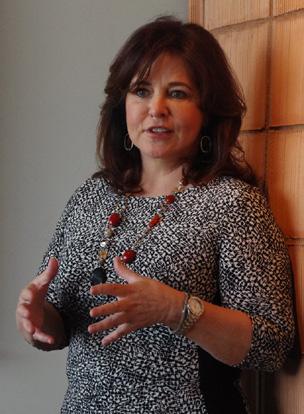

IREM Fort Worth had a wonderful program in addition to an outstanding luncheon at the new B & B Restaurant in Clearfork. On the retail side, Weitzman’s Executive Managing Director Bob Young made a presentation on ‘Demand-based Growth with an Experiential Focus’ and on the residential side, LumaCorp’s President Ian Mattingly addressed the strength of the local market.


IREM Global Summit


Sept.26-29, 2018

2019 Region 7 IREM Chapter Presidents: (L - R: Steve Rodgers, Nekesha Lyles, Pattie McClean, Mike Baca, Z Young, Melissa Kreutner and Janet Shipley

Professionals
The Museum of Tomorrow (Portuguese: Museu do Amanhã) is a science museum in Rio de Janeiro, Brazil. It was designed by Spanish neofuturistic architect Santiago Calatrava, and built next to the waterfront at a cost of approximately $57 million. It opened in December 2015, with President Dilma Rousse in attendance; it was part of the city's port area renewal for the 2016 Summer Olympics.


e main exhibition takes visitors through ve main areas: Cosmos, Earth, Anthropocene, Tomorrow, and Us via a number of experiments and experiences, mixing science with innovative design to focus on sustainable cities and an ecological world. ( e Anthropocene is a proposed epoch dating from the commencement of signi cant human impact on the Earth's geology and ecosystems, including, but not limited to, anthropogenic climate change.)

THE NETWORK | DECEMBER 2018 14
IREM Young
(IYP) (LR) Tucker Jordan, Clay Huddleston, Kristen Ja e, Bethany Stregels and Connie Ackermann
When everything’s coming your way, you’re in the wrong lane and going the wrong way.
A driveway is a shorter, private drive used for access to a speci c building. ey are privately maintained, usually by a landlord or tenant, as opposed to the municipality.
A court is a short, dead-end street that o en ends in a circle (sometimes called a cul-de-sac).
A plaza is an open public space in a town or city, o en encircled by streets, lined with trees and parks, and surrounded by more important buildings (and is also known as a square).

A frontage road is a narrow road used for maintenance and access that runs parallel to a larger road, usually divided from it by a median (and also known as an access road, service road, or parallel road).
A terrace is a type of short, narrow road that usually follows the top or curve of a slope.
A crescent is a type of curved street, usually connecting back to the same, more signi cant road at either end.
An alley is a narrow pathway or walkway, o en between buildings, and usually not vehicle-accessible; it may or may not lead out to another street.
An esplanade (also called a promenade) is a pathway that winds along the contours of a body of water, usually reserved for foot tra c.
A highway is a main road that connects distant and multiple places.
A turnpike is a portion of a highway where a fee is charged for access (also known as a toll road).

An interstate is a controlled-access (state-to-state) highway system that connects large portions of the country.

A freeway (also known as an expressway or motorway) is a road designed for safe high-speed tra c through the elimination of intersections.
A parkway is a kind of highway that is o en straddled by greenery and parkland on both sides.
The Story of the Angel
A causeway is a road, usually on an embankment, that traverses bodies of water or swampland.
A beltway is road or system of roads that encircle a city.
In the real world, these textbook distinctions aren’t always made. As cities grow, roads can become urbanized and serve the purposes of streets without having their names changed. Some cities and towns may be planned with naming systems that designate roadways one thing or another without regard to their function.

Compiled by network sources
When four of Santa’s elves got sick, the trainee elves did not produce toys as fast as the regular ones, and Santa began to feel the pre-Christmas pressure. Then, Mrs. Claus told Santa her mother was coming to visit, which stressed Santa even more.
He went to harness the reindeer and found that three of them were about to give birth and two others had jumped the fence and were out, Heaven knows where. When he began to load the sleigh, one of the oorboards cracked, the toy bag fell to the ground and all the toys were scattered. Frustrated, Santa went in the house for a glass of cider and a shot of rum.
When went to the cupboard, he discovered that the elves had drunk all the cider and hidden the rum. He accidentally dropped the cider jug, and it broke into hundreds of little glass pieces all over the kitchen oor. And when he went to get the broom, he found that mice had eaten all the straw o the end of the broom.
Just then the doorbell rang, and an irritated Santa marched to the door, yanked it open, and there stood a little angel with a great big Christmas tree. The angel said very cheerfully, “Merry Christmas, Santa. Isn’t this a lovely day? I have a beautiful tree for you. Where would you like me to stick it?”
And so began the tradition of the little angel on top of the Christmas tree. Not a lot of people know this.

DECEMBER 2018 | THE NETWORK 13 My wife asked, ‘What’s on the TV?” I said, “Dust!” FIND A MANAGER WHO MAKES A DIFFERENCE Educated, experienced, and ethical, a CPM® is a property owners’ champion on the ground. With big-picture strategic thinking and rigorous, tested training, a CPM® can make a diference on your property’s investment value and NOI more than any other manager. To Find a CPM® in Your Area Visit www.irem.org/CPM OR CONTACT US Phone: (800) 837-0706 Email: getinfo@irem.org Web: www.irem.org Trust a CPM® water sources.
Gift Cards, the Force Estate, Weather Terms, Streetwise


Alaw that went into e ect Sept. 1, 2015 allows Texans to receive a cash refund on gi cards or certi cates that have a balance of less than $2.50. e transaction must take place in person and there are exceptions. e law does not apply to prepaid calling cards, cards issued as part of a loyalty or rewards program, cards issued as a refund for returned merchandise, cards issued by a bank or airline, or cards initially worth $5 that cannot have value added to them. https://statutes.capitol. texas.gov/sotwdocs/bc/htm/ bc.604.htm

e Fourth Estate is a segment of society that wields an indirect but signi cant in uence on society even though it is not a formally recognized part of the political system. e most commonly recognized part of the fourth estate is the news media, or press. e term itself derives from traditional European concept of the three estates of the realm: the clergy, the nobility, and the commoners.

e only di erence between a hurricane, a cyclone, and a typhoon is the location where the storm occurs. ey are all the same weather phenomenon; we just use di erent names for these storms in di erent places. In the Atlantic and Northeast Paci c,

the term “hurricane” is used. e same type of disturbance in the Northwest Paci c is called a “typhoon” and “cyclones” occur in the South Paci c and Indian Ocean.
What the f?
It’s true that many nouns ending in ‘f’ in the singular have a ‘ves’ ending for the plural. However, there are actually three classes of nouns ending in ‘f’, according to e Cambridge Grammar of the English Language:
Class 1 – Nouns that always change their endings to ‘ves’. Examples are calf, elf, knife, leaf, life, loaf, self, sheaf, shelf, thief, wife and wolf.
Class 2 – Nouns that may or may not change their endings to ‘ves’. Examples are dwarf (dwarfs, dwarves), half, handkerchief, hoof, roof, scarf, and wharf.
Class 3 – Nouns that don’t change their endings to ‘ves’; they retain the ‘f’ ending and add just the plural ‘s’. Examples are belief, chief, cli , mu , oaf, photograph, proof, safe, tough, waif.
Streetwise
Roads run between two distant points — two towns, for example, especially for vehicular tra c. In each of those towns (or cities), there are streets:
paved roads lined with houses and other buildings. According to some, what sets streets apart today is the street life that comes with them. On a street, you might nd people walking their dogs, having lunch in a sidewalk cafe, waiting for a friend on the corner, or simply people watching. On the road connecting Town A to Town B, you’re not likely to nd any of this. A thoroughfare is another word for road.
An avenue is a public (traditionally straight) road o en in a large town or city, usually with buildings on one or both sides. Frequently, it is longer than, and runs perpendicular to, streets.

A boulevard is usually a wider street or avenue that is o en multi-lane, bi-directional, and a main artery in a city. Because of its prominence and tra c, it is usually spruced up with trees, decorations, and sometimes a center median dividing the tra c.
A way is a minor street connected to a road.

A lane is a narrower type of road, o en in rural and suburban areas, usually lacking a shoulder or a median.
A place is a designation for a really short street or a square (from plaza).
A drive is a winding (o en lengthy) road, usually contouring and curving due to the natural topography, such as trees, hills, and
Clothes make the man. Naked people have little or no influence on society.
THE NETWORK | DECEMBER 2018 12 YOU NEED TO KNOW FOR THOSE WHO MANAGE TO MAKE A DIFFERENCE Every Day in Property Management is Diferent. Let IREM® Be Your Constant. IREM® Ofers: • A global network of 20,000 like-minded professionals • A wide-array of benefts and resources to help maximize your potential • The most trusted credentials in the real estate management industry • Professional support, no matter your career level Learn more and join today at www.irem.org/JOIN OR CONTACT US Phone: (800) 837-0706 Email: getinfo@irem.org Web: www.irem.org
: : : : :
: : : : :
: : : : :
: : : : :
TEXO YCC Talks Politics

In September, the TEXO Young Constructor’s Council meeting centered around political advocacy in the construction industry. TEXO Board Chair Fran McCann told members about the TEXO PAC, a political action committee that makes nancial contributions to political candidates on the state and local level who support the construction industry’s key causes.
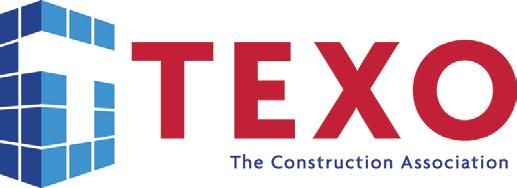
TEXO PAC’s new video, “Your Vote, Your TEXO,” highlighting the PAC and the importance of member support, was shown to encourage YCC members to get engaged in politics that a ect the industry. Lieutenant Colonel Allen West, political commentator and former member of the U.S. House of Representatives, spoke to the members about his personal story and the importance of staying informed and advocating for the construction industry.
To learn more about the TEXO PAC and to watch the video, visit www.texoassociation.org/web/PAC
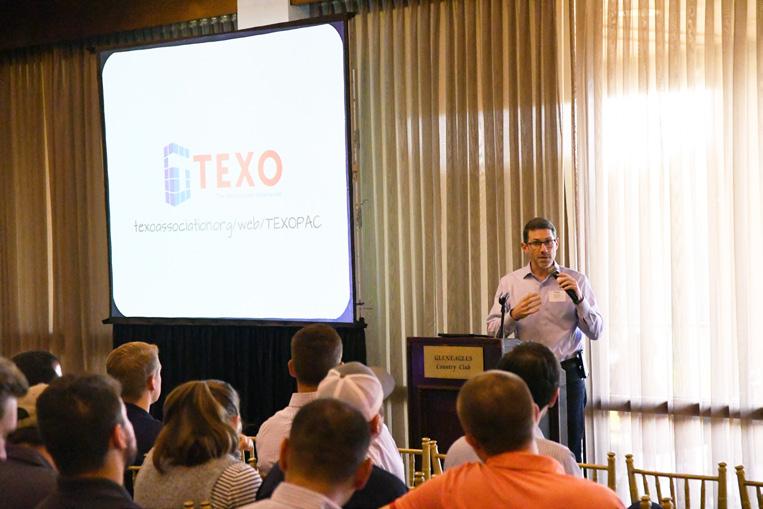
8th Annual USGBC Texas Energy Summit
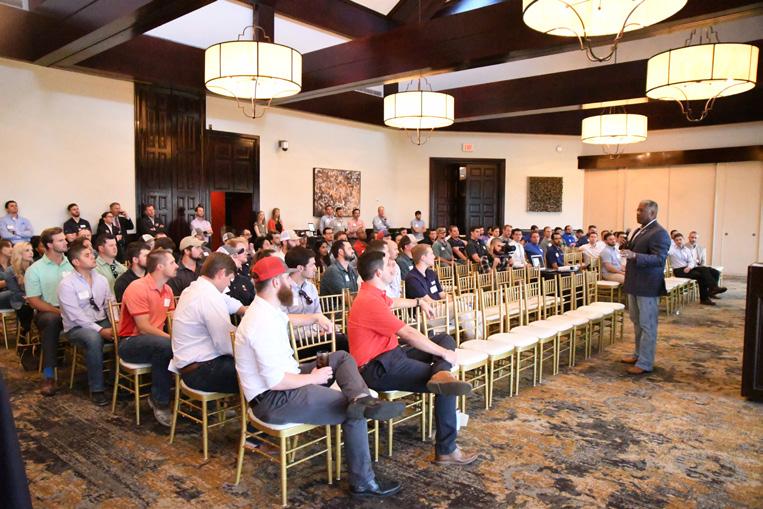
Presented by the Texas Gulf Coast Region
Thursday, October 11, 2018 Norris Conference Center at City Centre
USGBC Texas Building Energy Summit
The 2018 USGBC Texas Building Energy Summit gathered more than 200 building owners/ managers, energy and sustainability managers, engineers, federal and state government o cials, consultants and other stakeholders in Houston to focus on energy reduction and smarter technology solutions for buildings.



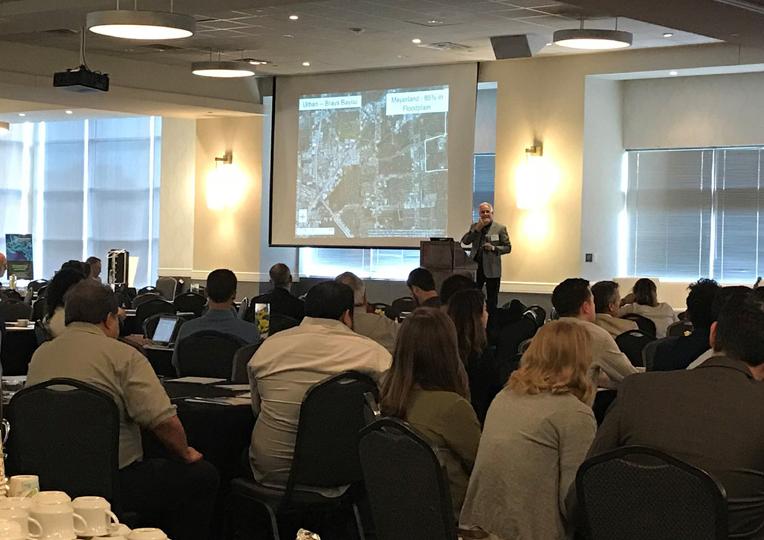
With sessions covering four tracks: Case Studies, Technology, Optimized Operations, and Managing Your Building, this year’s summit featured more than 30 speakers from NASA, Rice University, ERCOT, CBRE, Transwestern, Houston Advanced Research Center, University of the Houston, Schneider Electric, MD Anderson Cancer Center, Johnson Controls, and more.
The summary panel focused on how the future of Energy E ciency will be shaped by known, emerging and unforeseen in uencers and drivers. Experts looked into the future of the healthcare, commercial o ce, higher education and large campus markets, and shared their plans for adapting to these new opportunities.
Bill Maness, president and CEO of ERCOT, discussed the current issues and challenges facing the commission which manages the ow of electricity for approximately 90% of Texas consumers and the work involved in balancing the supply and demand of electricity in a state that continues to see substantial economic and population growth.
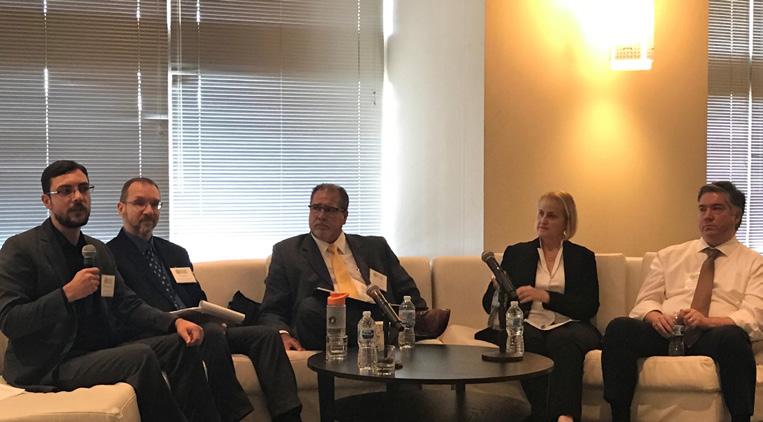

Track Sessions
January 10, 2019 11AM to 1PM

Real Estate Outlook and Emerging Trends


Featured Speaker: Mitch Roschelle of Price Waterhouse Cooopers

(All attendees will receive a copy of the 2019 Emerging Trends Report)
Location: Mays Family Center at the Witte Museum
DECEMBER 2018 | THE NETWORK 11
Allen West
Fran McCann
Philip B. Bedient, Herman Brown Professor of Engineering and Civil & Environmental Engineering Director – SSPEED Center at Rice University, addressed how green building and green infrastructure can accomplish long-term ood mitigation. He also addressed how these issues e ect business and their facilities.
Jonathan Wilson, Schneider Electric
Dan Rivkin, Johnson Controls
Carlos Gamarra, Houston Advanced Research Center
Luncheon Keynote
Closing panel
GULF COAST REGION
If at first you don’t succeed, redefine success.
DECEMBER2018 / VOL 26 / Issue 4
A quarterly publication of CREST Publications Group 2537 Lubbock Avenue, Fort Worth, TX 76109 682.224.5855 www.crestnetwork.com
On the Cover: Philippe Charles Jacquet
“Grand Maree” The landscapes of Philippe Charles Jacquet, painted in quaint, nostalgic colors, appear orderly, peaceful, silent, secret, and mysterious. They are the hidden memories of an invisible world. Poetic and of refined perfection, these dreamlike landscapes seem to evoke the passage into another world – un autre monde. It is in Brittany on the banks of the Rance river or towards the small coastal town of Saint-Briac with its wooded hills, its quiet anchorages, and its abandoned windmills that Philippe Charles Jacquet draws inspiration, letting himself become immersed into his experiences. He has been roaming and navigating around there for a long time - along the waters, across the landscapes of granite houses, the shorelines, and the beaches at low tide.
See more of his work on pages 52-53.
affiliate associations
Now in our 25th year, we’ve outgrown the ability the list all of our real estate affiliated associations and include their logos on just one page. The network reaches over 50,000 Texas real estate professionals quarterly!

We proudly serve and service any and all real estate associations in the state of Texas - including (but not necessarily limited to) the ones you see here.


If your group isn’t shown and you’d like for us to include pictures, information and event-coverage, please let us know. Email editor@crestnetwork. com or call the number above.

“You can’t go anywhere without seeing a copy of the network .”
- Chad R. (Fort Worth, TX)
“A cover to cover gem!”
- Mike F. (Arlington, TX)
“…truly a brighter, lighter side of real estate.”
- Marti C. (Freehold, NJ)
“… entertaining and informative.”


- Carla C. (New Braunfels, TX)
When wearing a bikini, women reveal 90% of their body... men are so polite, they only look at the covered parts.
“…a surprising source for such a wide range of interesting topics.”
- T. Lydell (Austin, TX)
“( the network is) one of my motivating forces to continue writing. Thank you for your inspiration.”
- Barbara R. (Frisco, TX)
Copyright © 2018 The CREST Publications Group, 2537 Lubbock Avenue Fort Worth, TX 76109. All rights reserved. All information contained herein (including, but not limited to, articles, opinions, reviews, text, photographs, images, illustrations, trademarks, service marks and the like (collectively the “Content”) is protected by copyright and other intellectual property laws. The Content is the property of The CREST Publications Group and/or third party licensors. You may not modify, publish, transmit, transfer, sell, reproduce, create derivative work from, distribute, republish, display, or in any way commercially exploit any of the Content or infringe upon trademarks or service marks contained in such Content. GENERAL DISCLAIMER AND LIMITATION OF LIABILITY: The Network magazine contains facts, views, opinions, statements and recommendations of third party individuals and organizations. The publisher does not represent or endorse the accuracy or reliability of any advice, opinion, statement or other information displayed and any reliance upon same shall be at the viewer’s sole risk. The publisher makes no guarantees or representations as to, and shall have no liability for, any content delivered by any third party, including, without limitation, the accuracy, subject matter, quality or timeliness of any Content. Change of address: Mail to address above or email editor@crestpublicationsgroup.com.
THE NETWORK | DECEMBER 2018 6
us out on
Check
Relationships are a lot like algebra. Have you ever looked at your X and wondered Y?
ANTHONY BARBIERI
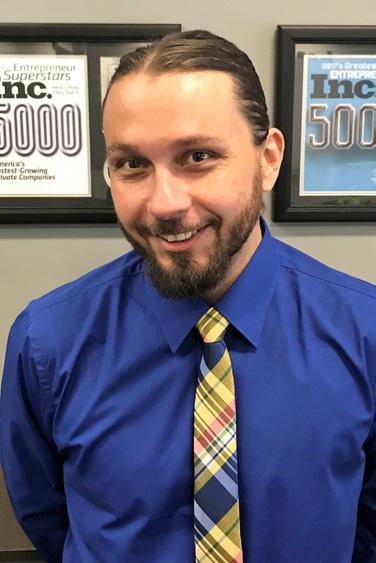

Kessler Collins, where he enjoys a broad legal practice. He has been a speaker for ICSC, IREM, and BOMA, has taught continuing-legal education seminars, and has been named a Texas Super Lawyer Rising Star for many years, as well as being a Fellow of the Litigation Counsel of America. He and his wife, Cathy, enjoy traveling and spending time with their extended families, getting involved in their church and supporting the community through various programs – including raising awareness of muscular dystrophy, education and exercise to ght heart disease, providing care and treatment for autism, and counseling domestic-violence victims. He is also a Contributing Editor of the network.
JEB BLOUNT ( P. 41) is the author of nine books and is among the world’s most respected thought leaders on sales, leadership, and customer experience. As a sales acceleration specialist, he helps sales organizations reach peak performance fast by optimizing talent, leveraging training to cultivate a high-performance culture, developing leadership and coaching skills, and applying more e ective organizational design. Through his global training organization, Sales Gravy, Jeb advises many of the world’s leading organizations and their executives on the impact of emotional intelligence and interpersonal skills on customer-facing activities and delivers training to thousands of participants in both public and private forums. His agship website, SalesGravy.com, is the most visited sales-speci c website on the planet.

LEAH BROWN ( P. 30) is the Press Secretary for the Texas Historical Commission. When she’s not writing or volunteering, Leah likes to hit the volleyball court or softball eld. She is the proud mother of a newborn baby girl and sixmonth-old Yorkie puppy.
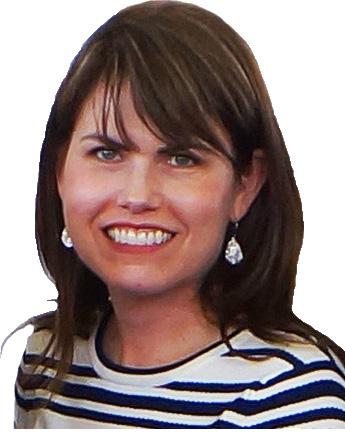
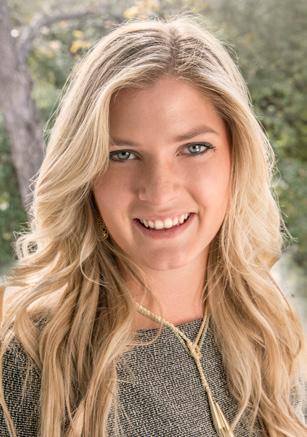

EMILY COWPER ( P. 10) is the Creative Services Associate at LORD Green Real Estate Strategies, Inc., a global sustainability consultancy headquartered in Dallas specializing in providing sustainability services to commercial real estate investment rms. She discovered her passion for the built environment while attending Auburn University, where she received a B.S. in Environmental Design in the College of Architecture, Design, and Construction. At LORD Green, she assists in the design and creation of client sustainability reports and deliverables and maintains company branding and social media.
MECHELE DICKERSON ( P. 47) is a University Distinguished Teaching Professor and the Arthur L. Moller Chair in Bankruptcy Law and Practice in the School of Law at The University of Texas at Austin.
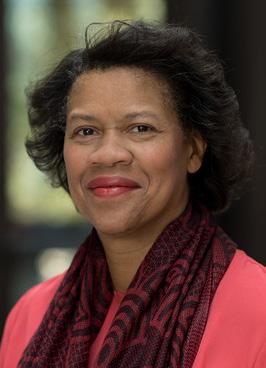
( P. 38) is the Major Accounts Manager for HeartSmart.com, the nation’s largest supplier of AEDs, where he helps clients with all facets of their AED implementation, including physician oversight and education. Previously he spent 9-years working for one of the nation’s largest publishers of CPR, AED and First Aid related content. There he served as a board member, CPR technical advisor and Director of Sales and Marketing, contributing content to all training programs and traveling the country to educate others in over a hundred public speaking events. To learn more about AEDs and Cardiac Arrest visit www.heartsmart.com.
ANGELA O’BYRNE ( P. 32) is the president of national architecture, design-build, and real estate development rm Perez, APC. She champions the principles of smart growth in her home community of New Orleans and in her frequent travels across the country and abroad. Born in Cali, Colombia. Angela is a licensed architect in over a dozen states, a licensed general contractor in Louisiana, a Fellow of the American Institute of Architects, and a member of the National CREW Network (Commercial Real Estate Women) Board of Directors. A singer, golfer, music-lover, and globetrotter, she relishes spending free time with her three grown children and large extended family. She is a Contributing Editor of the network and her Amazing Buildings feature appears in every issue.
ROSE - MARY RUMBLEY ( P. 48) holds a Ph.D. in communications from the University of North Texas. She is a well-known speaker in Texas and enjoys researching each and every topic. She is a Contributing Editor of the network and Herstory appears in every issue.


LAURA MCDONALD STEWART ( P. 44) received a BS in Civil Engineering from Southern Methodist University and an MFA in Interior Design from Savannah College of Art and Design. After practicing commercial design for eight years, she founded PLiNTH & CHiNTZ, the online magazine that prepares a new generation of designers to enter the workforce. She also manages METROCON Expo & Conference, the annual twoday event in Dallas focusing on the built environment. She currently sits on three interior design department advisory councils and was awarded the designation of ASID Fellow in 2016. Besides traveling and their two cats, she and her husband love good food and wine, which is why they lead the Dallas Chapter of the International Wine & Food Society.
If you’re reading this, you know people in this industry –people who provide products or services, people who could benefit by broadening their customer base, people who will thank you for introducing them to the network
You can be employed full time, employed part-time, unemployed, disabled, retired –it doesn’t matter! You can earn generous commissions selling advertising in the network, Texas’s most widely read real estate publication.

Just call 682.224.5855 or email editor@crestnetwork.com and mention this ad to learn more about this advertising sales opportunity

DECEMBER 2018 | THE NETWORK 7 contributing writers According to the The Nielsen Company, Benchmarking Return on Ad Spend: Media Type and Brand Size Matter, magazines remain one the most trusted forms of advertising! Our readers are your customers! 10 47 41 30
50 48 44 38 32
HELP WANTED
ANDREW FELDER aafelder@crestpublicationsgroup.com Managing Editor & Publisher
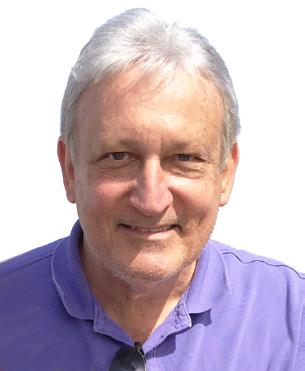


Actual Answers (to Sixth Grade History Tests)
The name of the school is being withheld to protect the stupid.
1. Ancient Egypt was inhabited by mummies and they all wrote in hydraulics. ey lived in the Sarah Dessert. e climate of the Sarah is such that the inhabitants have to live elsewhere.
2. e Bible is full of interesting caricatures. In the rst book of the Bible, Guinessis, Adam and Eve were created from an apple tree. One of their children, Cain, asked, “Am I my brother’s son?”

3. Moses led the Hebrew slaves to the Red Sea, where they made unleavened bread, which is bread made without any ingredients. Moses went up on Mount Cyanide to get the ten commandments. He died before he ever reached Canada.
4. Solomom had three hundred wives and seven hundred porcupines.
5. e Greeks were a highly sculptured people, and without them we wouldn’t have history. e Greeks also had myths. A myth is a female moth.
6. Actually, Homer was not written by Homer but by another man of that name.
7. Socrates was a famous Greek teacher who went around giving people advice. ey killed him. Socrates died from an overdose of wedlock. A er his death, his career su ered a dramatic decline.
8. In the Olympic games, Greeks ran races, jumped, hurled biscuits, and threw the java.
9. Eventually, the Romans conquered the Greeks. History calls people Romans because they never stayed in one place for very long.
10. Julius Caesar extinguished himself on the battle elds of Gaul. e Ides of March murdered him because they thought he was going to be made king. Dying, he gasped out: “Tee hee, Brutus.”
11. Nero was a cruel tyranny who would torture his subjects by playing the ddle to them.
12. Joan of Arc was burnt to a steak and was cannonized by Bernard Shaw.
13. Finally, Magna Carta provided that no man should be hanged twice for the same o ense.
14. In midevil times most people were alliterate. e greatest writer of the futile ages was Chaucer, who wrote many poems and verses and also wrote literature.
15. Another story was William Tell, who shot an arrow through an apple while standing on his son’s head.
16. Queen Elizabeth was the “Virgin Queen.” As a queen she was a success. When she exposed herself before her troops they all shouted “hurrah.”
17. It was an age of great inventions and discoveries. Gutenberg invented removable type and the Bible. Another important invention was the circulation of blood. Sir Walter Raleigh is a historical gure because he invented cigarettes and started smoking. And Sir Francis Drake circumcised the world with a 100-foot clipper.
18. e greatest writer of the Renaissance was William Shakespeare. He was born in the year 1564, supposedly on his birthday. He never made much money and is famous only because of his plays. He wrote tragedies, comedies, and hysterectomies, all in Islamic pentameter. Romeo and Juliet are an example of a heroicouplet. Romeo’s last wish was to be laid
by Juliet.
19. Writing at the same time as Shakespeare was Miguel Cervantes. He wrote Donkey Hote. e next great author was John Milton. Milton wrote Paradise Lost. en his wife died and he wrote Paradise Regained.
20. During the Renaissance America began. Christopher Columbus was a great navigator who discovered America while cursing about the Atlantic. His ships were called the Nina, the Pinta, and the Santa Fe.
21. Later, the Pilgrims crossed the ocean, and this was called Pilgrim’s Progress. e winter of 1620 was a hard one for the settlers. Many died and many babies were born. Captain John Smith was responsible for all this.
22. One of the causes of the Revolutionary War was the English put tacks in their tea. Also, the colonists would send their parcels through the post without stamps. Finally the colonists won the War and no longer had to pay for taxis.
23. Delegates from the original 13 states formed the Contented Congress. omas Je erson, a Virgin, and Benjamin Franklin were two singers of the Declaration of Independence. Franklin discovered electricity by rubbing two cats backwards and declared, “A horse divided against itself cannot stand.” Franklin died in 1790 and is still dead.
24. Soon the Constitution of the United States was adopted to secure domestic hostility. Under the constitution the people enjoyed the right to keep bare arms.
25. Abraham Lincoln became America’s greatest Precedent. Lincoln’s mother died in infancy, and he was born in a log cabin which he built with his own hands. Abraham Lincoln freed the slaves by signing the Emasculation Proclamation. On the night of April 14, 1865, Lincoln went to the theater and got shot in his seat by one of the actors in a moving picture show. e believed assinator was John Wilkes Booth, a supposingly insane actor. is ruined Booth’s career.
26. Meanwhile in Europe, the enlightenment was a reasonable time. Voltaire invented electricity and also wrote a book called Candy. Gravity was invented by Issac Walton. It is chie y noticeable in the autumn when the apples are falling o the trees.
27. Johann Bach wrote a great many musical compositions and had a large number of children. In between he practiced on an old spinster which he kept up in his attic. Bach died from 1750 to the present. Bach was the most famous composer in the world and so was Handel. Handel was half German half Italian and half English. He was very large.
28. Beethoven wrote music even though he was deaf. He was so deaf he wrote loud music. He took long walks in the forest even when everyone was calling for him. Beethoven expired in 1827 and later died for this.
29. e French Revolution was accomplished before it happened and catapulted into Napoleon. Napoleon wanted an heir to inherit his power, but since Josephine was a baroness, she couldn’t have any children.
30. e sun never set on the British Empire because the British Empire is in the East and the sun sets in the West. Queen Victoria was the longest queen. She sat on a thorn for 63 years. She was a moral woman who practiced virtue. Her death was the nal event which ended her reign.
31. e nineteenth century was a time of a great many thoughts and inventions. People stopped reproducing by hand and started reproducing by machine. e invention of the steamboat caused a network of rivers to spring up. Cyrus McCormick invented the McCormick raper, which did the work of a hundred men. Louis Pasteur discovered a cure for rabbis. Charles Darwin was a naturalist who wrote the Organ of the Species. Madman Curie discovered radio. And Karl Marx became one of the Marx Brothers.
THE NETWORK | DECEMBER 2018 8
the network free v Searchforcrest network Talk is cheap. Until you hire a lawyer.
with nothing, and I still have most
I
thenetwork EXECUTIVE STAFF
ANDREW A. FELDER
Publisher/Managing Editor aafelder@crestpublicationsgroup.com
NICK FELDER
Graphic Designer
MARK ANGLE
Director of Business Development
mark@crestnetwork.com
thenetwork CONTRIBUTING EDITORS
ANGELA O’BYRNE, AIA


Amazing Buildings
ROSE MARY RUMBLEY Herstory
ANTHONY BARBIERI Legal
JULIE BRAND LYNCH Professionals on the Move

thenetwork ADVISORY BOARD
ANDY GABEHART
President & CEO of Office Interiors Group, 247Workspace.com, United Electronics Recycling


KIM GHEZ
Director of Marketing, Presidio Title
KRISTIN HIETT, CAE
Executive Director/CEO – IREM Dallas Chapter

KIM HOPKINS
Executive Director, CREW Dallas

JONATHAN KRAATZ
Executive Director, USGBC Texas Chapter


MYCHELE LORD CEO, Lord Green Strategies
DOUG MCMURRY
Executive Vice President, San Antonio AGC
LAURA MCDONALD STEWART, RID, FASID, IIDA, LEED AP Editor of PLINTH and CHINTZ, an interior design blog Manager of METROCON Expo and Conference
JESSICA WARRIOR Director of Property Management, Granite Properties
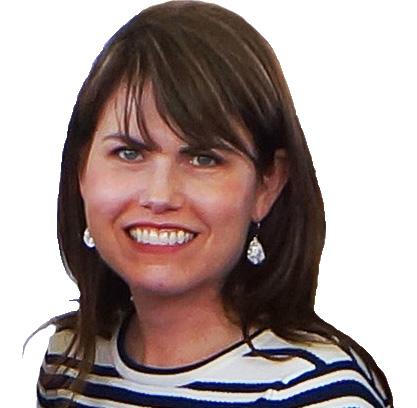

If you’re reading this, you know people in this industry –people who provide products or services, people who could benefit by broadening their customer base, people who will thank you for introducing them to the network
You can be employed full time, employed part-time, unemployed, disabled, retired –it doesn’t matter! You can earn generous commissions selling advertising in the network, Texas’s most widely read real estate publication.
Just call 682.224.5855 or email editor@crestnetwork.com and mention this ad to learn more about this advertising sales opportunity
is a video, a multi-page brochure or an audio recording embedded at this place in


DECEMBER 2018 | THE NETWORK 9
HELP WANTED This publication is DIGITALLY ENHANCED When you
our
Go to www.crestnetwork.com and click on that symbol. READER ALERT!
see this symbol on an ad or in an article throughout the pages of the network, it means there
digital edition.
Right: Andy Gabehart Kim Ghez Kristin Hiett Kim Hopkins
it.
Below: Jonathan Kraatz Mychele Lord Doug McMurry Laura McDonald Stewart Jessica Warrior
started
of
EMILY COWPER emily@lordgreenstrategies.com
Emily Cowper is a Creative Services Associate at LORD Green Strategies

A Universal Recycling Ordinance for Dallas The City Joins Fort Worth, Austin and San Antonio
In June, the Dallas City Council voted unanimously to approve a Universal Recycling Ordinance (URO) that will require multifamily apartment complexes in Dallas with eight units or more to implement recycling programs for their residents by 2020. is mandate has the potential to make a signi cant impact on the City of Dallas and its apartment-dwelling citizens.

At LORD Green Strategies, we approach research and projects with Environmental, Social, and Governance (ESG) factors in mind. is article examines the environmental impacts, social in uences, and governance circumstances of the URO and demonstrates that goals of environmental stewardship, economic growth, and governmental transparency are inextricably linked.
Environmental
e URO is part of a larger plan developed in 2011 by the City of Dallas known as e Local Solid Waste Management Plan. is “Zero-Waste” Plan is the beginning of a long-term systematic e ort to reduce waste volume and maximize diversion throughout Dallas. e Plan emphasizes approaching waste reduction goals comprehensively—taking in to account entire processes, systems, and technologies. It recommends executing large-scale e orts, such as the multifamily URO, to encourage reuse and recycling at the property level.
The URO will require apartment complexes to provide capacity for 11 gallons of recycling a week per unit. Apartments can use dumpsters, bins, compactors, and roll cart services (recycling valet) to collect materials. Minimum parking requirements may also be reduced if additional space is needed to house these containers.





Social
According to the City of Dallas, approximately 50% of Dallas citizens live in multifamily housing complexes. Despite generating over half of residential waste totals, only a quarter of multifamily residences were o ering recycling, and little progress was being made with voluntary compliance.


In a 2016 resident survey conducted by the Apartment Association of Greater Dallas, the number one reason given for not recycling was “ ere’s not enough space”. To address the lack of space, stakeholders requested that the City provide recycling roll cart collection.
Outreach initiatives like social events and informative seminars were held as part of a comprehensive strategy to increase local awareness. Other methods such as social media, digital advertising, and a Sanitation Services mobile app were implemented to promote recycling participation.
Governance

e City held multiple stakeholder meetings to identify strategies for maximum waste diversion. Major stakeholders include the Texas Campaign for the Environment, e Apartment Association of Greater Dallas (AAGD), and Building Owners and Managers Association (BOMA) Dallas. ese meetings were held to establish goals, de ne initiatives, create and distribute surveys, and develop technical materials. As a result, stakeholders could better understand possible challenges and work to provide more comprehensive solutions.
Dallas joins several Texas cities including Austin, Fort Worth, and San Antonio in passing a multifamily URO. ese cities have committed to an

ongoing investment in recycling education, outreach, and technology. According to a study by Environmental Protection Agency, the City of Austin has achieved an impressive 42% diversion rate—7% higher than the national average. With this being said, the multifamily URO is a huge step for the City of Dallas in working towards the “Zero-Waste” goals outlined in e Local Solid Waste Plan.
e City of Dallas’ URO for multifamily apartment complexes is a step in the right direction in achieving the “Zero-Waste” goals outlined in the comprehensive Local Solid Waste Plan. By 2020, all apartment complexes in Dallas will be required to provide recycling programs for their residents. It is more than a recycling mandate; it is a comprehensive and systemic process that encompasses environmental factors as well as economic in uences and governmental processes.
City of Dallas Multifamily Recycling Ordinance:




https://dallascityhall.com/government/citymanager/Documents/FY17-18%20 Memos/June-13%2C-2018-Council-Agenda-Item-45-Multifamily-RecyclingOrdinance_Memo.pdf
Resources:

https://dallascityhall.com/departments/sanitation/pages/recycling.aspx




What

THE NETWORK | DECEMBER 2018 10
the
a
A clear conscience is usually
sign of
bad memory.
Can I recycle? ¿Que puedo reciclar? Mixed Paper PapelMixto Periódicos,Revistas, PapeldeOficina,etc. Cardboard & Boxboard CajasCartónydecartón Contenedores devidrio Glass Bottles & Jars Latas Plastic
Plásticos(#1-5,7) Cartons Cartón (214) 670-4475 dallasrecycles.com Plast c Bags Bolsas de plástico Styrofoam Utensilios de polietileno y plástico Shredded Paper Papel triturado Metal Cans Pub. 14/15: 19
(#1-5 7)
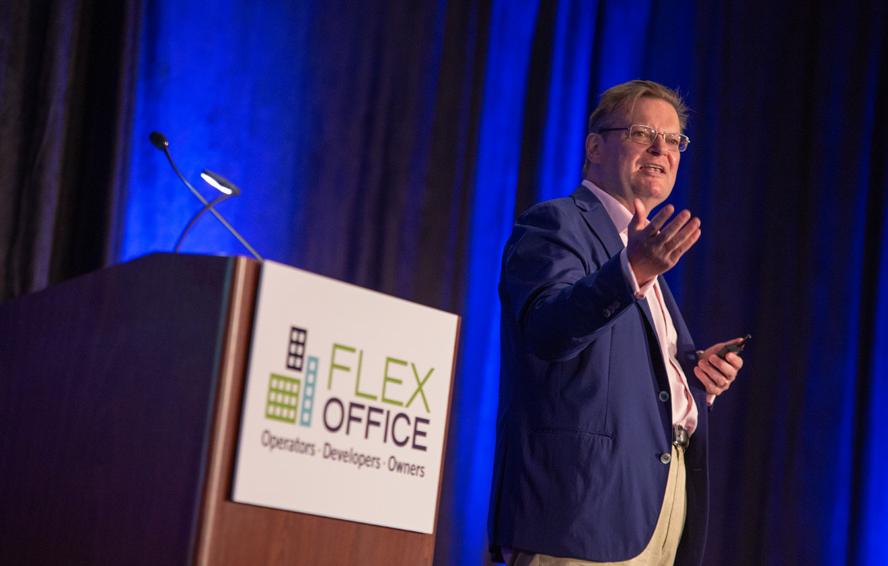




I find it ironic that the colors red, white, and blue stand for freedom until they are flashing behind you. 6 Our A liates | On the Cover 7 Contributing Writers 8 Editor’s Note/InBox 9 Executive Sta and Advisory Board 12 You Need to Know – Gift Cards, The Fourth Estate, Weather Terms, Ending in ‘F’’, Streetwise 25 JLL 29 CBRE 45 Product Showcase 46 The Resource Page 55 Shout Outs 55 In the News 56 Professionals on the Move 57 In the Loop 57 You’re Going to Call Me What? 58 What’s in a Name? 60 The Links Marketplace and Directory 62 Back Page: Our Advertisers/ Contest Winners/Answers/ Coming Next Issue IBC Contest: Presidential Middle Names 14 The Museum of Tomorrow 16 St. Govan’s Chapel 16 The Silo 24 The Simone Handbag Museum 27 Flame Towers 31 Tropea 37 Namba Parks 40 The Royal Ontario Museum DEC2018 • VOL 26 • ISSUE 4 16 20 27 37 13 The Story of the Angel 18 Rebels 19 Whoops! 23 Doing Time 28 Political Corner 35 Just Did it 36 Advertising Faux Pas 39 Calling all lexophiles… 39 Summer’s Winter Reading List 40 Men Are Just Happier People 47 Senior Musings 51 The Supremes 54 T-Shirts 61 Huh? 11 TEXO 11 ULI San Antonio 11 USGBC 14 IREM Fort Worth 15 IREM Dallas 18 AGC San Antonio 19 BOMA Dallas 19 BOMA Fort Worth 19 North Texas CCIM 20 NAIOP 20 AIA Dallas 24 SCR 28 IREM National 36 NAWIC 36 CREW Dallas 36 IREM Houston 45 AIA San Antonio 5
10
A Universal
Recycling
Ordinance for Dallas
Emily Cowper explains what it means as the city joins Fort Worth, Austin and San Antonio.
21 Modern Lantern
22
26
30
32
34
38
41
An interview with Stephen Fitzwater of the Fort Worth-based cordless lighting solutions company.
Skyscraping
Up Up and Away – a pictorial of some of the tallest buildings in the world.

The Buildings of Guiyang
There’s truly some amazing architecture in this regional Chinese capital.
The Texas Historical Commission


The state agency is responsible for the preservation of the state’s 22 historic sites.
Amazing Buildings – Building Community Up
Contributing Editor Angela O’Byrne pro les The Interlace and the rise of the vertical village.

The Sister Cities Program
Ft. Worth is the rst in our series of the international relationships Texas cities develop and maintain.

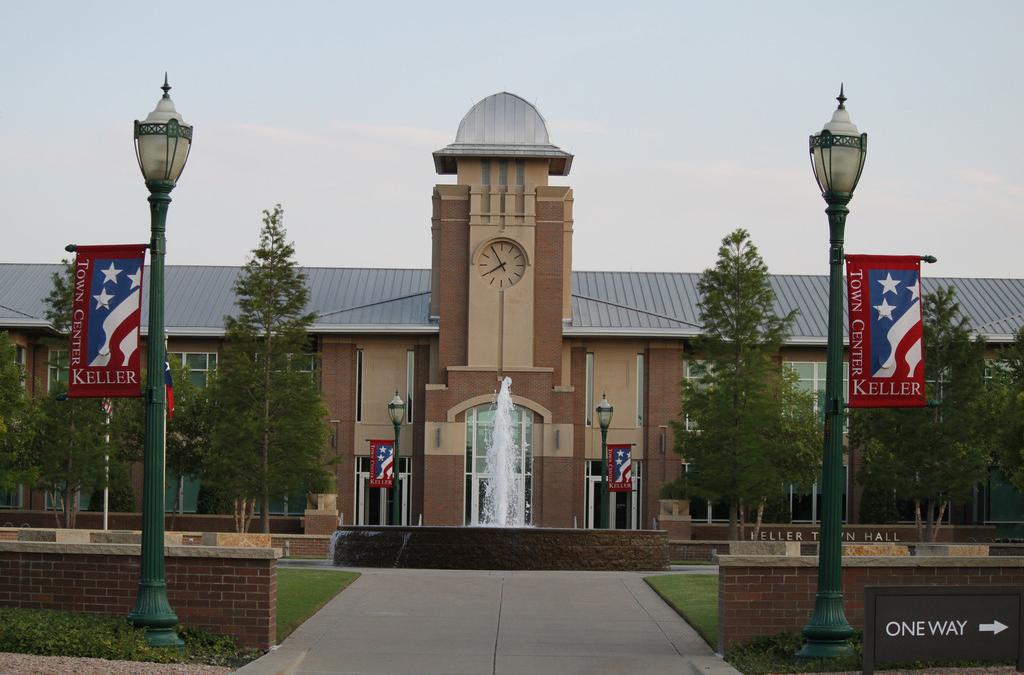
Objections That Derail Salespeople and How to Deal with Them
Expert Jeb Blount o ers insightful guidance.
Automatic External Debrillators
Matt Muncie o ers advice on how to choose them and where to place them.
42 Real Estate of the Future – Oslo Airport City
44
Metrocon18
A recap and review by Laura McDonald Stewart.
47 Important Voices
Mechele Dickerson of the UT School of Law provides noteworthy information on how mortgage documents in Texas give unlawful power to lenders.
48
I wondered why the baseball was getting bigger. Then it hit me.
Herstory – The Hero of Bataan
Contributing Editor Rose-Mary Rumbley recounts the story of World War II’s General Johnathan
Mayhew Wainwright IV.
49 The History Page
The Birthplace of American Government: Federal Hall in New York City.
50 Legal View: Seizing Assets
52
54
Attorney and Contributing Editor Anthony Barbieri explains how to enforce a judgement.
Artchitecture
Philippe Charles Jacquet’s dreamlike landscapes seem to evoke the passage to another world.
The Safest Cities in Texas 2018
22 26 30
54 = = THE NETWORK | DECEMBER 2018 4
48














Your best friend may not what you do; but









Your buddy may not get what you do; but IFMA does, and we give you the resources and tools to do it.
“No one understands the unique challenges and rising demands of facility management better than fellow FMs. Through IFMA and my local IFMA chapter, I connect with a community of colleagues that I can relate to, learn from and consult with for the benefit of my career, my team and my facilities.”
 Diane Coles-Levine, MCR IFMA Professional Member Managing Partner, Workplace Management Solutions
Diane Coles-Levine, MCR IFMA Professional Member Managing Partner, Workplace Management Solutions



We do our job so that you can do yours.
connects and elevates recognition of facility professionals worldwide.

Membership benefits that work as hard as you do.
Local & Global Networking
FM Education & Training
Professional Credentialing


























Industry-leading FMJ Magazine


FM-specific Conferences & Events












White Papers & How-to Guides



Industry Trend & Forecasting Reports
Knowledge Library Information Resource





























Career Assistance & Job Search




Global Representation & Support




















Connect to the people, programs and opportunities that can help you optimize your facilities, improve workplace performance and advance your career as a facility management professional.
www.ifma.org/IFMA-YOU

Make My IFMA, Your IFMA
JOIN IFMA TODAY





 Diane Coles-Levine, MCR IFMA Professional Member Managing Partner, Workplace Management Solutions
Diane Coles-Levine, MCR IFMA Professional Member Managing Partner, Workplace Management Solutions

























































































































































































































































 LAURA M CDONALD STEWART laura@plinthandchintz.com
LAURA M CDONALD STEWART laura@plinthandchintz.com

















































































































































































































































































































